Dublin to Cork
We departed Dublin with a drive-by of Kilmainham Gaol, where the leaders of the 1916 Easter Uprising were executed. Then it was fast along major roads to County Kildare and the Irish National Stud and Japanese Gardens.
Our tour of the Stud began at a statue of the founder, Colonel William Hall Walker. He had rather unusual opinions of horse breeding, believing that the moon and stars determined a horse’s racing ability, so he would determine which horses to keep or sell by their horoscope. His product raced well, whether by chance or design. Eventually the stud came into state hands, and the breeding program appears to have reverted to a more scientific approach based on blood-lines!

Our next stop was to admire a small horse – a Fallabella. While only about 8 hands, the Fallabellas are considered horses because of their proportions being that of a horse rather than a pony, however this example seemed rather over-fed.

In the opposite paddock were some ‘living legends’ retired racehorse geldings, out to pasture. These included Kicking King, Beef or Salmon, and Rite of Passage. There were also some mares and foals enjoying the meadow next door.
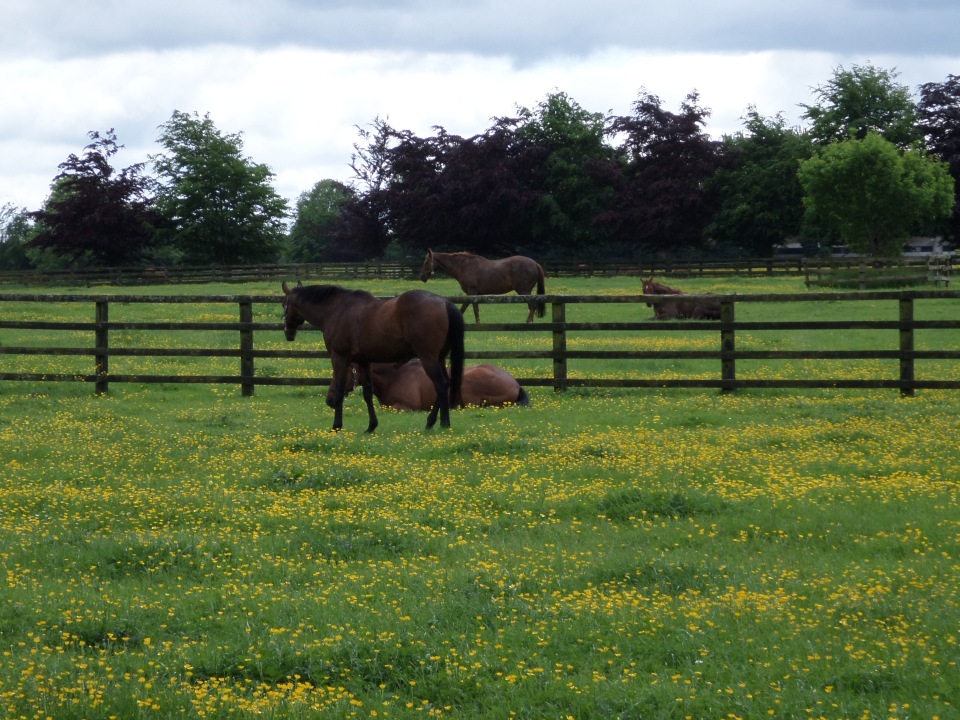
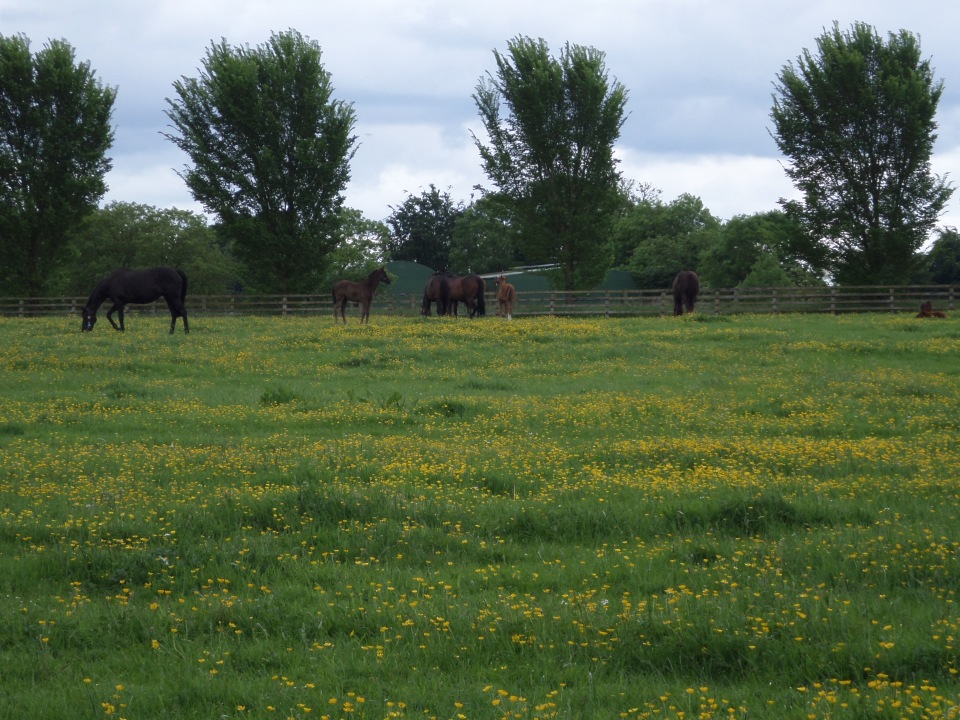
We then walked through a replica ‘bee-hive’ monastic cell (created to honour St Fiacre, who was heavily into gardens). This led us to the Stallion Paddocks, where we could see (behind double fences) Invincible Spirit, the top stallion and sire of many winners.
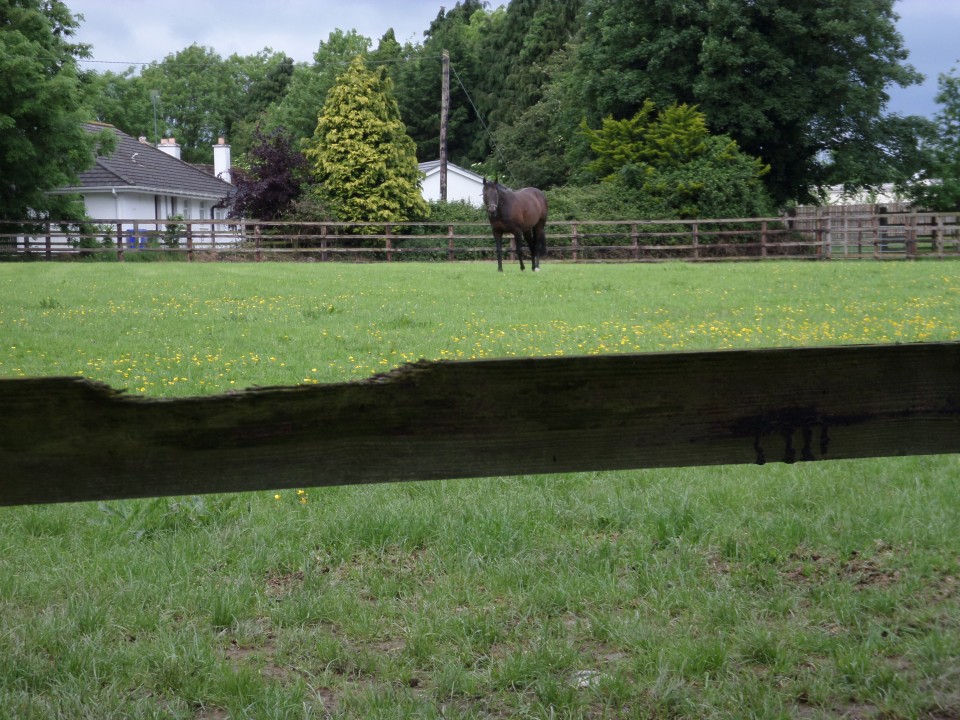
The Stallion Boxes were next, built with high ‘sky-lights’ so that the stallions could see the stars, or perhaps be better influenced by them. The stallions are brought in at night, perhaps influenced by the disappearance of a top stallion from another stud in the 1960s.
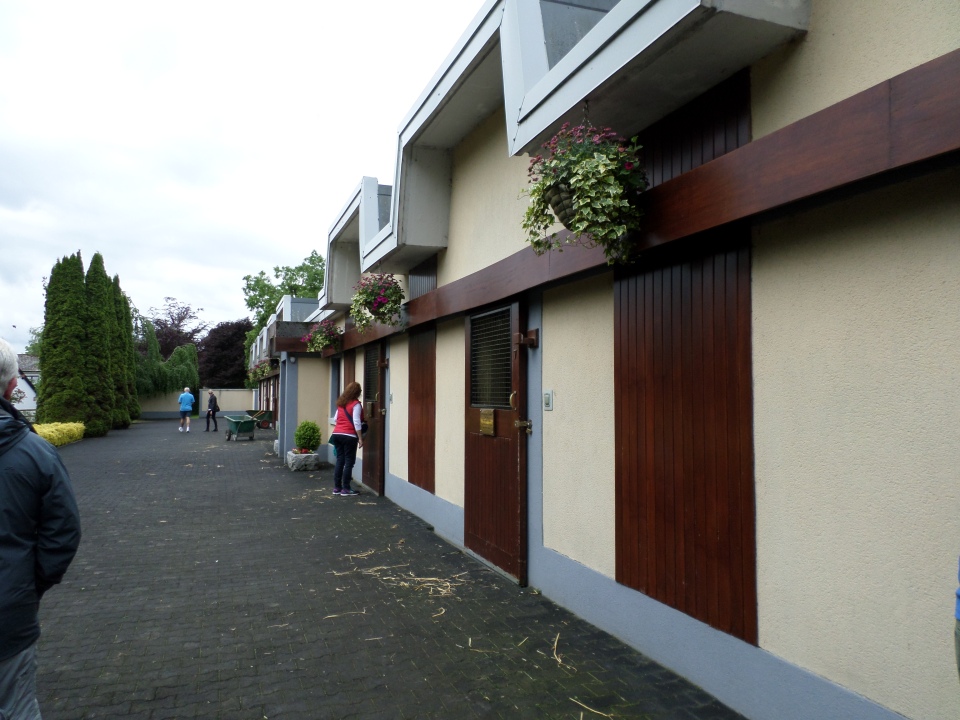

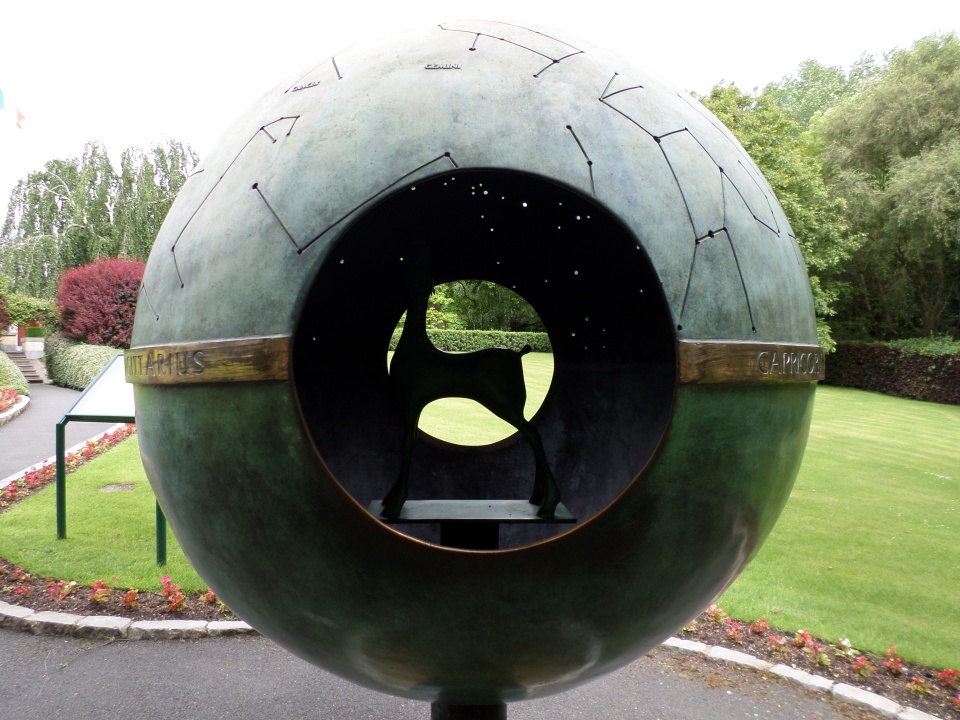
The stud has a museum in the front window of which is displayed the skeleton of Arkle, a top racehorse of the 1960’s, who had to be put down after breaking a small bone in his ankle. I remember hearing about his races in the late 1960’s.
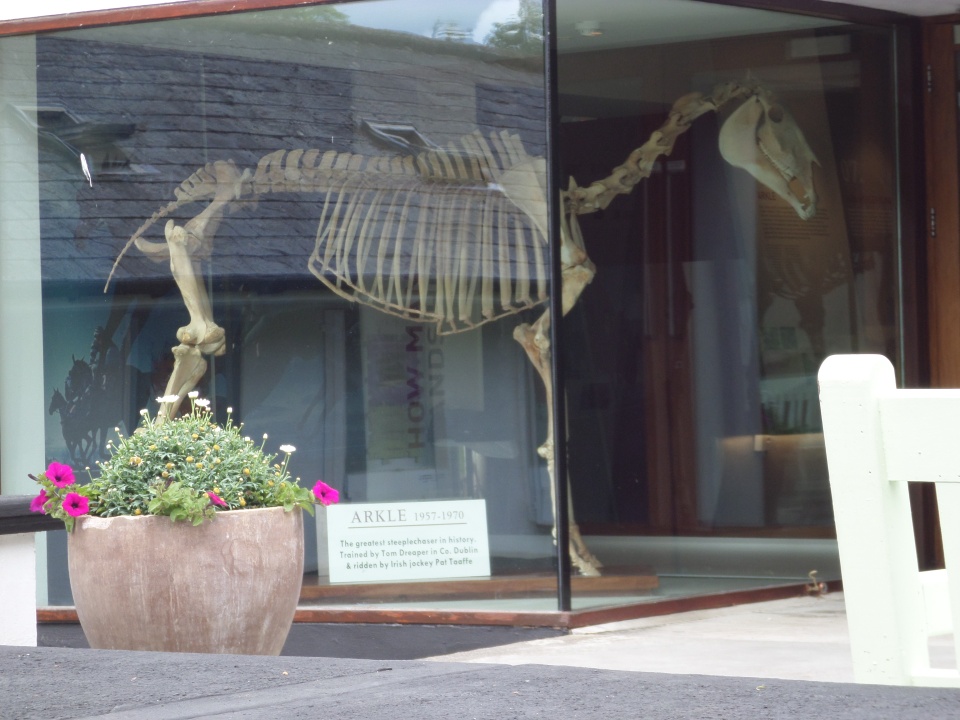
We were not taken into the Sun Chariot Yard, where the mares and foals are kept, and where the foaling unit is, instead we were hurried into the Japanese Gardens.

The Japanese Gardens were rather beautiful, and formed an allegory of the life journey. I took many photos.
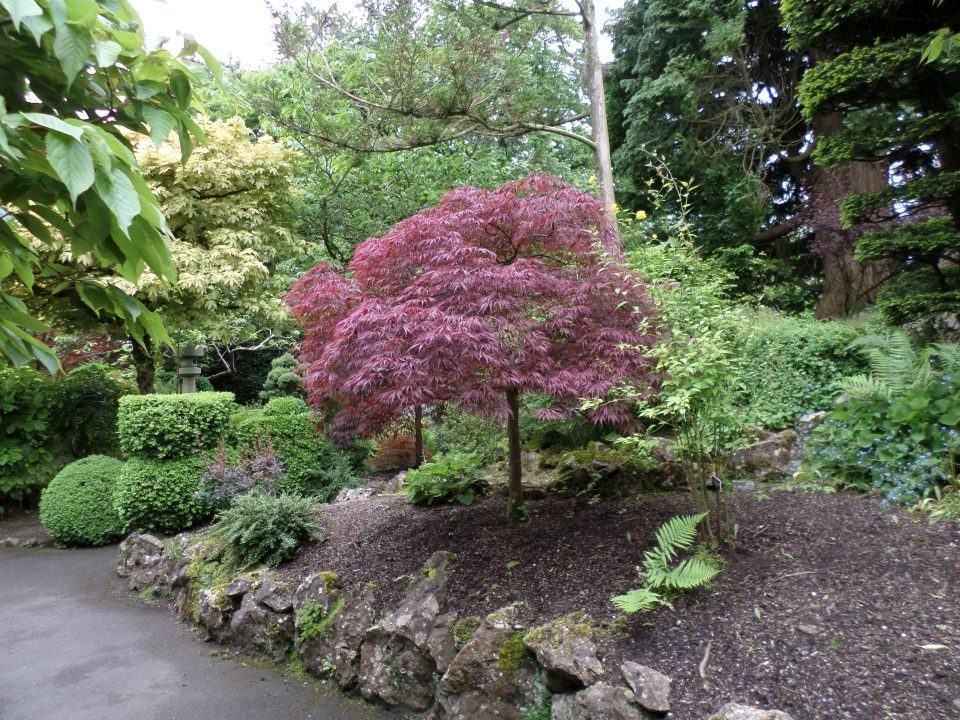
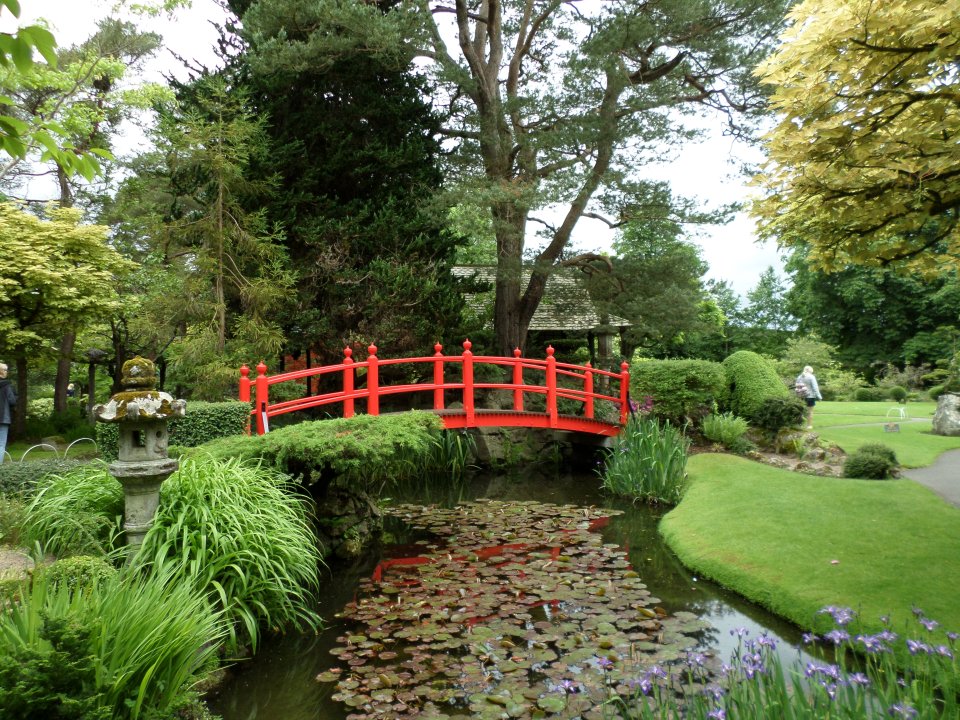
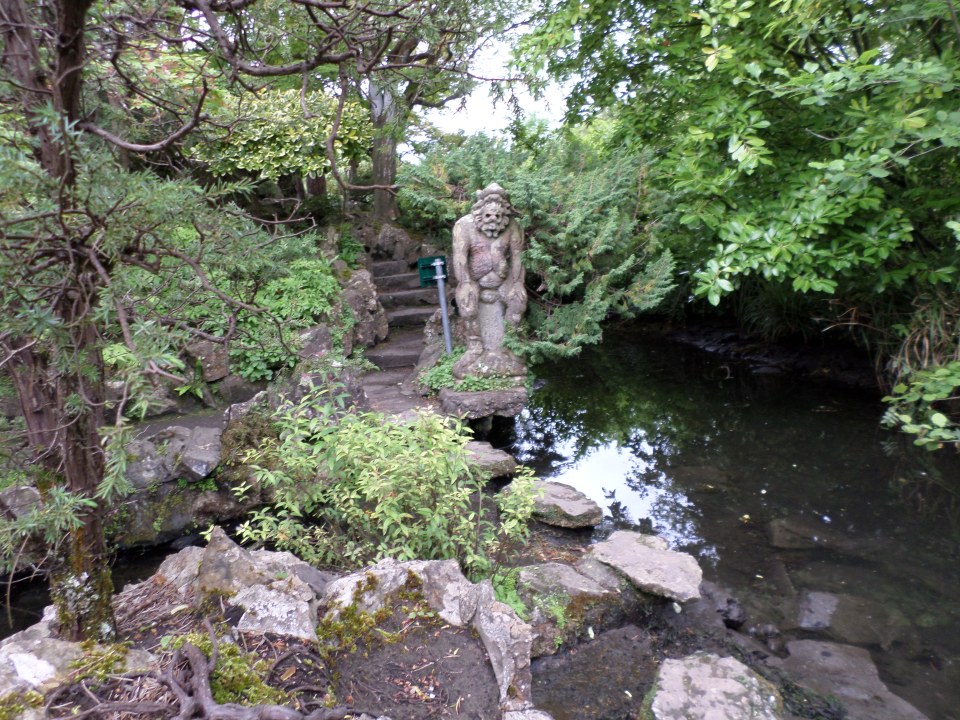

Our next aim point was Clonoulty, in County Tipperary, and a memorial to 13 Irish lads who burnt down an infirmary that had been co-opted to house British constabulary, in 1815. The ring-leader was hung and the rest were transported to Australia. One of them, ‘Ned’ Ryan served his time, getting his ticket of leave in 1825. He squatted in the then remote area of Galong (between Boorowa and Yass) eventually acquiring quite a large package of land, but also being extremely generous and supporting the local community. See http://www.shamrockinthebush.org.au/history.htm
Our leader got heaps for admitting to not knowing how to pronounce Galong or Boorowa, and appeared bemused that we had not heard of Ned Ryan or his sanctuary for the disadvantaged of rural NSW in the mid-1800’s. Added to this the coach driver was not familiar with the route and we ended up driving very slowly through a town that we could have avoided, and then found that the memorial was not in Clonoulty at all, but in the village of Bannagh, down the road. However, we found the memorial, dutifully photographed it and got back on the bus. We were now running an hour behind time, not helped by three tractors (one of them twice, it passed us while we were photographing) on the narrow roads.

The Rock of Cashel was next, a rather more conventional tourist attraction! We arrived much later than scheduled, but made it into a screening of an explanatory audio-visual presentation with seconds to spare. The Rock of Cashel is a limestone outcrop with a commanding view over the area about, as well as being fairly defendable. Thus it was a power-base for the Kings of Munster back to at least the fourth or fifth centuries, and was probably fortified at some time.
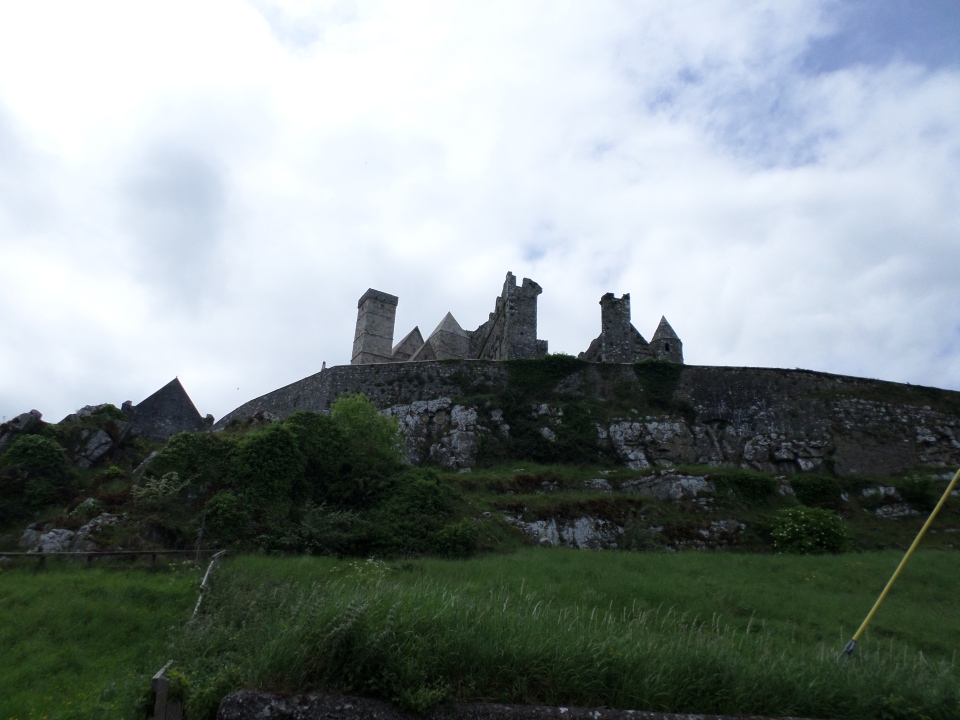
Rock of Cashel
In 1101, the Rock was given to the Church. The Round Tower dates from about this time, as does St Patrick’s Cross. St Patrick’s Cross is unusual in that it does not have the Celtic ring and has support verticals for the cross bar, one of which is missing. It is very weather worn so a replica is in the original’s position and the original is inside the Vicar’s Choral under-croft.
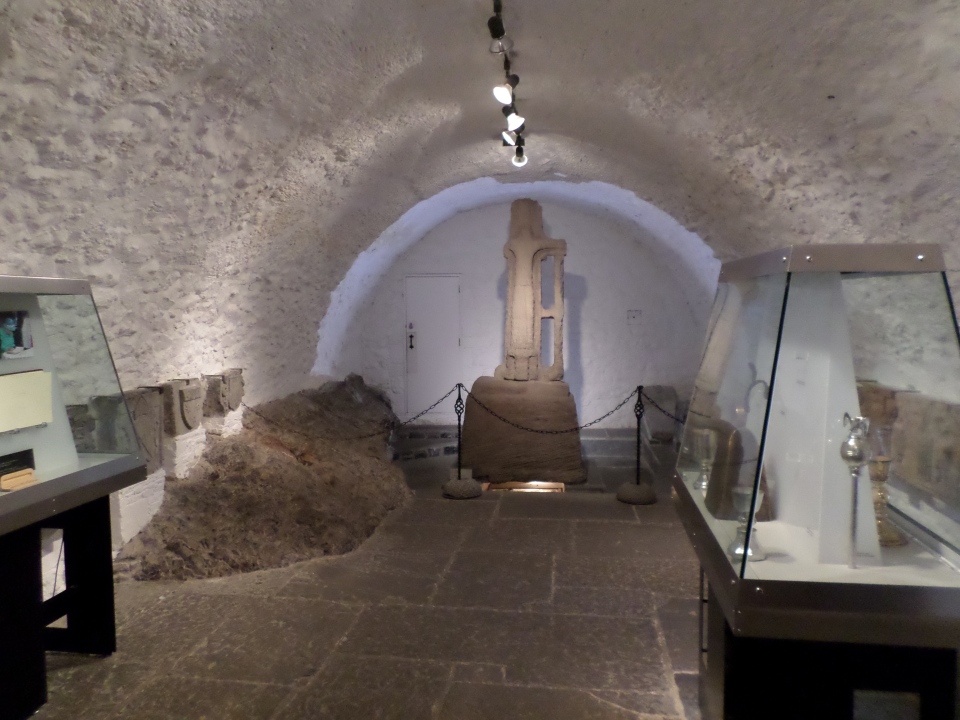
Also remaining from the early Monastic era is Cormac’s Chapel. It was beautifully decorated, originally, but now the paint has mostly gone. It has recently been restored and so appears a lighter shade than the rest of the buildings.
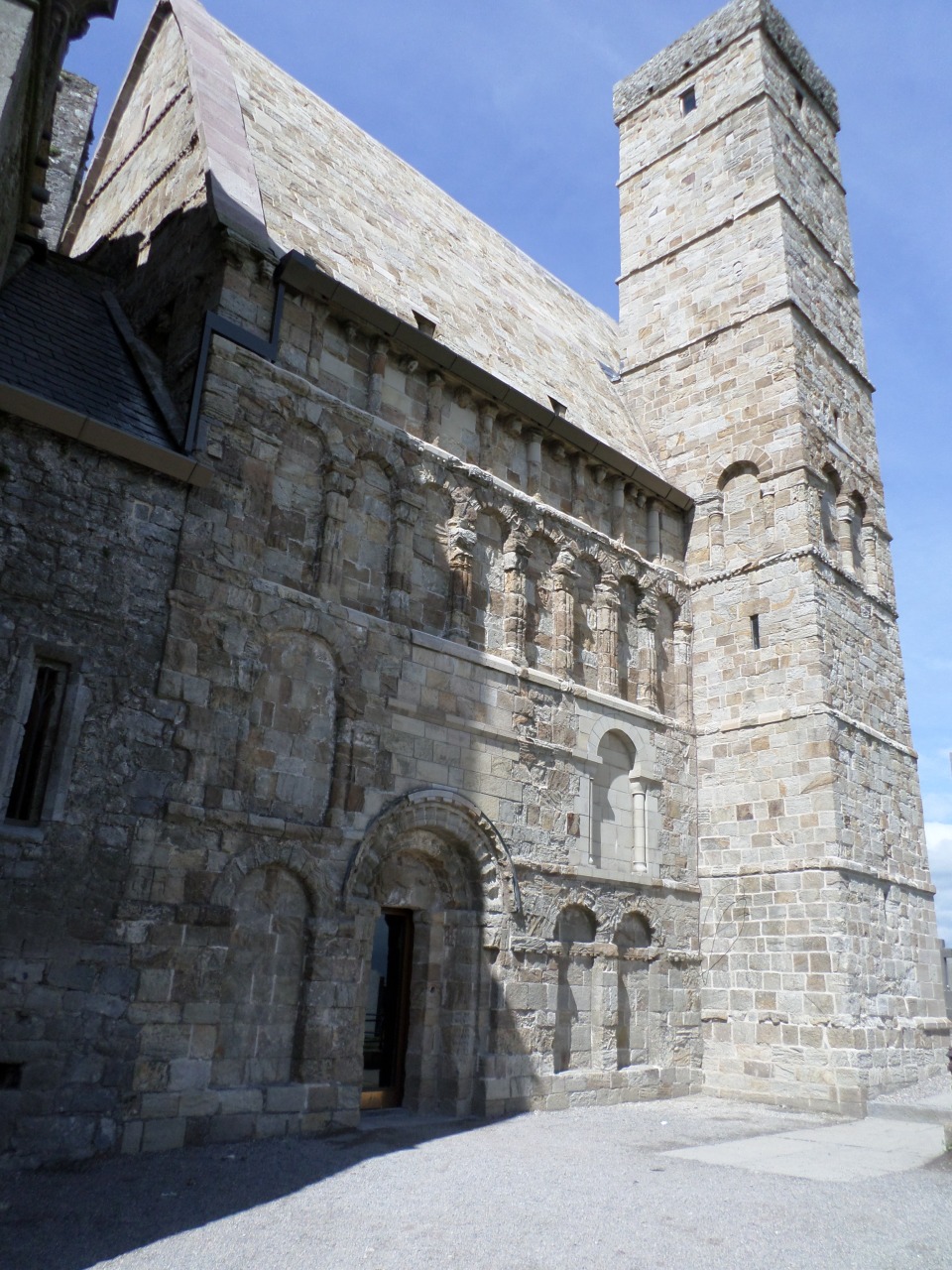
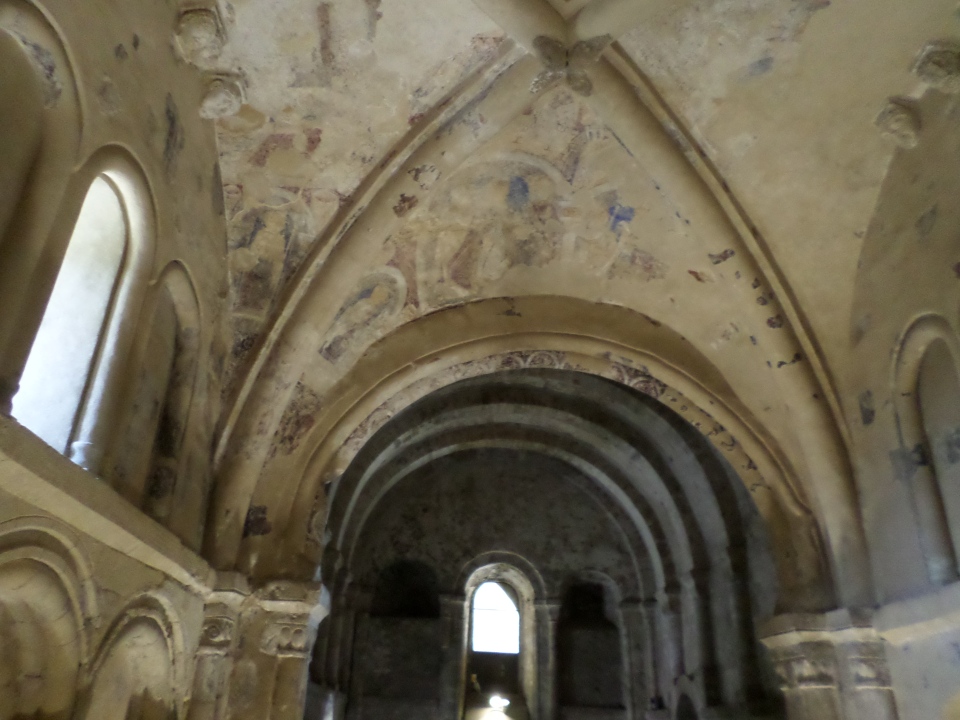
The large Cathedral dominates the site and dates from the 13th century, but was considerably altered in the early 15th century, when the accommodation for the Vicar’s Choral was also constructed. The Cathedral was in use until 1749, but thereafter was left to decay. The roof was gone by 1849, but it came into State possession in 1870 and conservation work has been ongoing.

It is a lovely site, with fantastic views over the green fields and town below.
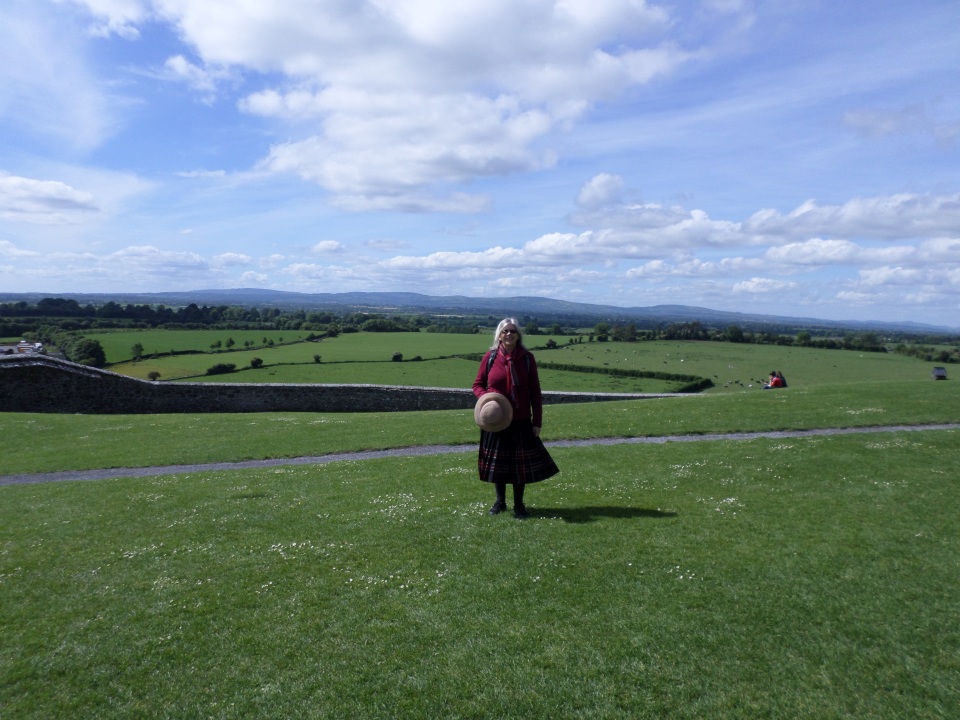
From the Rock of Cashel we had about an hour to drive to the outskirts of Cork, where we are staying in the Vienna Woods Hotel, which does have a lovely woodland setting.
Dublin 10
Today we were promised a bus tour of Dublin, but unfortunately the traffic chaos was against us seeing all that we could. We were taken up O’Connell Street and then down again, and along Abbey Street, and thus past the famous Abbey Theatre.
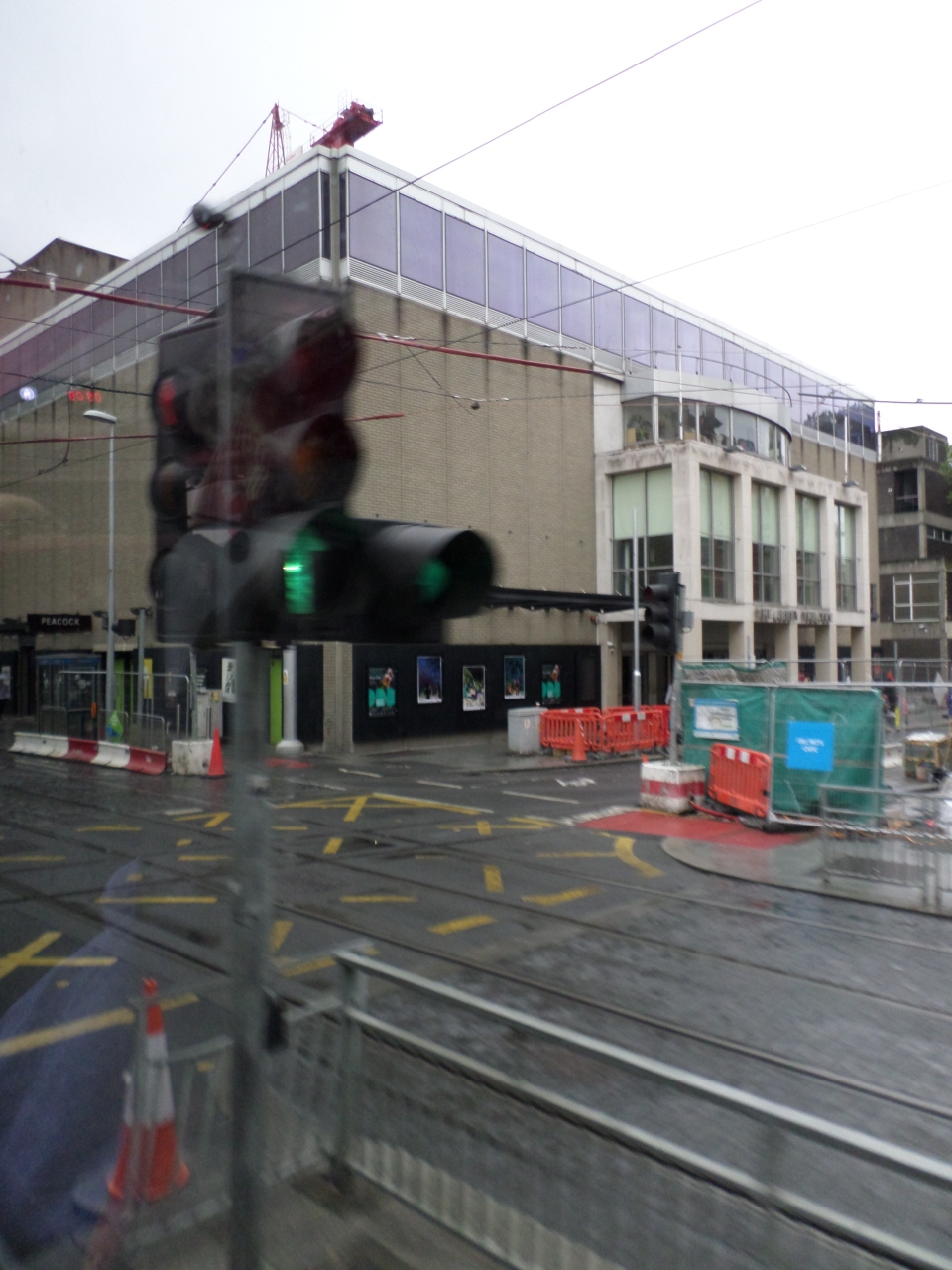
Our first stop of the day was at the Jennie Johnston, a replica of the Jennie Johnston that took emigrants to Canada during the Famine of the late 1840’s and 50’s. The Jennie Johnston holds the proud record of not having lost a single person during the crossings, mainly it appears because the Captain did not overcrowd the vessel, enough food was provided, the passengers were allowed on deck in fair weather and there was a doctor on board. On other ships up to half the passengers could be lost to typhoid, cholera or simple starvation. We were told a nicer story about a young couple who came aboard and not long after sailing, the wife gave birth to a baby boy – he was initially named Nicholas (after the owner of the ship) Johnston (after the ship) O’Reilly (for his father, of course). However, he ended up baptised with the Christian names of each of the crewmen in between the Nicholas and the Johnston! When the replica was on a sailing trip to America, some descendents of Nicholas turned up to visit the ship. On average there were 193 passengers per trip, but one time 250 were let aboard. It is a tiny ship; they must have been pressed in like sardines. The ship was set up with bunks to show the head to tail sleeping system.
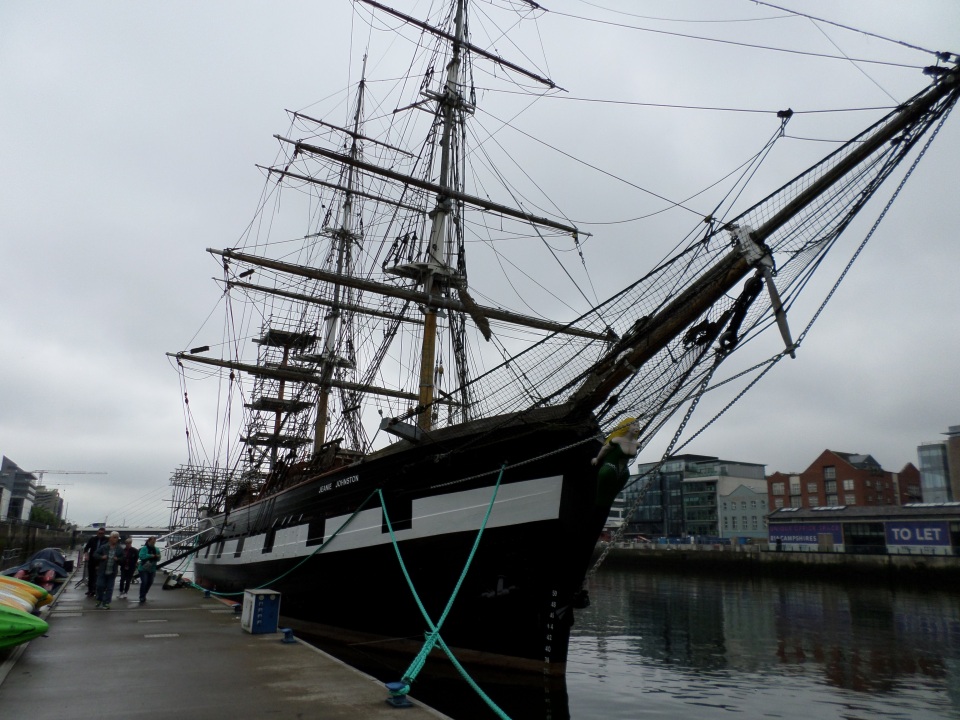
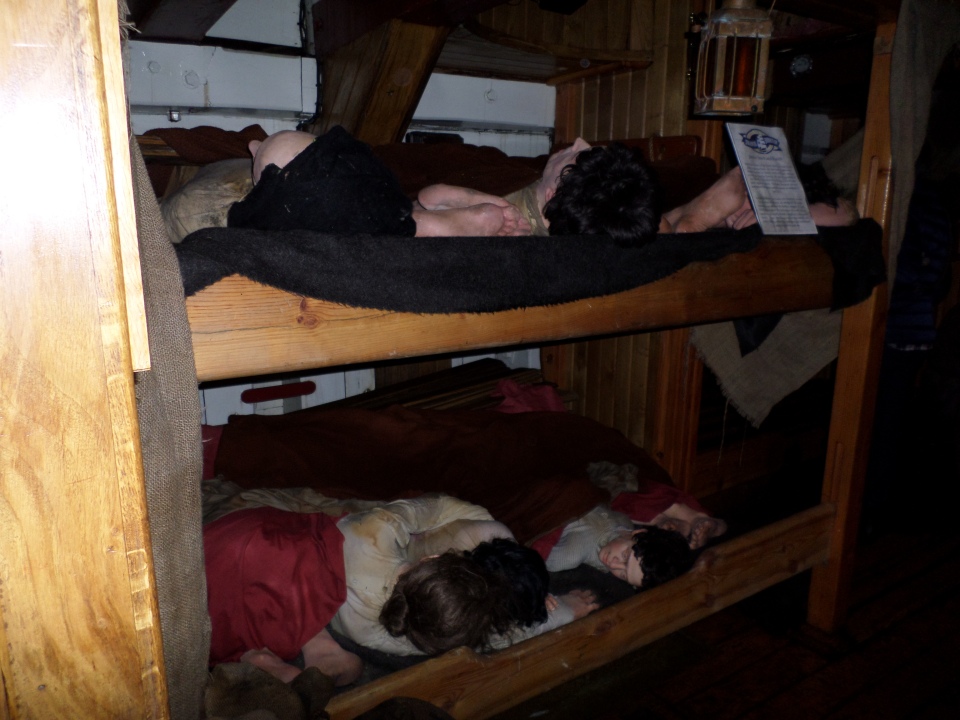
From the Jeannie Johnston we continued the tour of the City. The Famine Memorial – emaciated figures heading down the Quay-was near the ship.

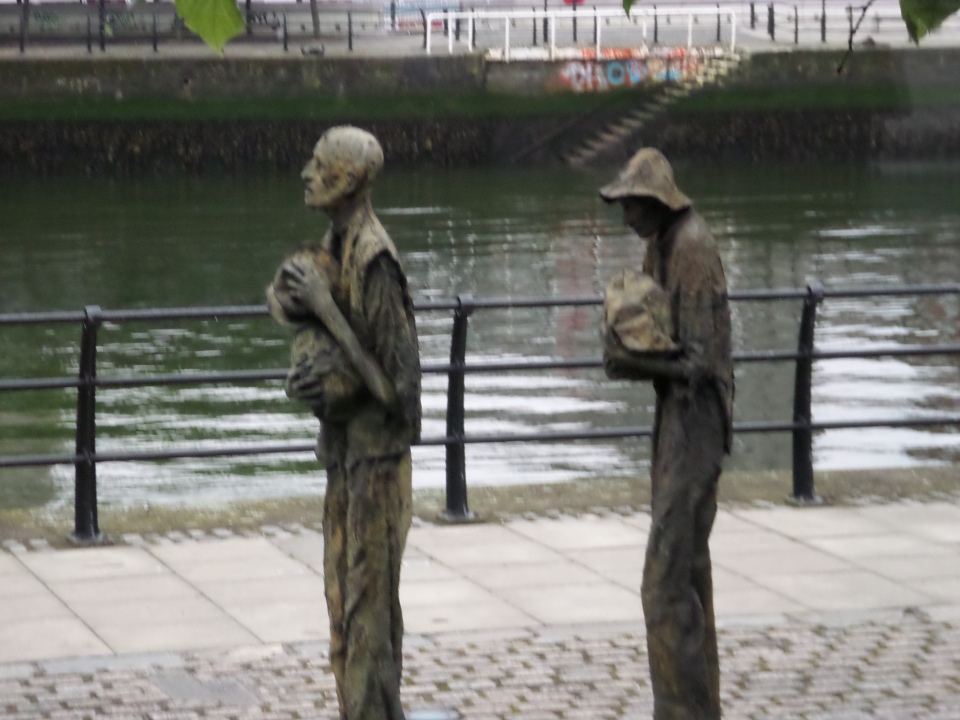
Thereafter, our tour faced blocked roads and slow traffic which led to some improvisation – however I did get a good shot of the Customs House
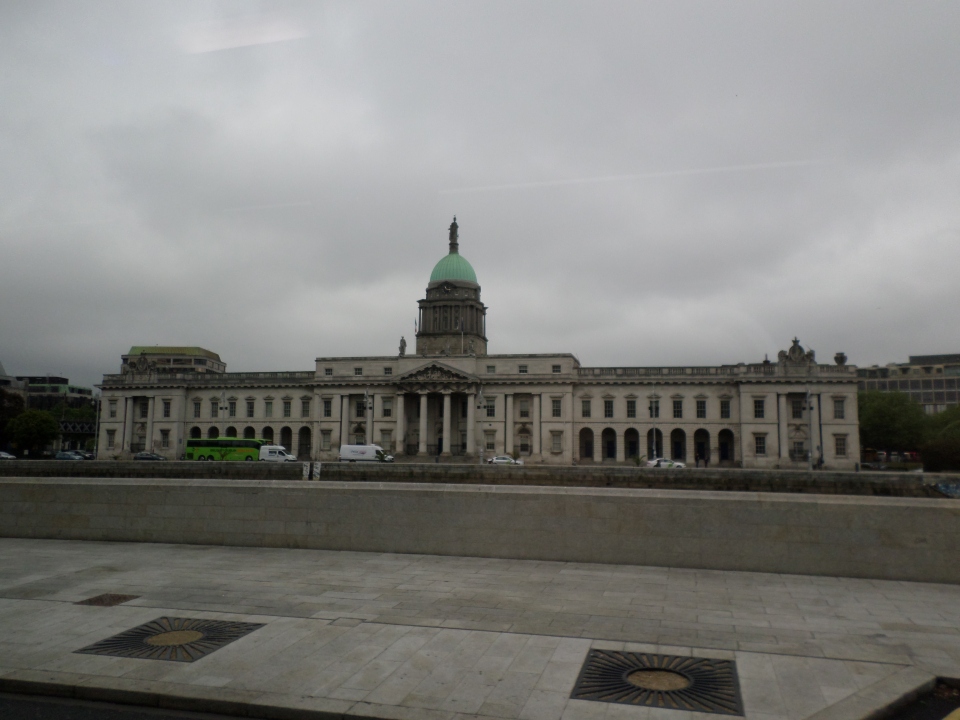
We did get to see Merrion Square and Fitzwilliam Square, the latter with the most decorative front door in Dublin, both lined with Georgian town houses – known as ‘four over basement’ as each is four floors high with a basement under for the servants.

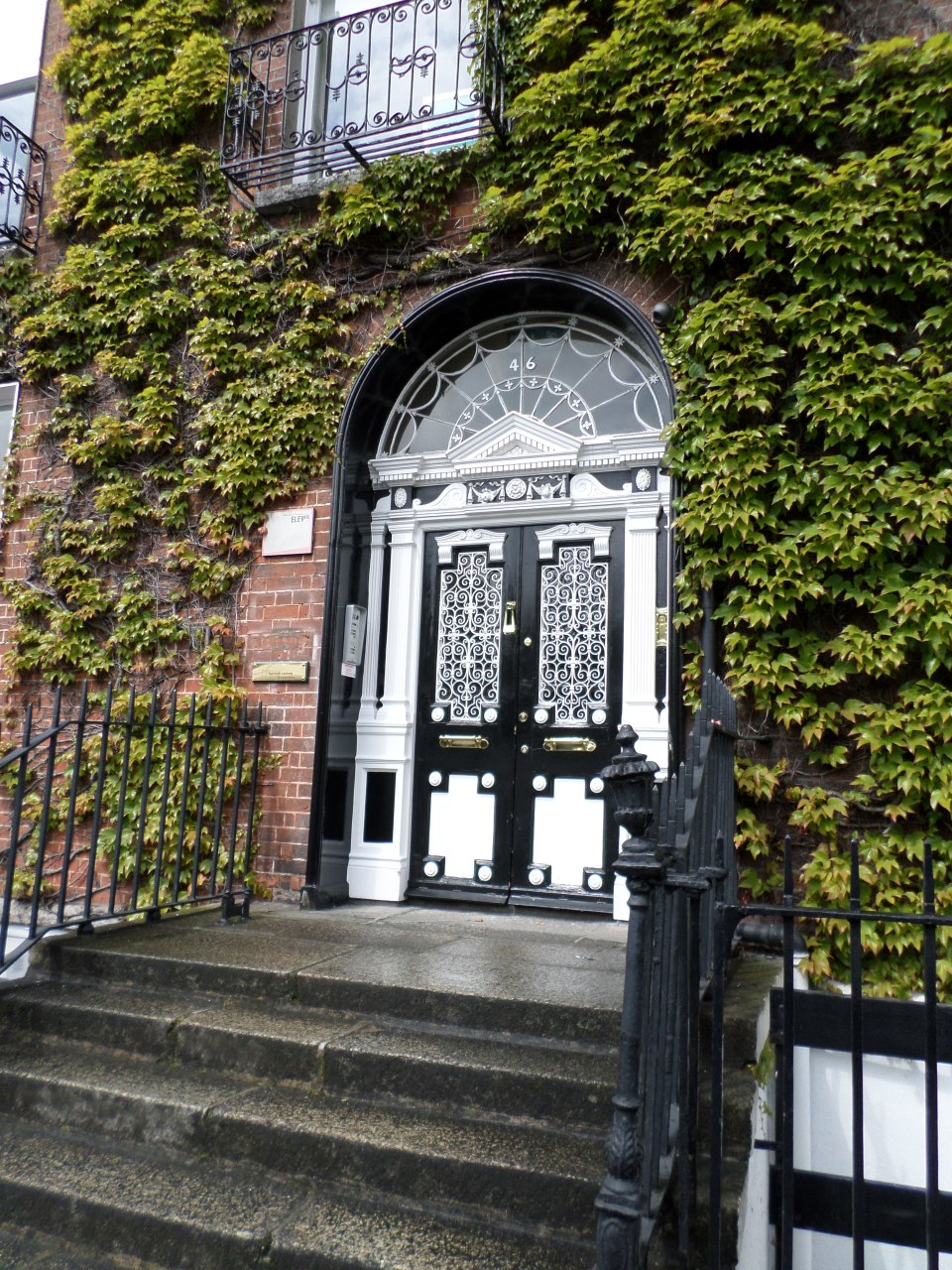
Later we were delivered to the Guinness Storehouse for a tour. The place was packed with people crawling at a snail’s pace past various displays about the making of beer. I soon found a way to bypass everything and get to the top floor and the Gravity Bar: touted as ‘a place to relax and enjoy spectacular panoramic views of Dublin with a complimentary pint’. There were so many people doing this that it was noisy and the views obscured by people standing in front of the windows. It was standing room only. Not conducive to relaxing reflection. I went down a floor to the quiet, almost deserted 1837 Bistro and enjoyed my smoked salmon salad in quiet solitude. This was accompanied by a complimentary glass of Guinness, but I did not drink much of it.
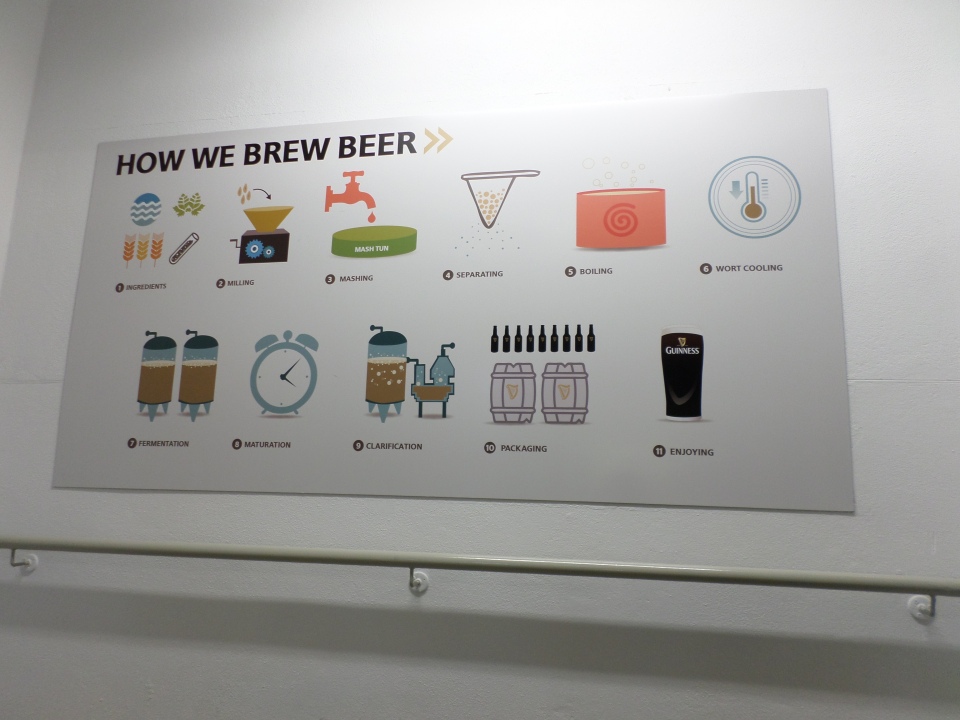
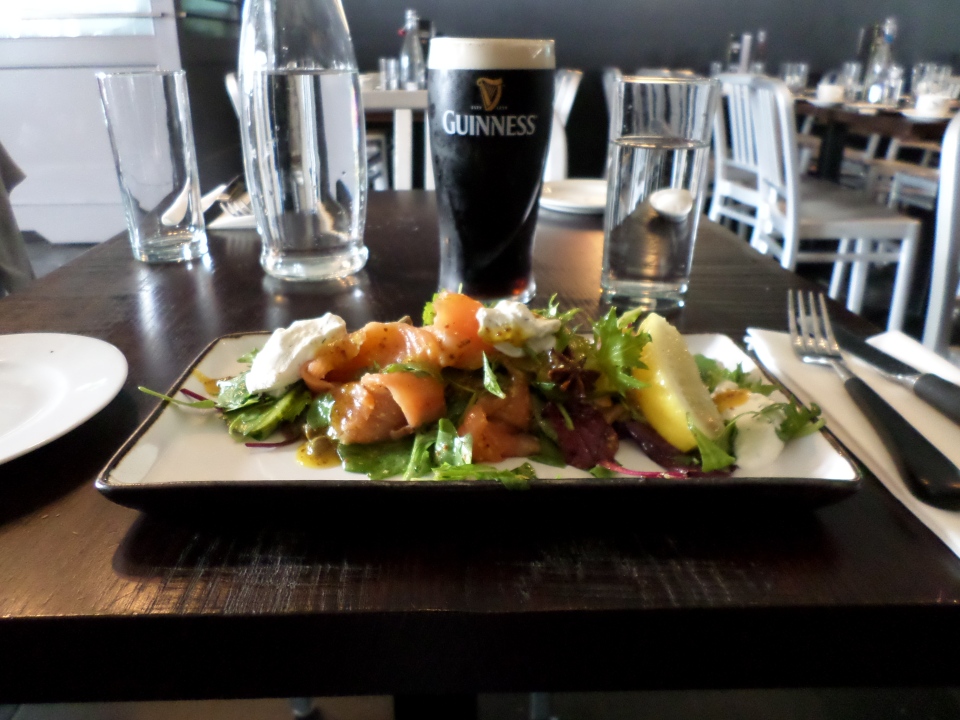
I rejoined the bus and my co-travellers (none of whom had come into the Bistro) at the designated time, somewhat distracted by a good-looking somewhat restive horse on the street.
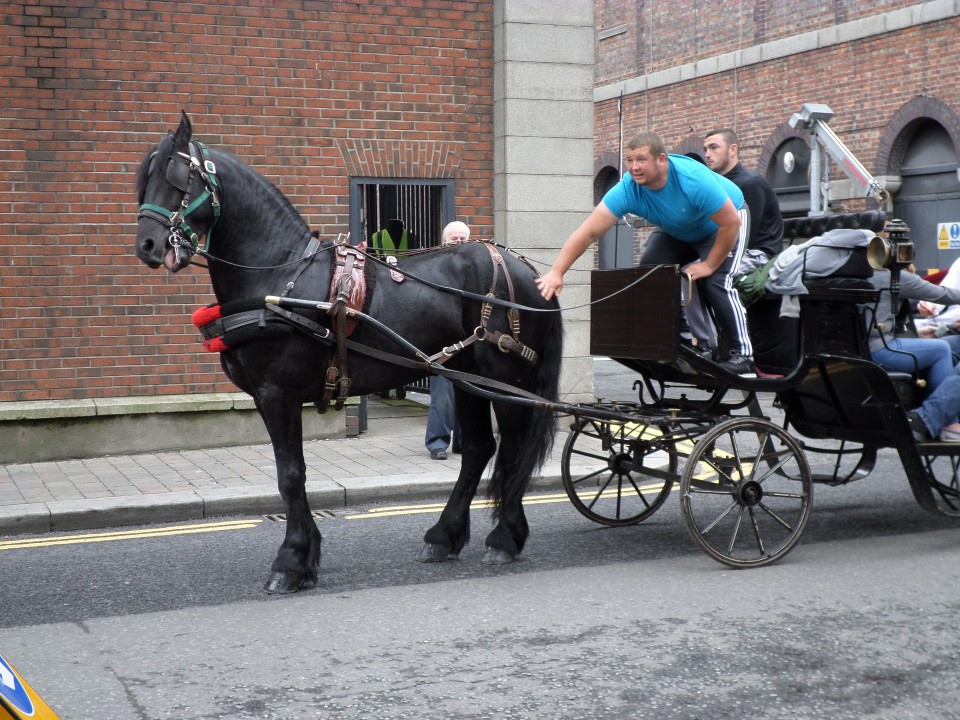
Returned to our hotel, I had intended to go for a long walk to photograph the statue of Oscar Wilde in Merrion Square, but decided that a quiet cup of tea and a short walk to Boots Chemist would do more to restore my health than a forced march. In the evening we went to The Church, a restaurant in a converted church. Originally built at the beginning of the 18th Century, it is one of the earliest examples of a galleried church. It has been beautifully restored after being derelict for some years. The organ and many of the memorial stones are still in place, and the interior design has been done in keeping with the period of the church building. We had a delicious meal while being entertained by some musicians and a pair of Irish dancers.
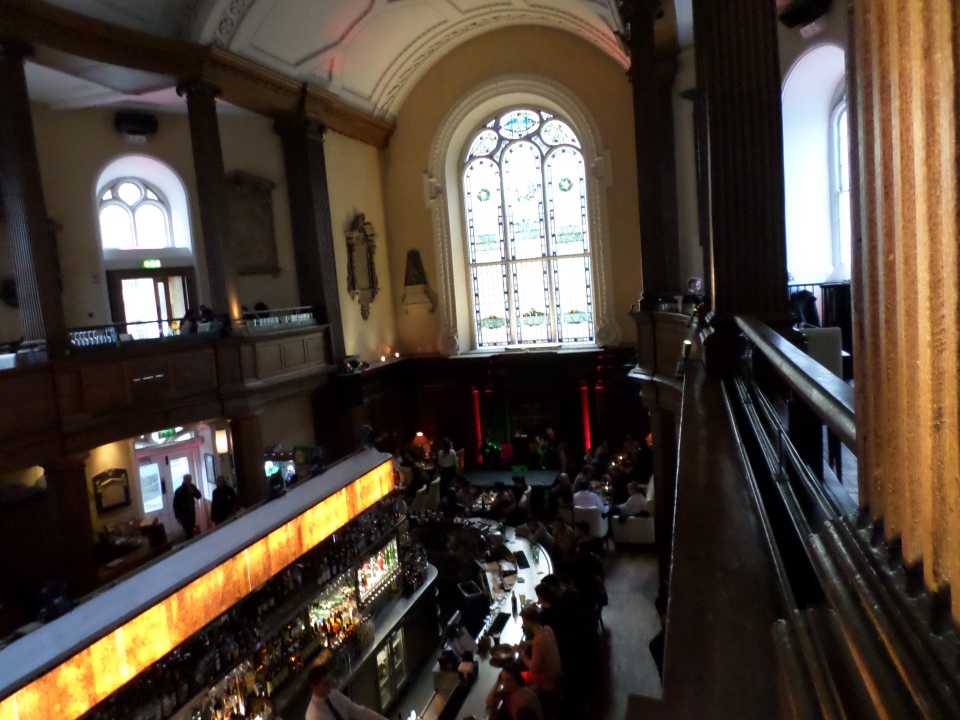
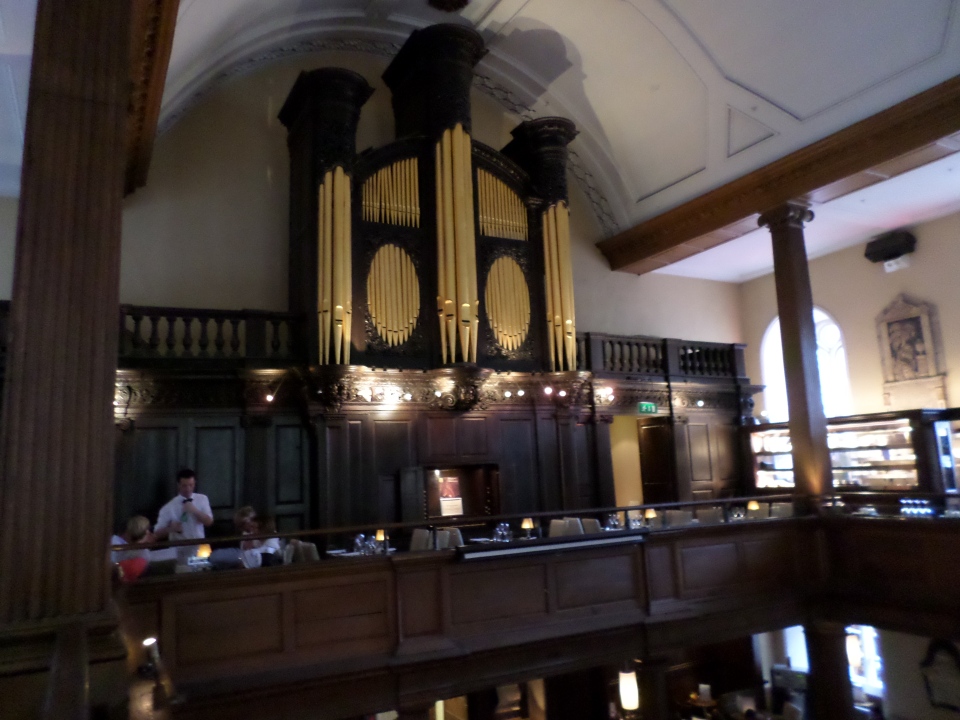
Waterford
The train to Waterford did not take long, and went through lovely green country-side, rather wet country-side, however. On arrival, I left my bag at the Hotel and started exploring. The Tower Hotel is opposite Reginald’s Tower, so that seemed a good place to start.
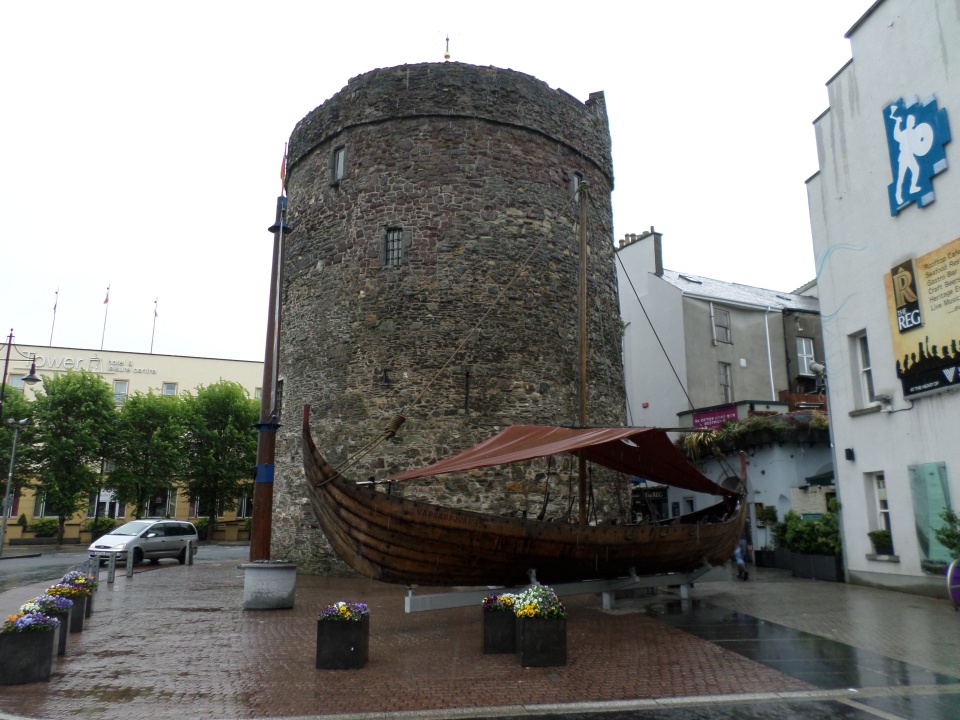
The city of Waterford began as a Viking winter settlement (much as did Dublin) and claims to be older (founded 914) and still in possession of its Viking name. Waterford is claimed to be the Anglicisation of the Viking Vedrarfjordr, meaning winter haven. The area at the confluence of the River Suir and its tributary the St John’s River was a defendable area of high ground. At the point of the triangle, above the rivers, a wooden lookout tower was built, and a palisade defended the landward approach. Much later, these were replaced by a stone tower, still named after the Viking leader Ragnar, or Reginald. Reginald’s Tower displays models and artefacts from the Viking period.
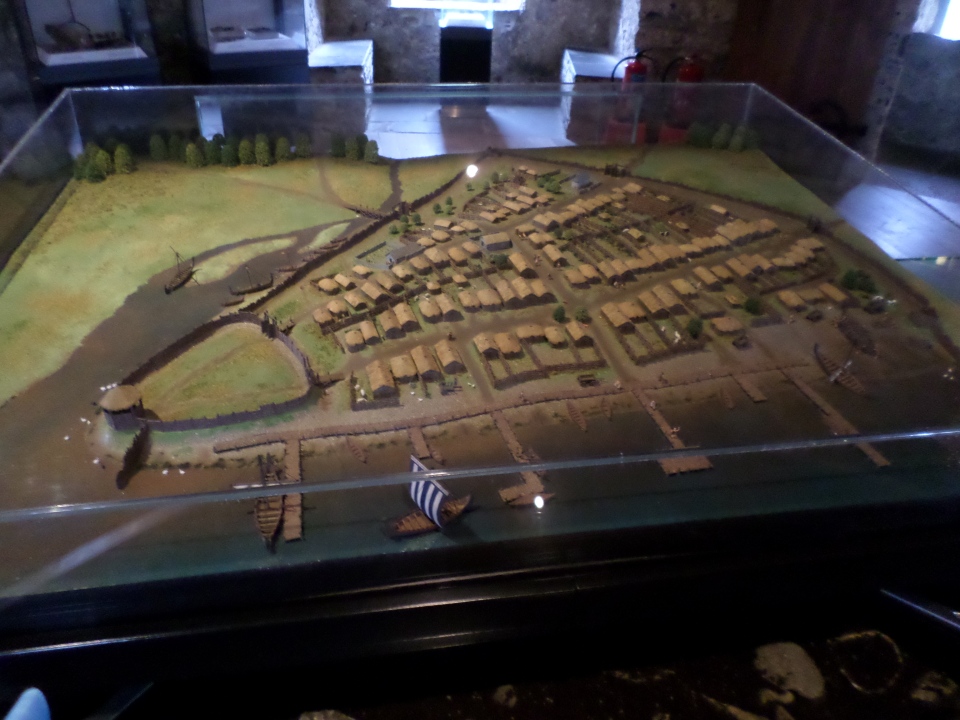
In 1170, the Norman arrived, and took the city. By then the native Irish and Vikings had intermarried and were considered Irish by the invaders. The Normans improved the fortifications, replacing wood with stone.
By 1480 not only the ‘Viking Triangle’ was defended by walls, but also a further wall protected outer areas of the city.
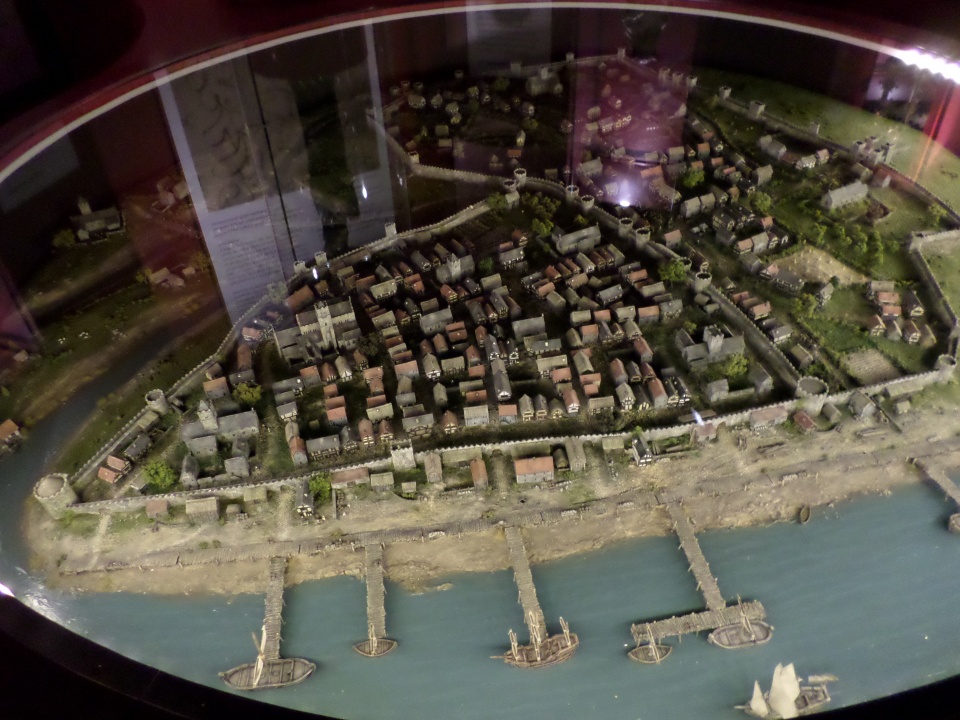
A wealthy merchant class arose due to tax concessions on import and export of goods. These were jealously guarded by the merchants, with the Mayor of Waterford visiting the court of Henry VIII to gain support for Waterford’s monopoly on the wine trade. The position was reinforced and the Mayor returned with a sword which the King had presented to him, and which is on display in the Medieval Museum.
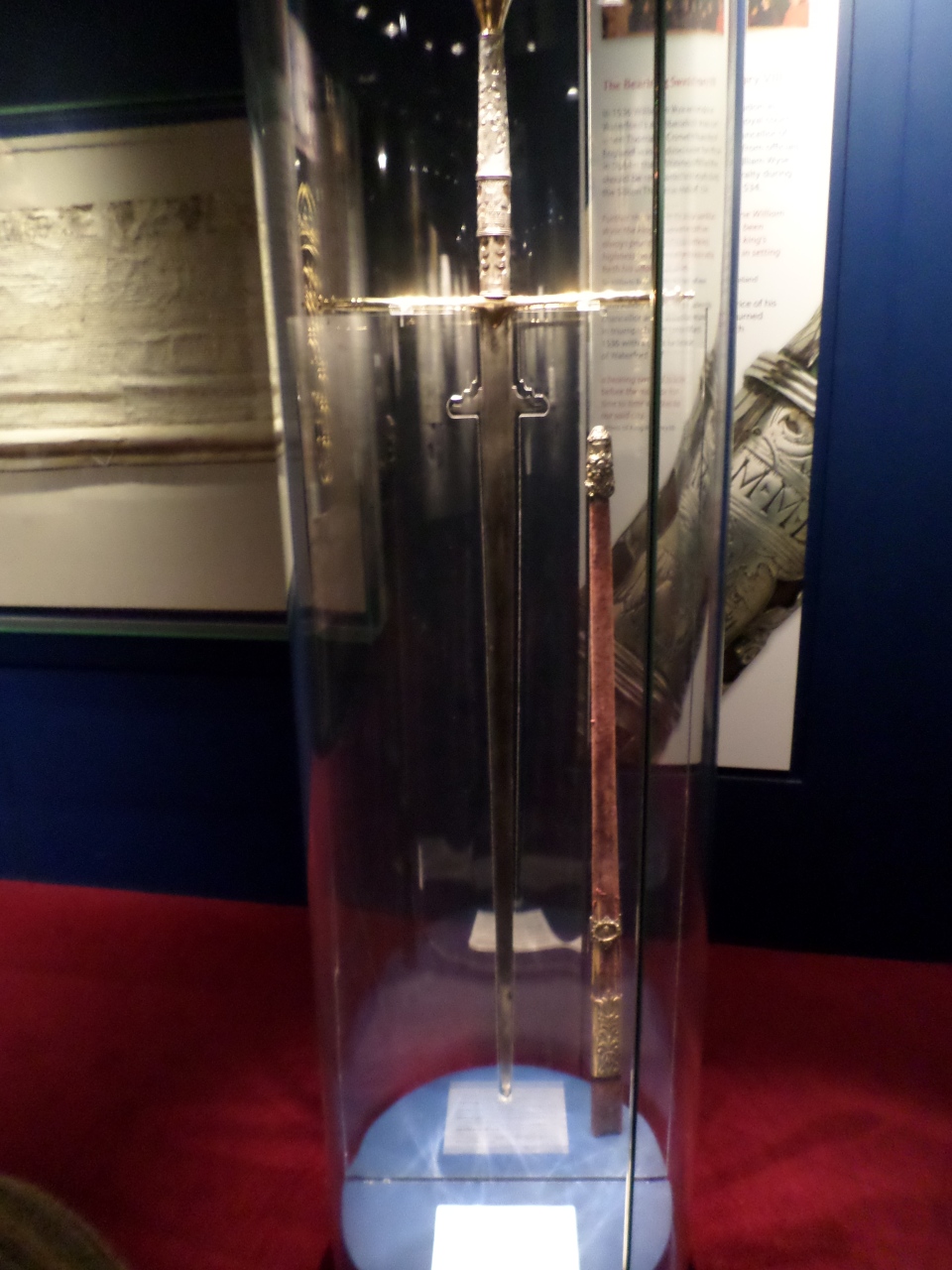
In 1650 the city was besieged by Cromwell, but did not fall, the only city in Ireland to avoid that fate. During the religious upheavals of the reformation and Cromwell’s civil war, the precious vestments of the Catholic Bishop were hidden. They only came to light much later – but are now on display at the Medieval Museum. There were five or six beautifully embroidered capes and surpluses, displayed in very low light so impossible to photograph clearly (and I didn’t think to buy a postcard…).
The story of the seventeenth century to the modern period is told in the Bishop’s Palace. The photo was taken the next day, when the rain had cleared. The really interesting (to me) exhibit was of a shell grotto made by Elizabeth Penrose (1779-1846) in about 1799. My great-great-grandmother (Clara Spain) came from a shell-flower making family in the south of England.
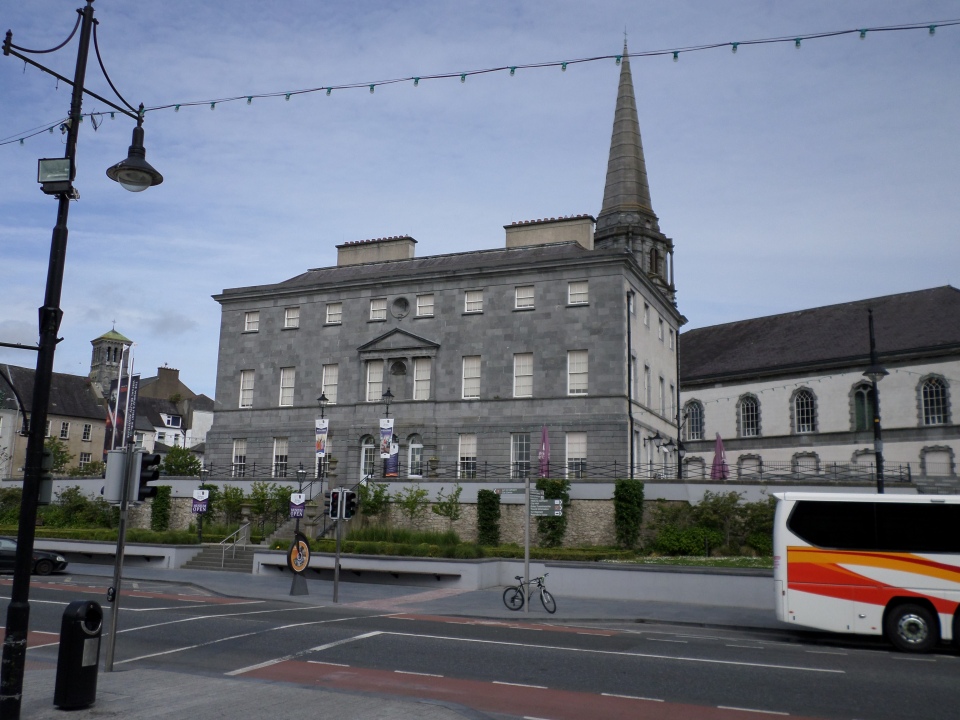

The dining room of the Bishop’s Palace was set with early examples of Waterford Crystal.
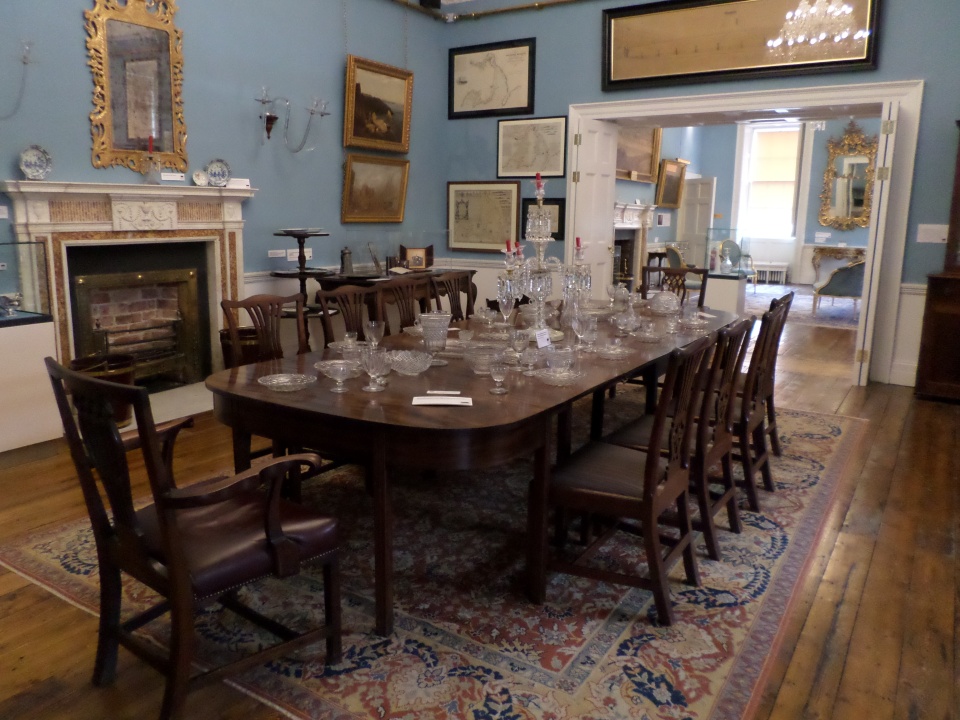
The fortifications round the town were eventually brought down, allowing better access to the quays along the river. New houses went up along the Mall, where the wall along the St John’s River once ran; that river having now moved further away.
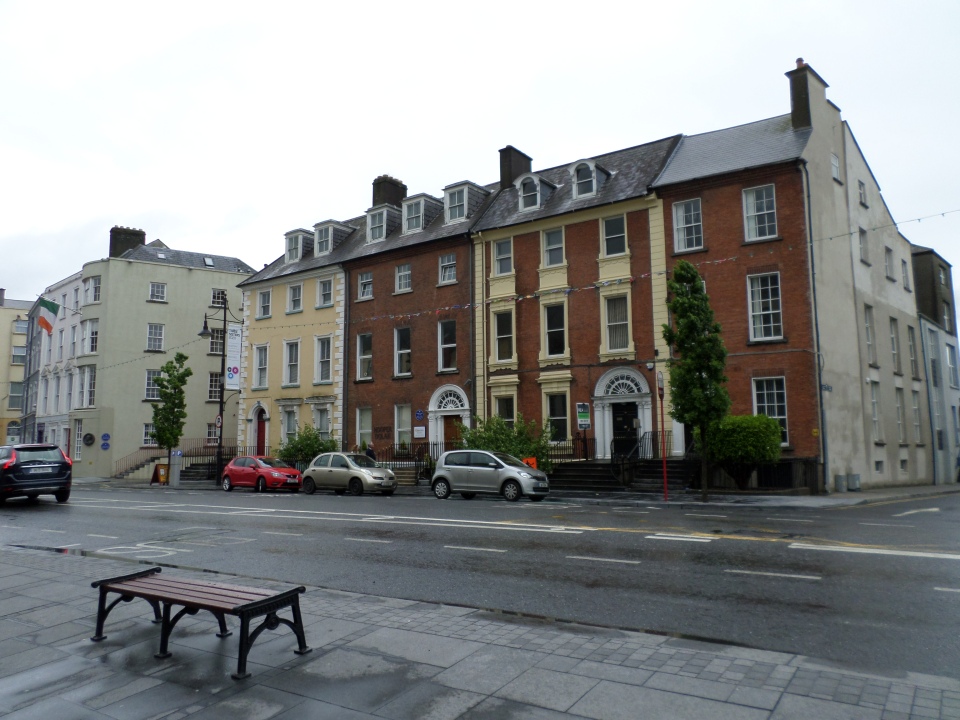
At this point I returned to my hotel, found that check in was not until 3 pm and went to sleep in the foyer. When I finally got my room, I had a long hot shower then retired to bed, not waking up fully until 7 the next morning. I have a virus and had been pushing myself a bit too much.
On Sunday morning, feeling much better, I joined a tour of the Waterford Crystal factory, practically next door to the Hotel, opposite the Bishop’s Palace. It was a fascination look at how the crystal objects are blown into moulds, shaped, marked and cut. Only the finest cuts are done by an automated machine, everything else is done by hand.

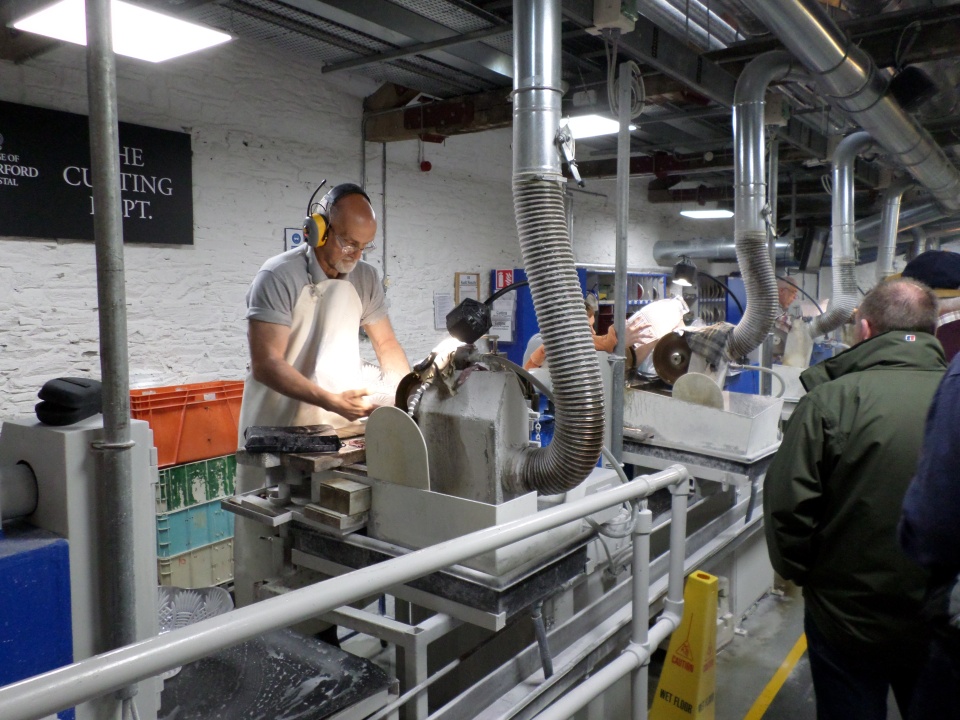
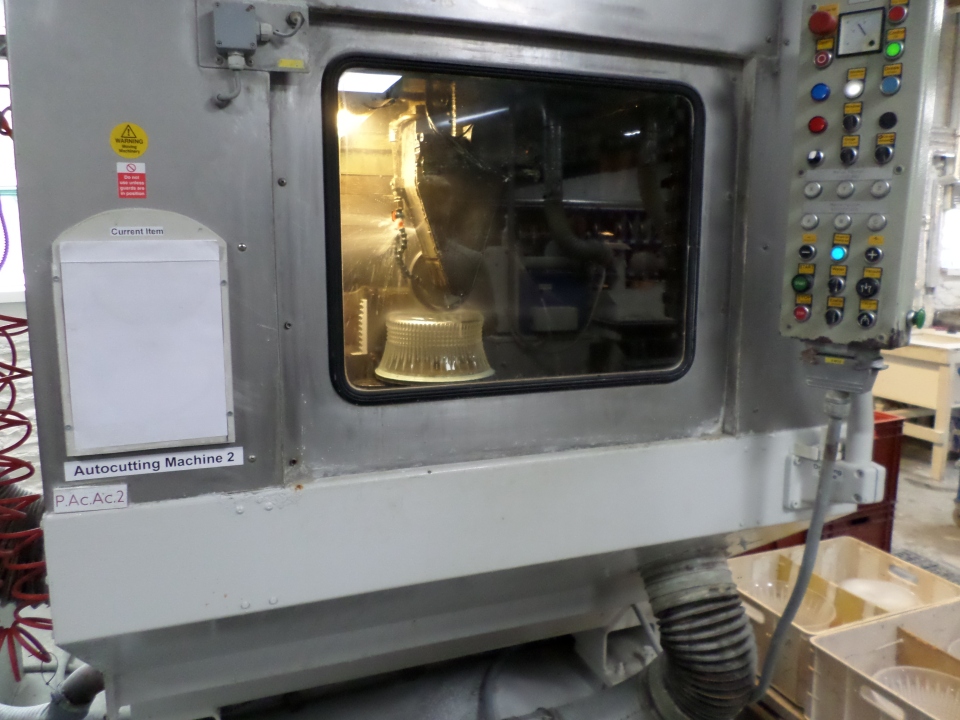
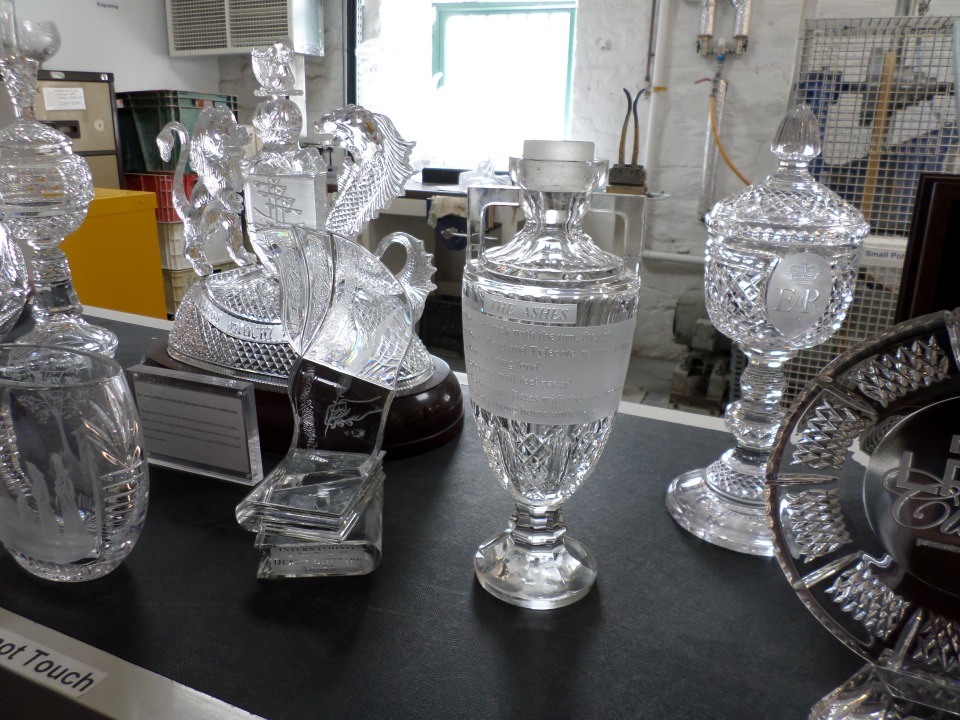
The symbol of Waterford Crystal is a seahorse, much like the University of Newcastle (Australia) symbol, so I bought a wee seahorse brooch.
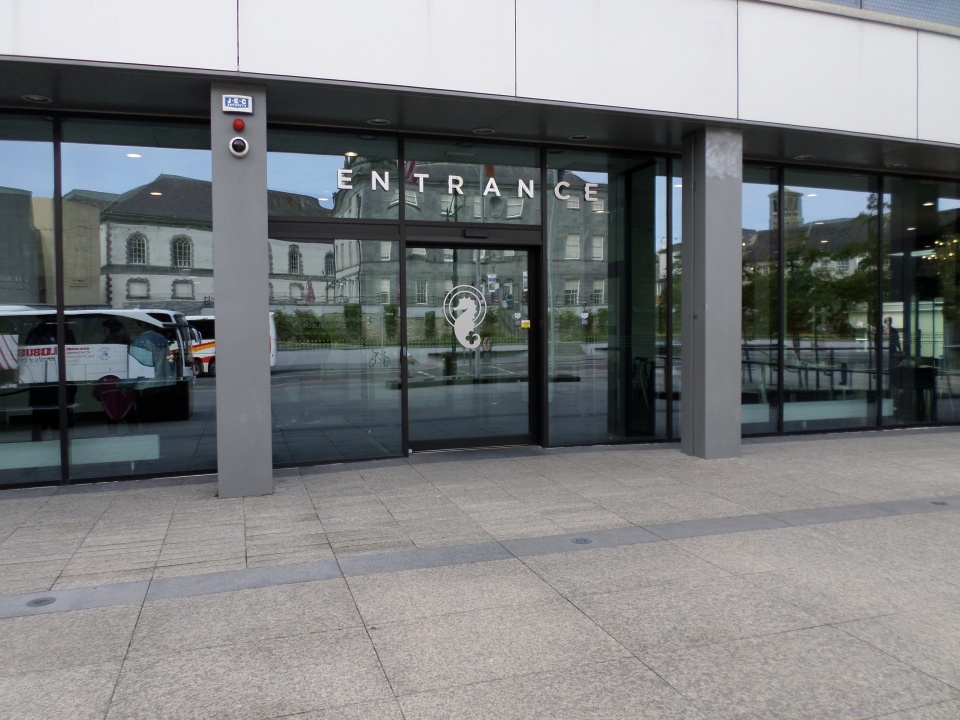
I retrieved my bag and headed for the station and my train back to Dublin. The good news at the Morgan Hotel is that I appear to be in a room on my own (since it has a double bed not twins). Yay!
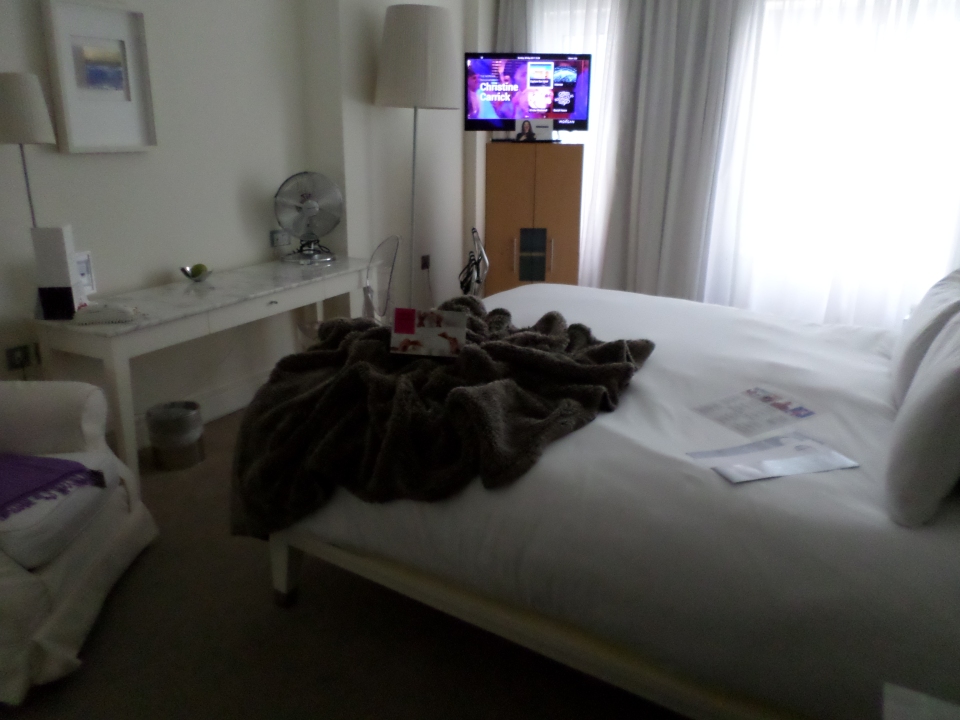
Kilkenny 3
I walked into Kilkenny via Talbot’s Tower, the one remaining tower of the medieval fortifications, a a bit of adjacent wall. It is now in the corner of a school yard, but visible through a fence.
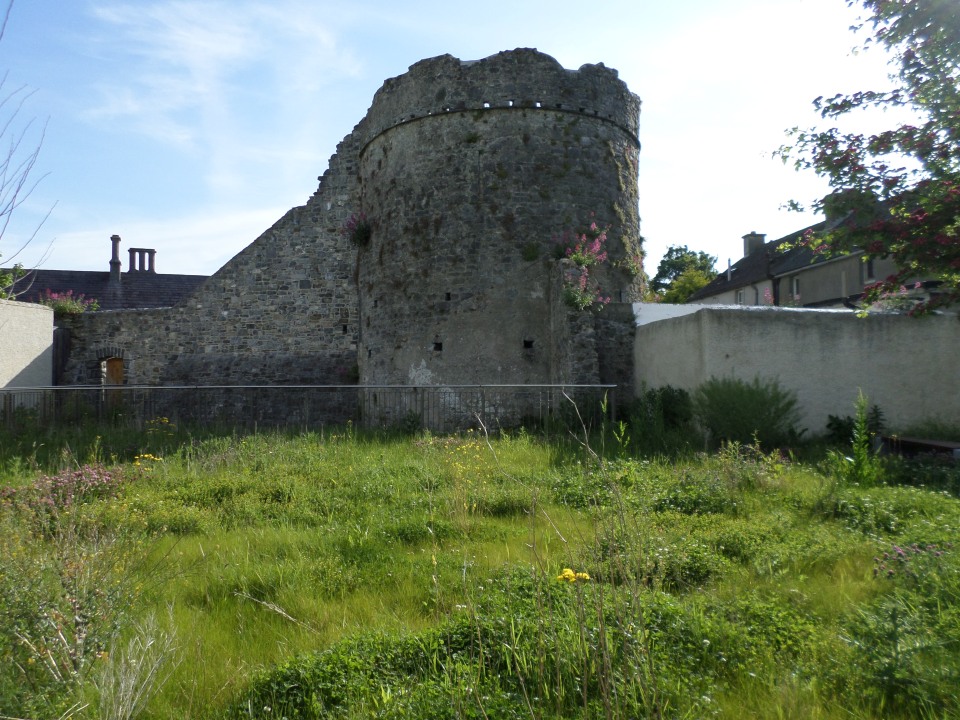
Kilkenny Castle was not yet open when I arrived, so I walked round the outside. The first castle on the site was built by the first Normans to arrive in the area, and it has been rebuilt at various times since. The Towers are still built on the medieval base, with really thick walls, while the wings between the towers have been remodelled, and most recently restored to the Victorian period.
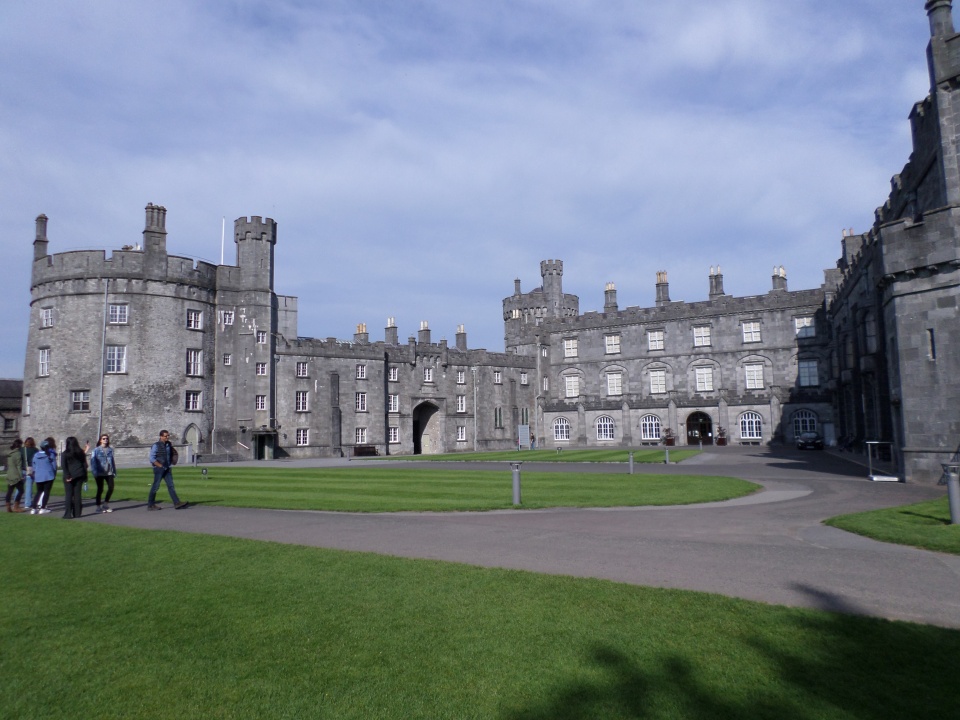
I took heaps of pictures of the interior. The most impressive room was the picture gallery, built to impress!

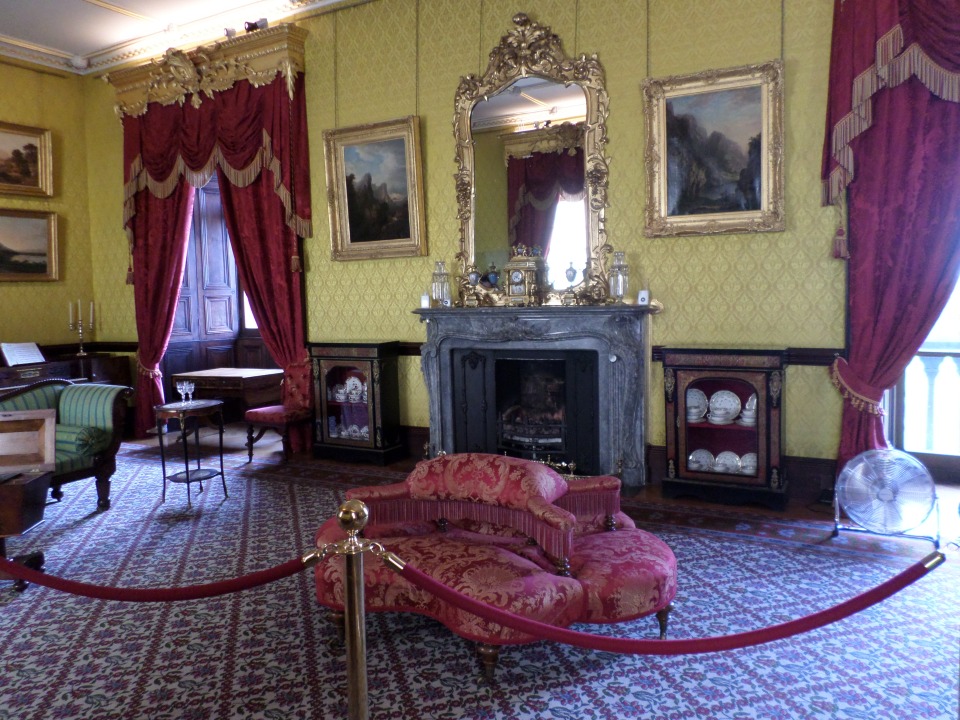
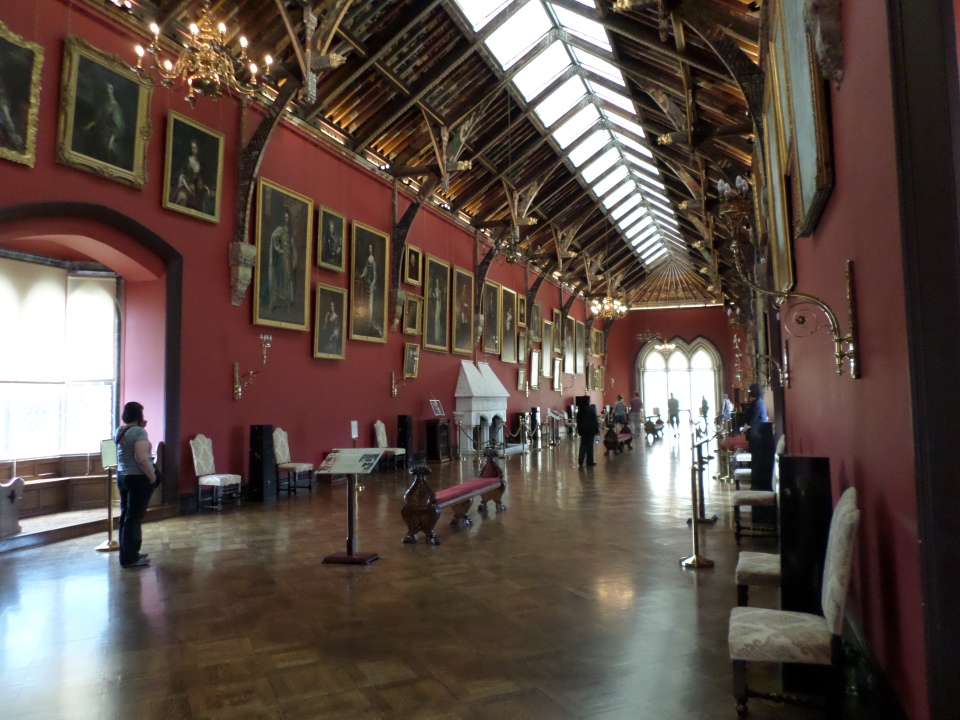
Across the road is the Kilkenny Design Studios, in the former stables, coach houses and dairy.
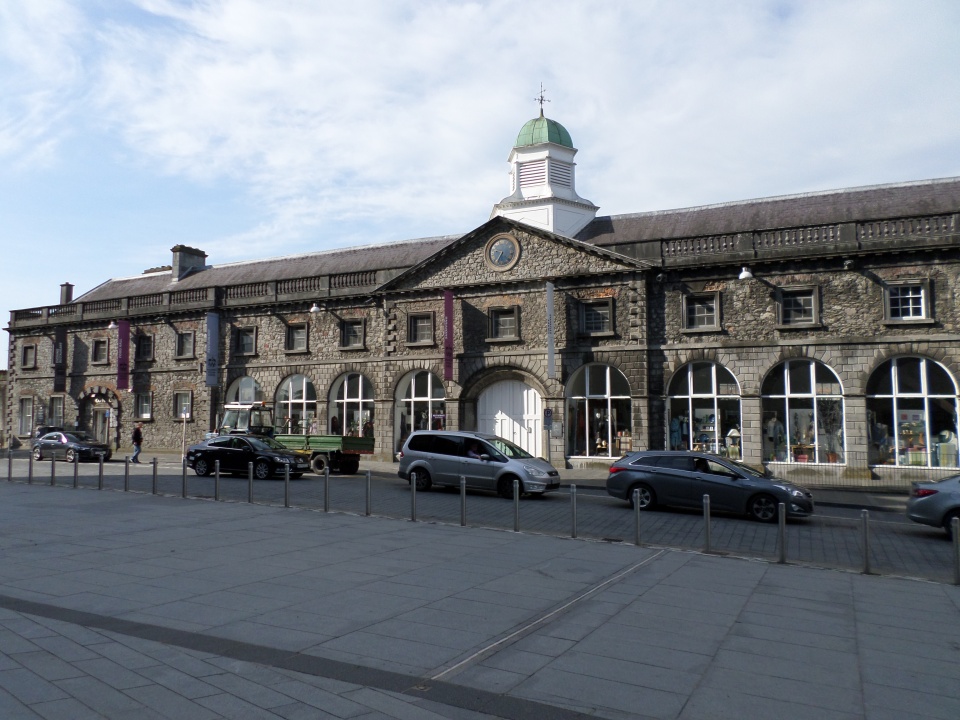
Beyond these are Butler House and its gardens, built as a dower house for the Butler widows. The Butler family owned the castle.
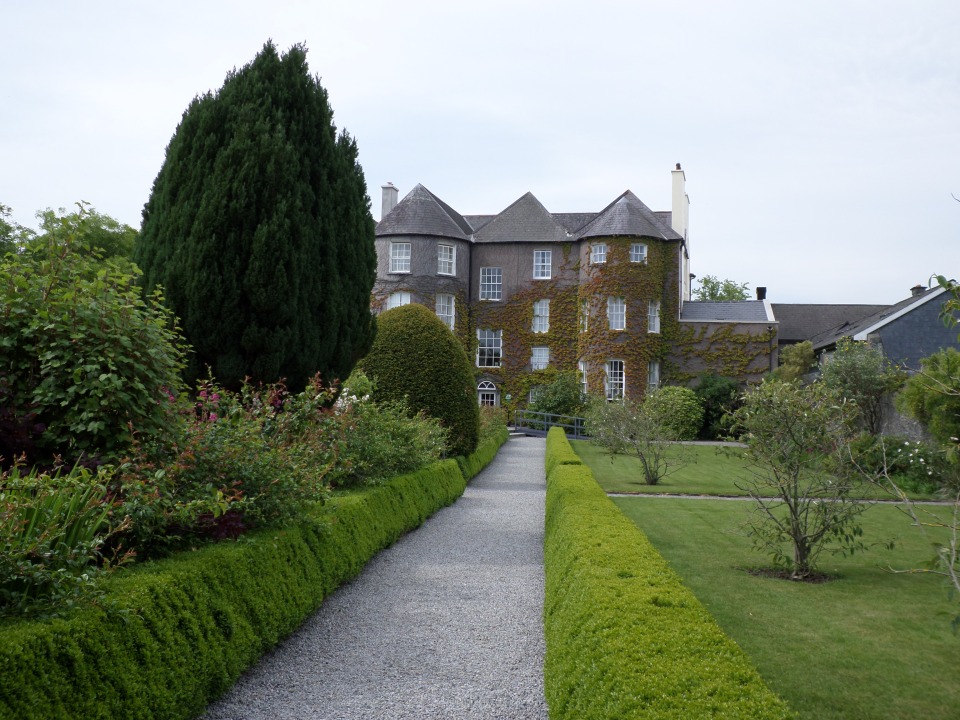
6788
Next stop was the Smithwick Brewery, where I joined a tour of the brewing process and tried a Smithwick beer. It was quite drinkable – given I don’t generally like beer, that was a pleasant surprise. I had a long chat with a school teacher from Melbourne while sipping it.

After a light lunch, I crossed the river and looked for the key sights that I had not yet identified. The St John’s Priory was started by Augustinian Monks in the 13th century, but the Reformation led to its ruin. The Lady Chapel was restored in the 1800’s and is now in use.

I also found the Magdalen tower, built about 1500 and which formed part of the Hospital of St Mary Magdalen, a leper hospice.
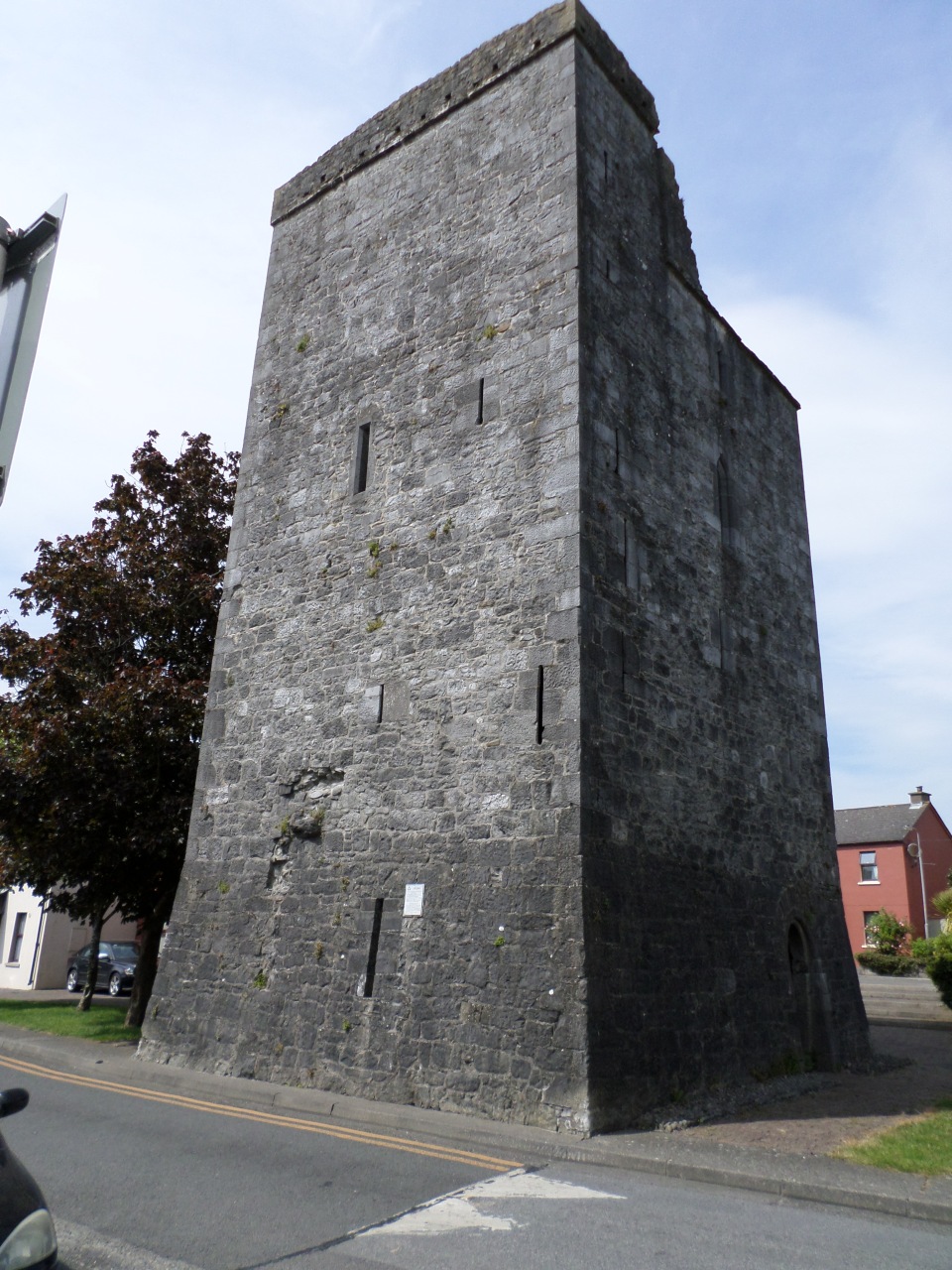
Back into town and I sat a read for a bit, and had some soup while listening to the music at The Field pub, but it was bit rowdy so I left early.
Kilkenny 2
After a lovely breakfast, I walked into Kilkenny and up to the Castle from whence the ‘Tourist train’ left. I jumped aboard and enjoyed a ride round the town with commentary. The trip included crossing John’s Bridge, going past St John’s Priory and back across the river on the new bridge (not on the tourist maps) with a good view of Green’s Bridge, and also a turn down some very narrow lanes behind St Canice’s Cathedral. Back along Parliament and High Streets, then up Patrick St and along lanes to get back to the Castle.
I then walked back to my B&B to get my camera, which I had forgotten. The walk goes past St Mary’s Cathedral (Catholic) which is unusual in that the entrance is on the east and Chancel at the west, the opposite way round to most churches. It was built in the mid 19th century, in the Victorian Gothic style. The Chancel is beautifully decorated.
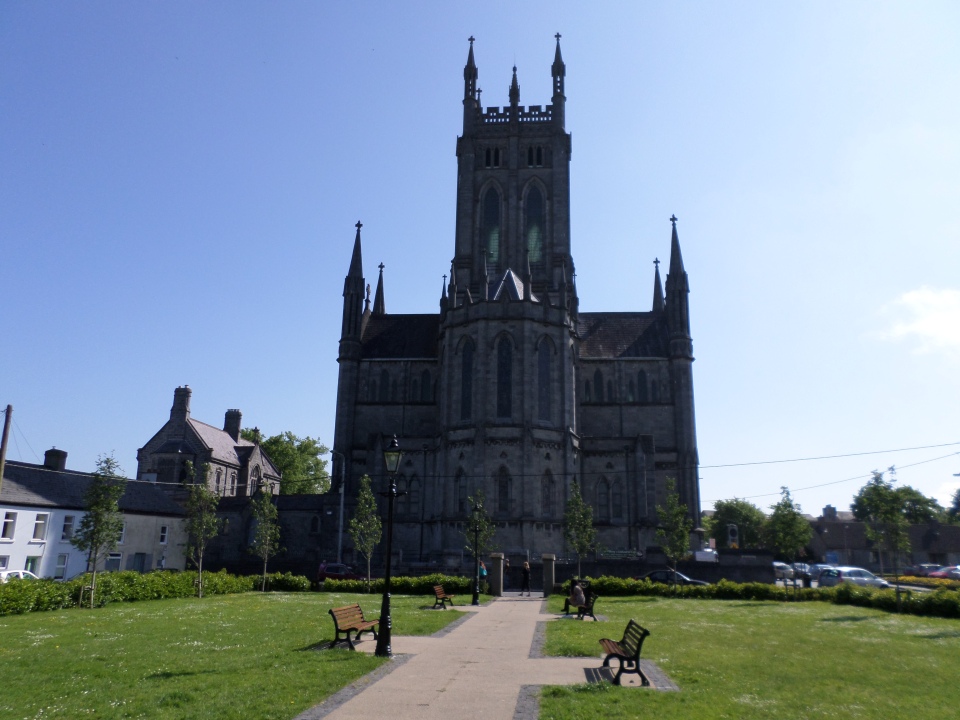
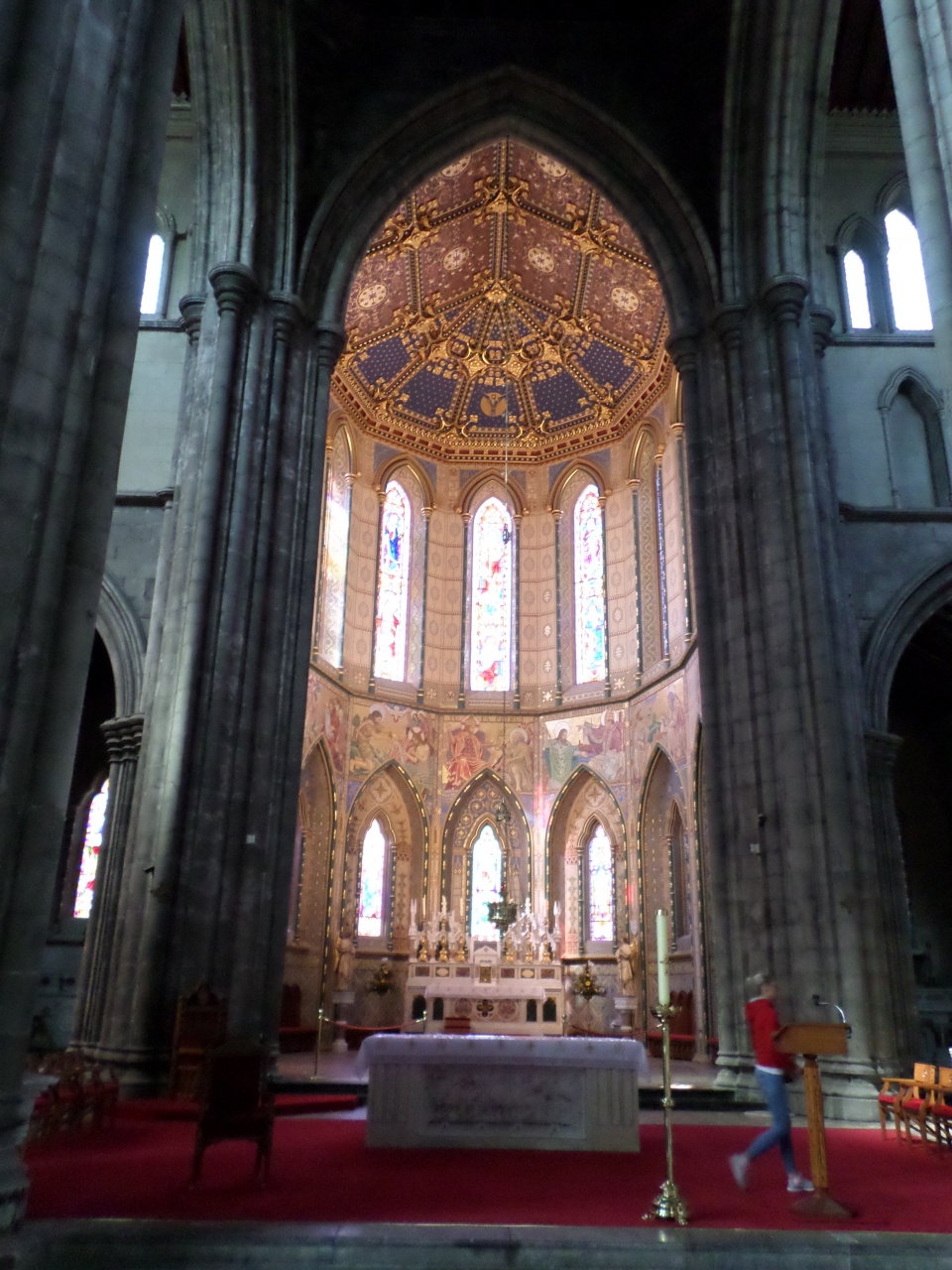
On my return to Kilkenny town centre, I walked under the arches at the front of the Thosel (Town Hall) through to St Mary’s Church, now the Medieval Mile Museum. There was an interactive map that allowed one to call up various buildings on the Medieval Mile and learn a little about them. There was an animated timeline video display outlining the history of Kilkenny into main periods – but I did not take notes! The rest of the museum was really about the finds made when the Church was restored. The restoration included application of white plaster to walls and ceiling which looked a bit odd when I am used to the bare stone of most old churches. Technically, medieval churches were whitewashed, but also often had frescoes painted on the plaster – maybe that is yet to be done! Apparently the Church was the parish church of the town’s merchants, and thus some expense was outlaid for impressively fashioned headstones and memorials. There were examples of how the design of headstones changes over the centuries, becoming more elaborate as time went on, then reducing to plain inscriptions with the reformation.
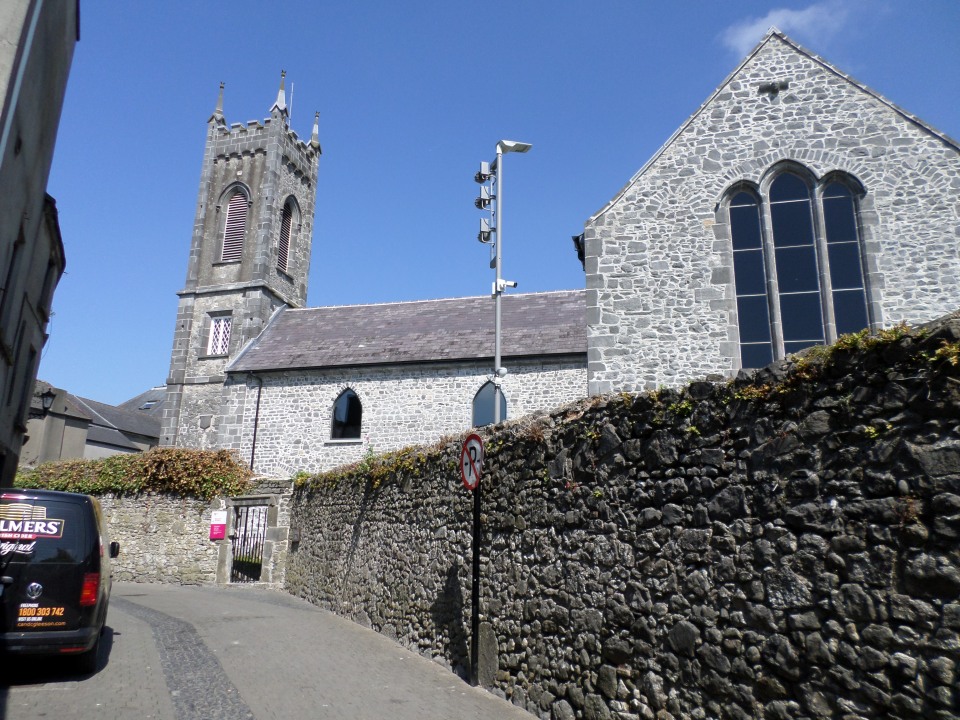
From the museum it was a short stroll to the upper entry to the Shee Alms House (now the Tourist Information). Built in 1582 by a wealthy merchant (Sir Richard Shee), the Alms House was designed to house and feed poor people in return for their work. Doesn’t sound much different from slavery, really. This charity would also ease Sir Richard’s progress to heaven.
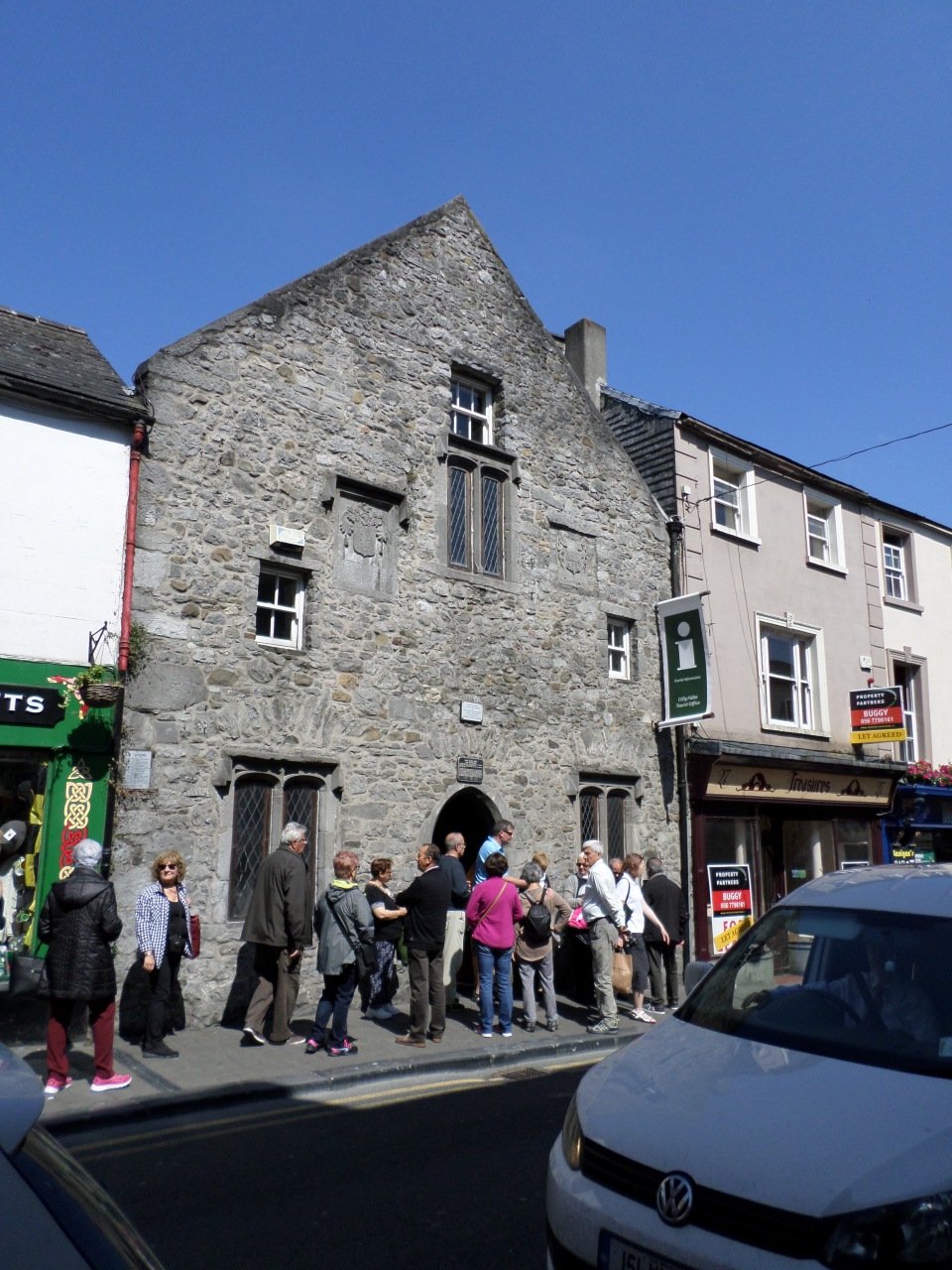
A stroll further down to the river and out onto John’s Bridge shows what a commanding presence the Castle is, overlooking the crossing.
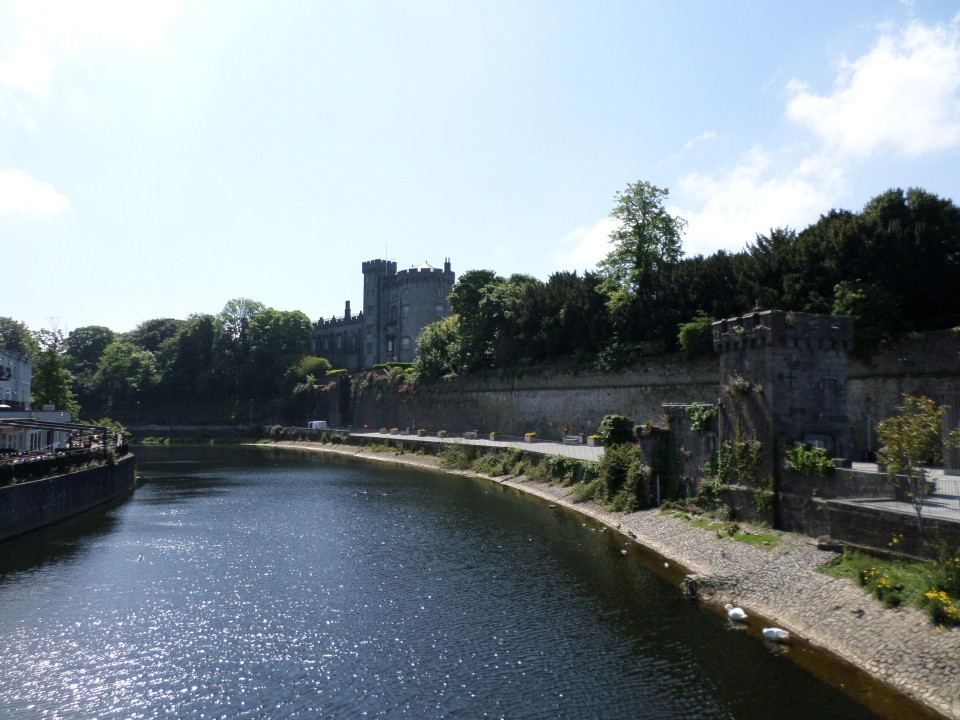
From there I walked north along St Keiran’s Street, nearer the river than High Street, and joining with it to form Parliament Street. The two streets are linked along their length by ‘Slips’ or walkways between the buildings. The Butter Slip is one of these, passing under some buildings, and sloping and stepping down from High St to the lower St Kieran’s Street.
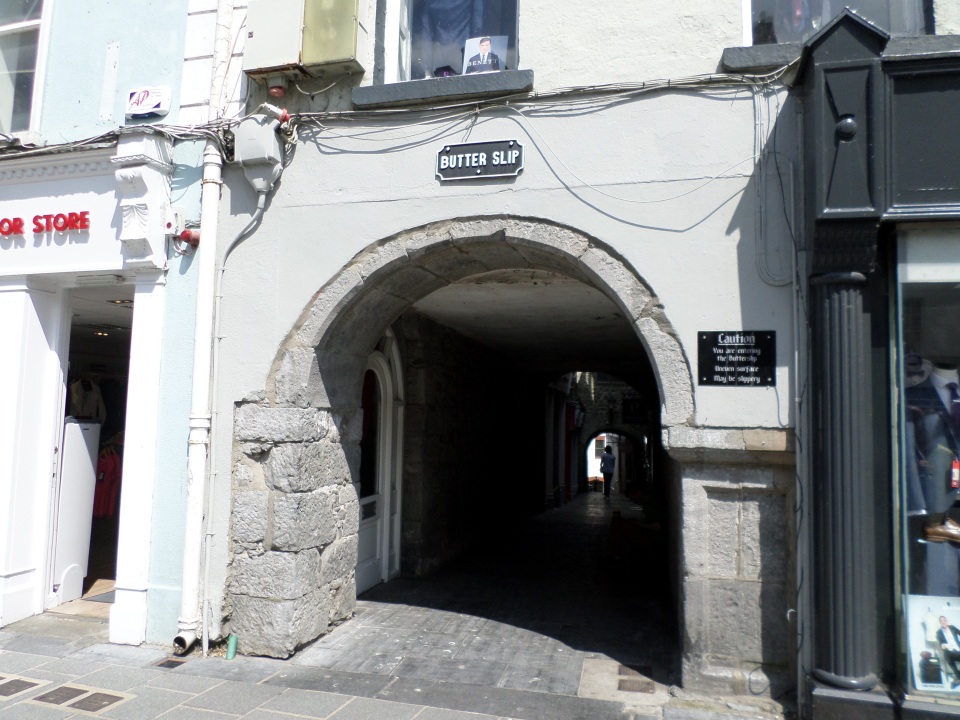
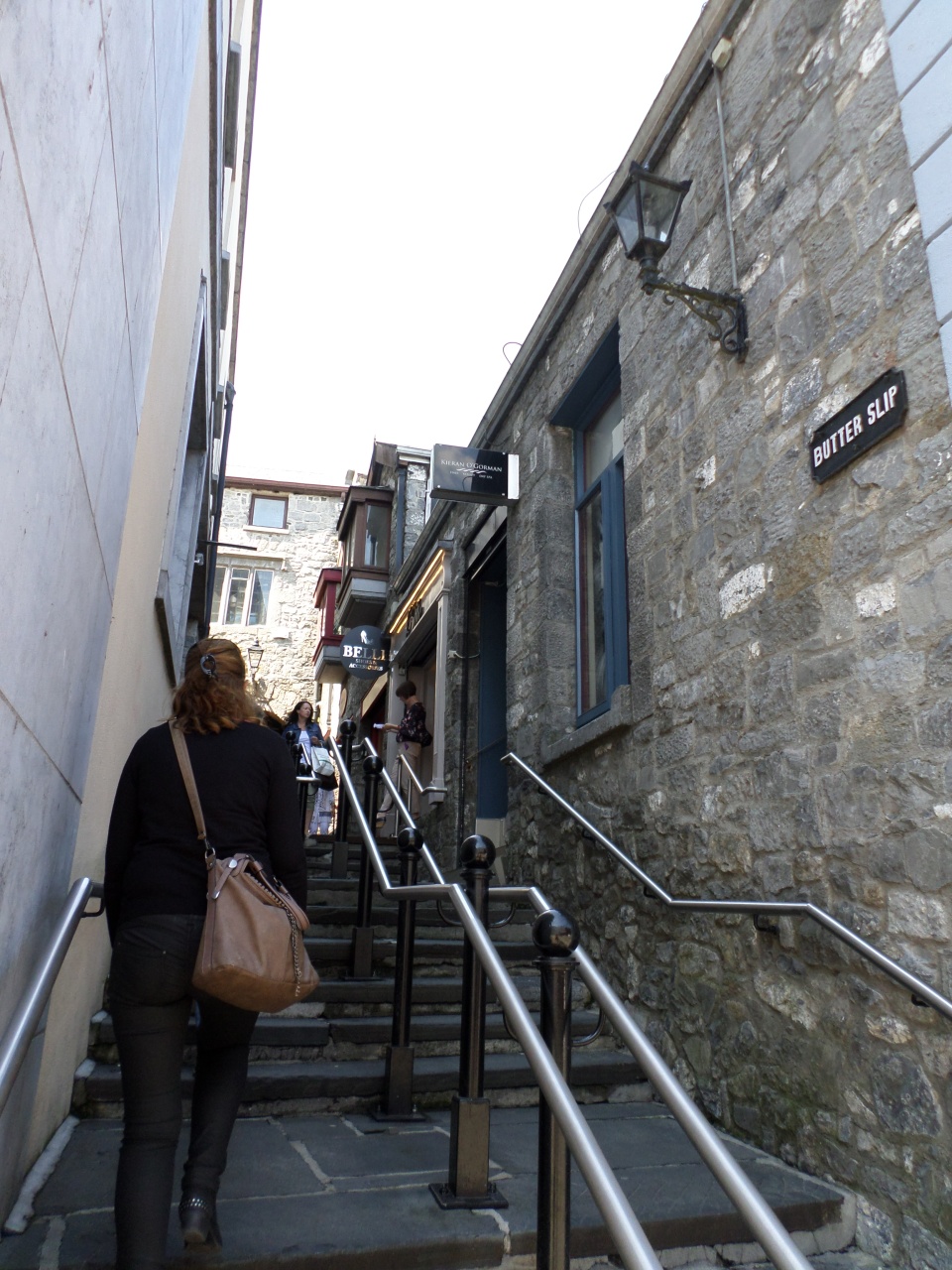
Facing St Keiran’s St, the Kyteler Inn started business in the 13th century, but I think the current building may date later than that. Dame Alice Kyteler was the daughter of a banker, outlived four husbands and became quite wealthy. This raised suspicions, and she was charged with witchcraft (in one of Europe’s earliest witch trials), found guilty and sentenced to be burned. Luckily for her, her friends managed to get her to England. Not so lucky, her maid was burned to death instead. I stopped at the Kyteler Inn for lunch.
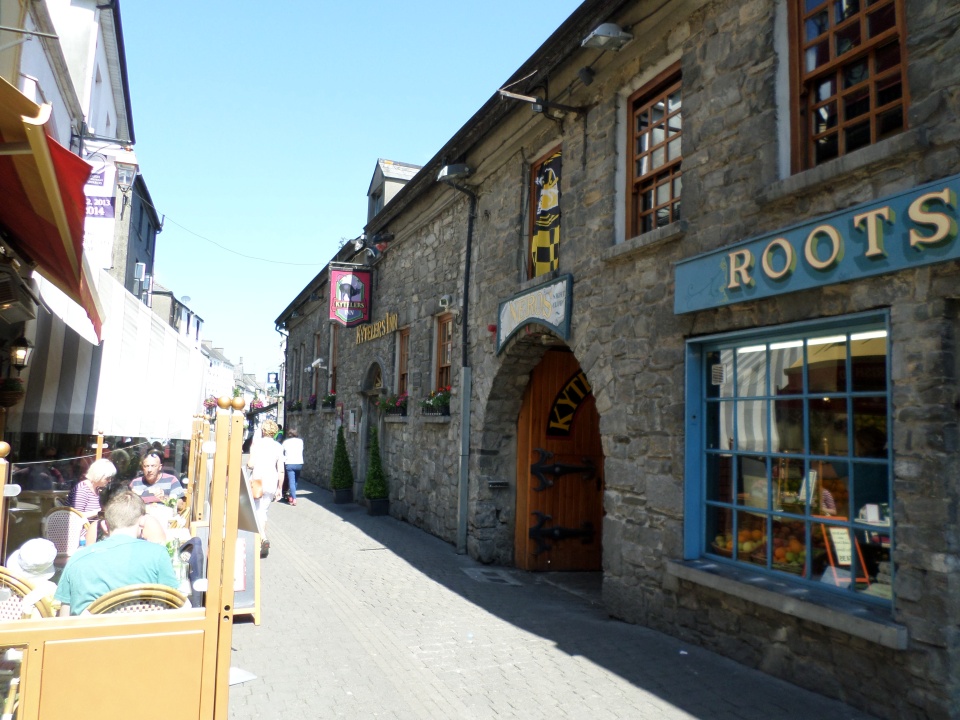
Next, I went to look at Rothe House and garden. Built by a merchant, John Rothe, starting in 1594 the house has three phases of construction. The front section, the earliest, had business premises on each side of a gateway, with a large hall above, and attic above that which were the living areas for the family and servants. As business prospered and his family grew, John Rothe added to the house in L-shaped buildings with courtyards between. It was such a long plot, running from Parliament Street to the city wall, that there was still a huge area for growing fruit and vegetables.

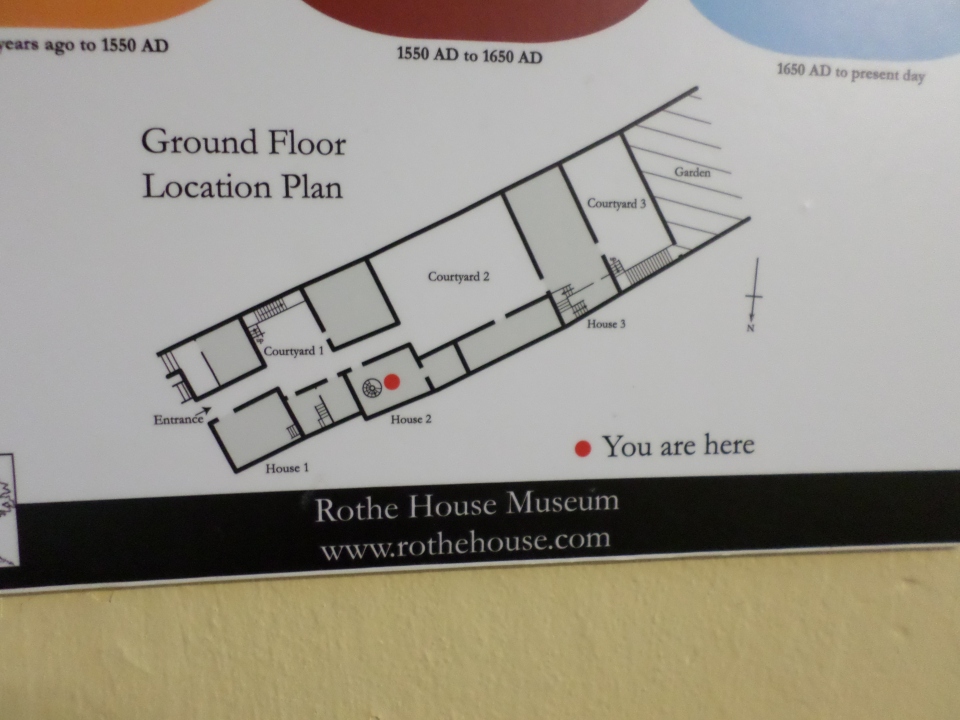
In restoring the house and with some archaeological digs in the garden, many artefacts were found that are on display in various parts of the house, along with paintings, costumes and finds from elsewhere. There is also an embroidery workshop, in which volunteers are working on some elaborate wall hangings.

A little north of Rothe House, Abbey Lane runs from Parliament St through Black Friars gate – the last remaining gate in the old city walls – to Black Abbey. The ‘black’ appellation refers to the black habits of the Dominican friars. Founded in 1225, the Abbey is an L shape rather than cross shaped; but that may be due to intervening destruction by Cromwell in 1650. The Abbey was reopened for public worship in1816, and fully restored in 1979.
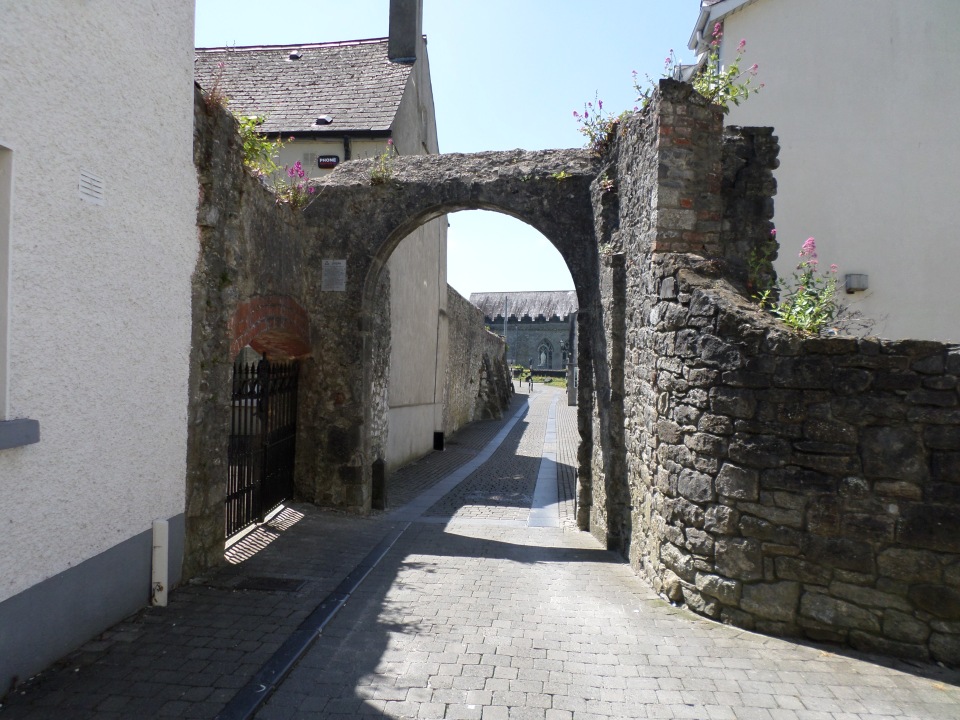

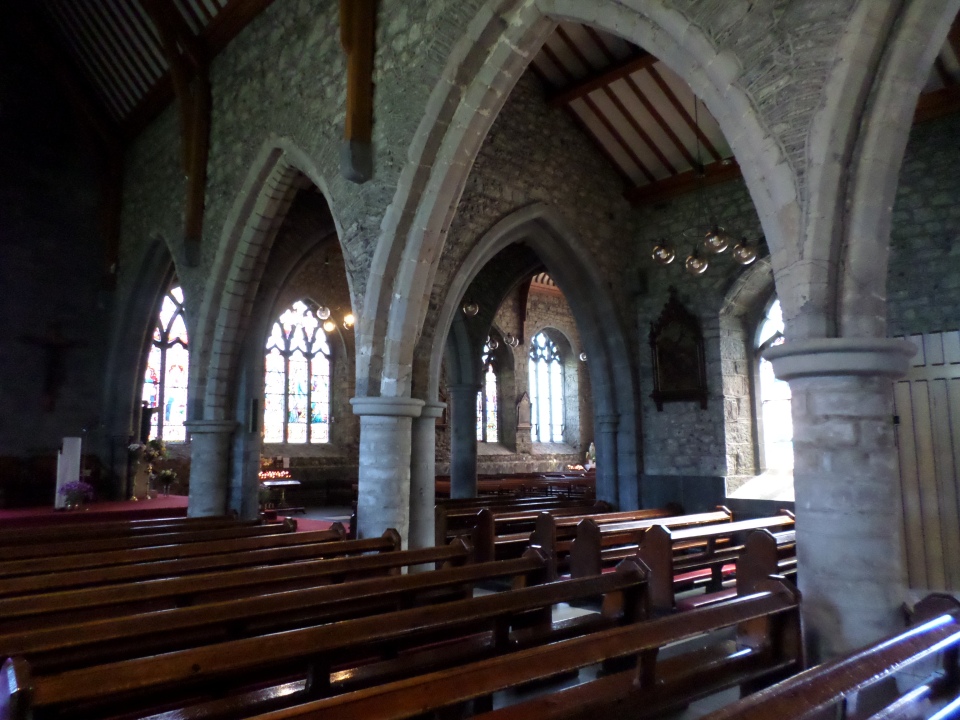
Late in the afternoon I finally found the Hole in the Wall bar, tucked away off an alleyway. The bar itself is tiny, but there are two courtyard areas and a snug, plus a large upstairs room which I did not see. I was too early for any music, or many other patrons!

After an early dinner at the Marble City Bar, I headed ‘home’. Kilkenny is also known as the Marble City because of the use of limestone in construction. Today, I got to over 12,700 steps, about 8.6 kms, and 18 floors – mainly from climbing up and down the various bits of Rothe House. My knees and calf muscles are Not Happy.
Dublin 9 – Kilkenny 1
Sounds like a football score. Packed up and case left in the Hotel, I headed out to ‘do’ Dublinia and the Cathedral. Dublinia explains the history of Dublin from the Viking settlement into the Middle Ages. It exhibits many of the finds from the seven year dig in the area now built over by the City Council building, between Fishamble and Winetavern Streets and between the Cathedral and the Liffey. It was fascinating, and culminated in a model of the Medieval city, as it was speculated to look like in the 15th Century.
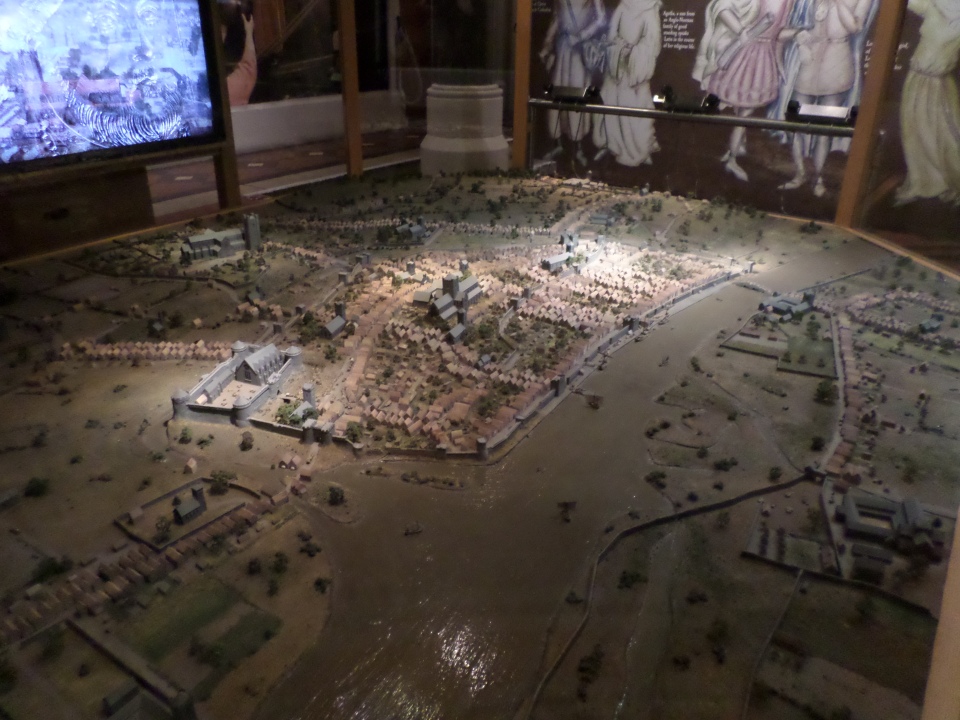
There were 96 steps up to the top of St Michael’s Tower, on a fairly new metal construction within the old tower. The Tower dates from much earlier than the nineteenth century ex-Synod house that houses the museum. There was a great view from the top, towards Christchurch Cathedral and also down over the area excavated that is now the Council Building.
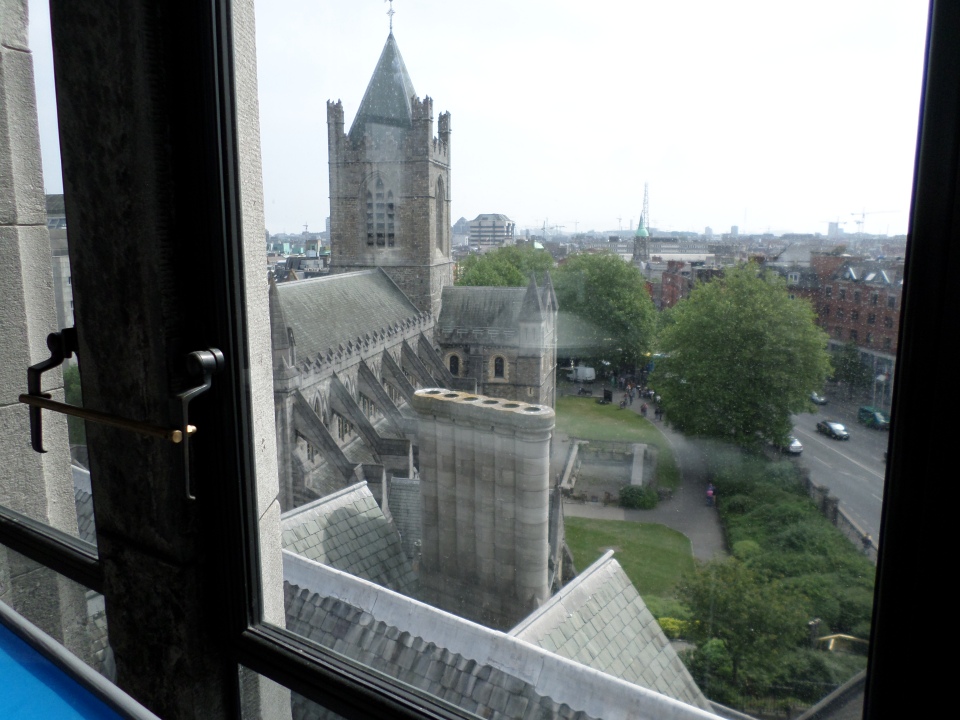
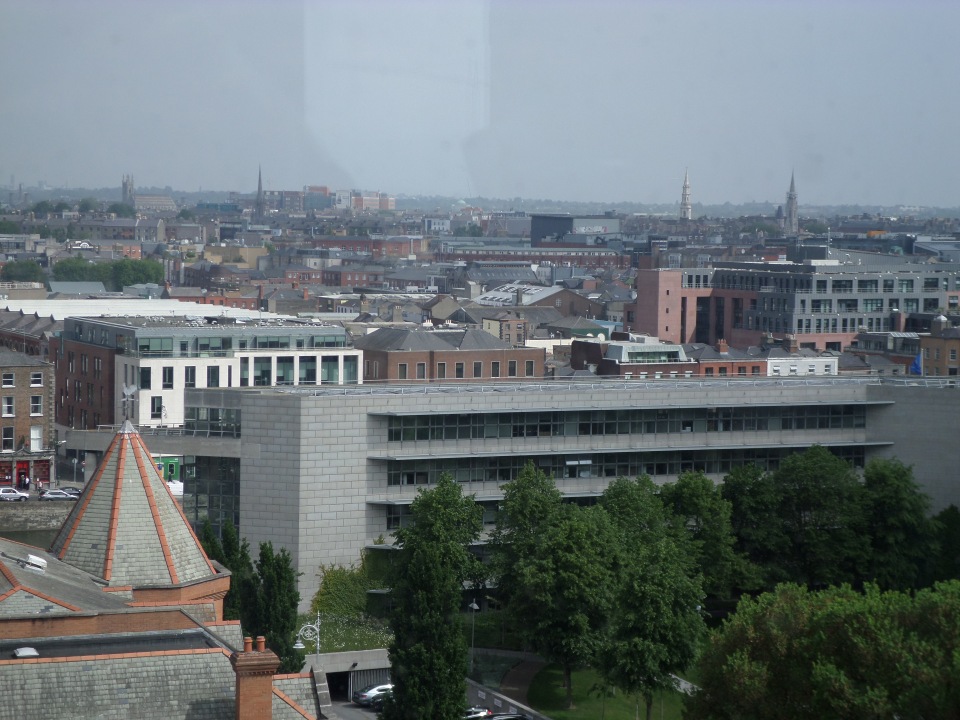
Down the 96 steps and then out of the building through the enclosed bridge that connects the Synod House to the Cathedral. I tagged onto a Cathedral tour, run by a chap with a bad line of puns, but fun with it. I was just in time to go up the bell tower. This time, it was a narrow spiral stair with rope handholds, and low doors, built into the walls of the Cathedral. We had to cross an open area from above the transept across to the tower – with a good view of the Synod building and St Michael’s Tower.
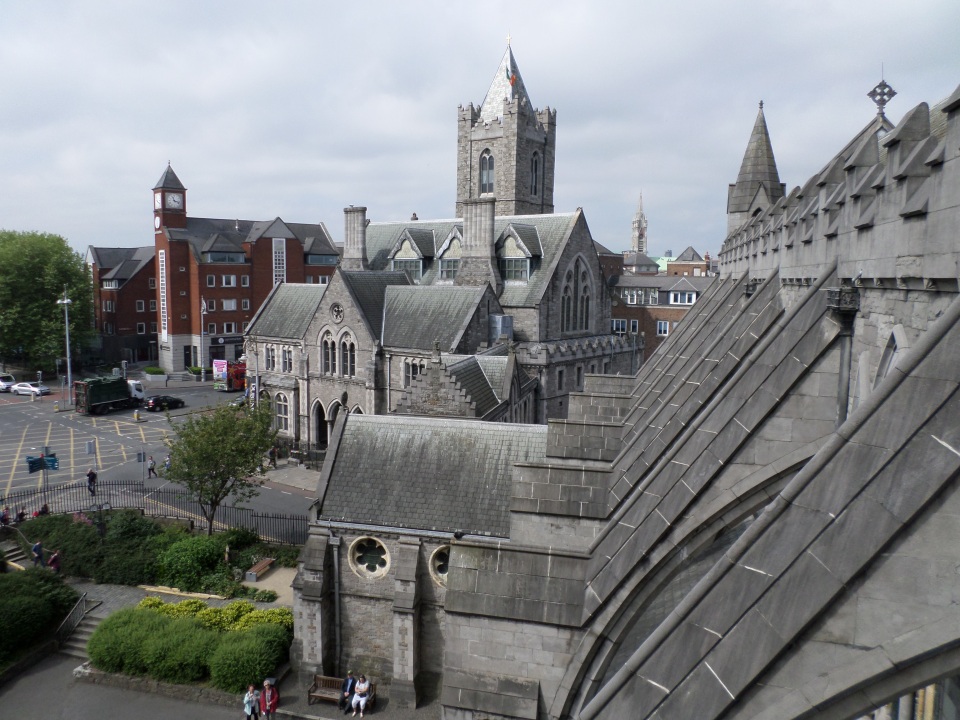
Once in the Bell Tower, we were in the bell ringers room and were allowed to have a go at ringing the three smallest bells. Wonderful, I’ve always wanted to try that! Back down the spiral stair, and down further into the Crypt. Here there were a British Coat of Arms and wooden carvings of Charles the First and Charles the Second – brought down there from somewhere many years ago. We were shown the Treasury, gold items gifted to the Cathedral at various times and now on display. There was also a selection of costumes from ‘The Tudors’, filmed somewhere nearby. Finally, we viewed the mummified bodies of a cat and a rat found trapped in one of the organ pipes of an early organ in the Cathedral!
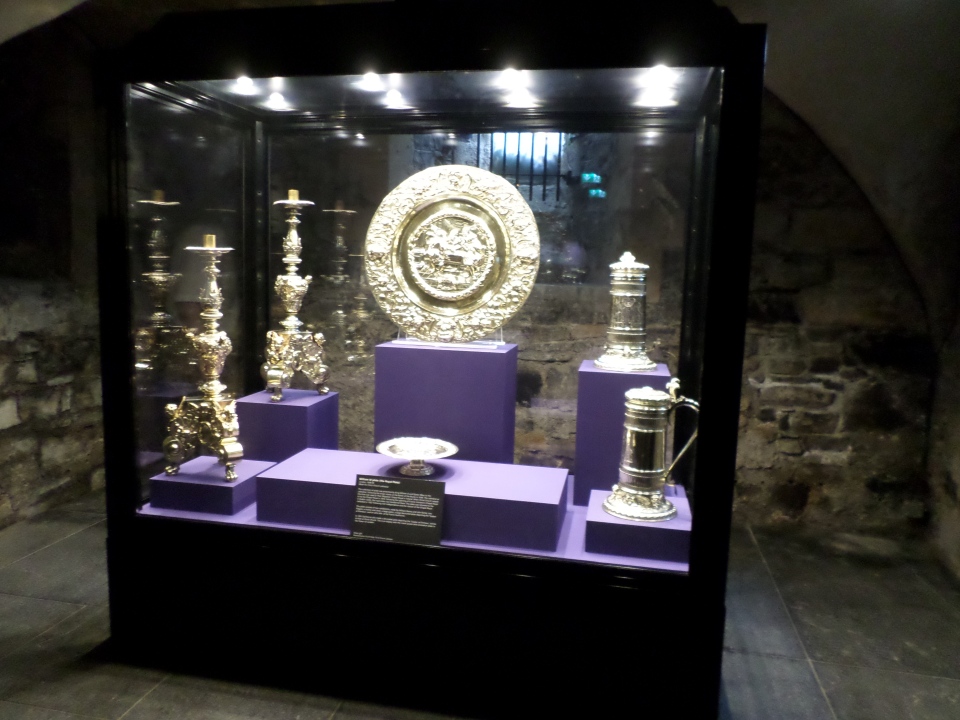
I wandered round the Cathedral a bit more. The tower has the rounded arches or early Norman period, while the rest of the Cathedral has more pointed arches of a later architectural period. However there is a pointed arch under the rounded arches in the Tower wall. Maybe it was changed later, or the periods are not so distinct.

The floor tiles are interesting using a ‘foxy friar’ motif, which is repeated in the backs of the chairs. These are relatively new tiles, being installed in a nineteenth century restoration. I was told that the earlier friars had been accused by City leaders of being ‘foxy’ – as in sly and clever – in getting alms from the townsfolk.
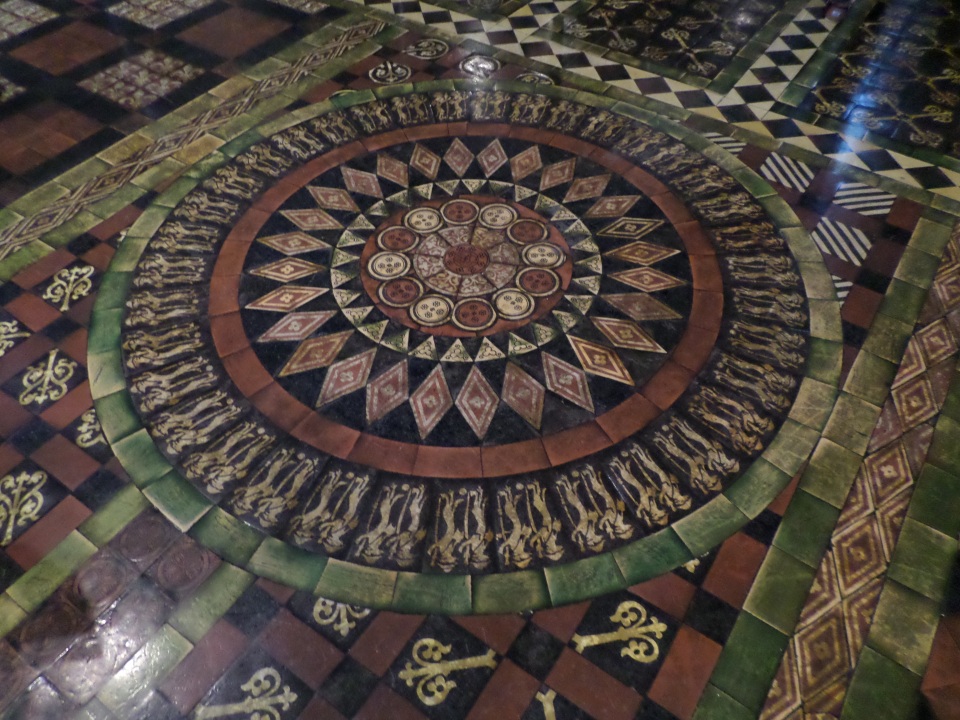
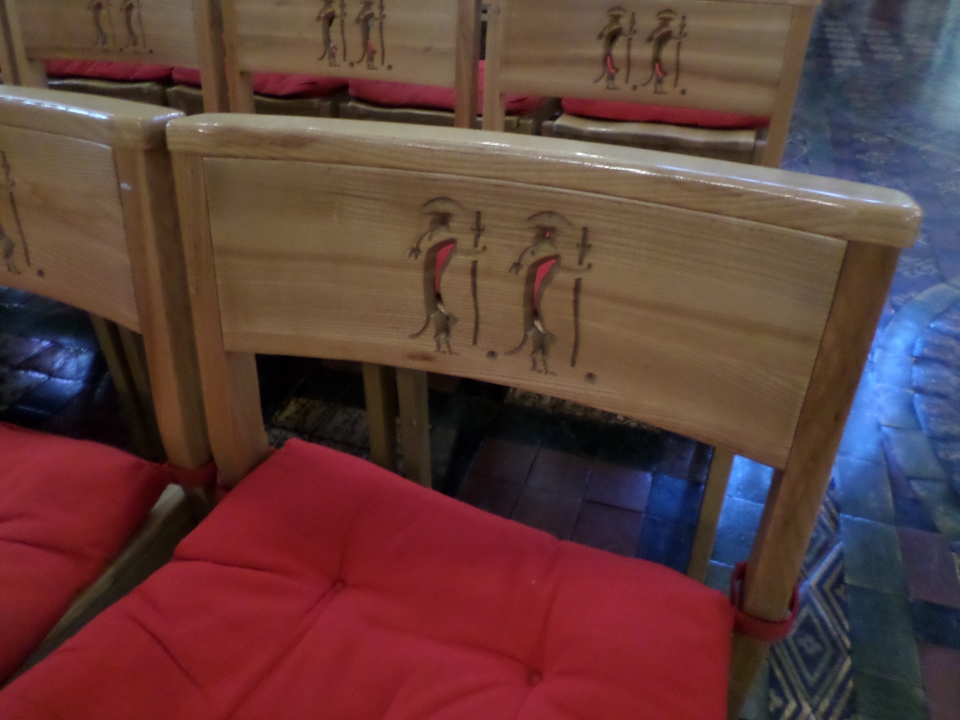
Finishing off with a view up the Nave.

Christchurch Nave
By then it was time to go and catch the train to Kilkenny, which I got onto with 8 minutes to spare. The trip was less than 2 hours, and for some of the way I chatted with the ladies around the table I’d joined. I found a taxi at Kilkenny station and the driver found the Guest House. I was welcomed with a cup of tea and advice about where to visit first. The Cathedral of St Canice has a round tower one can climb up, so that was my first stop.
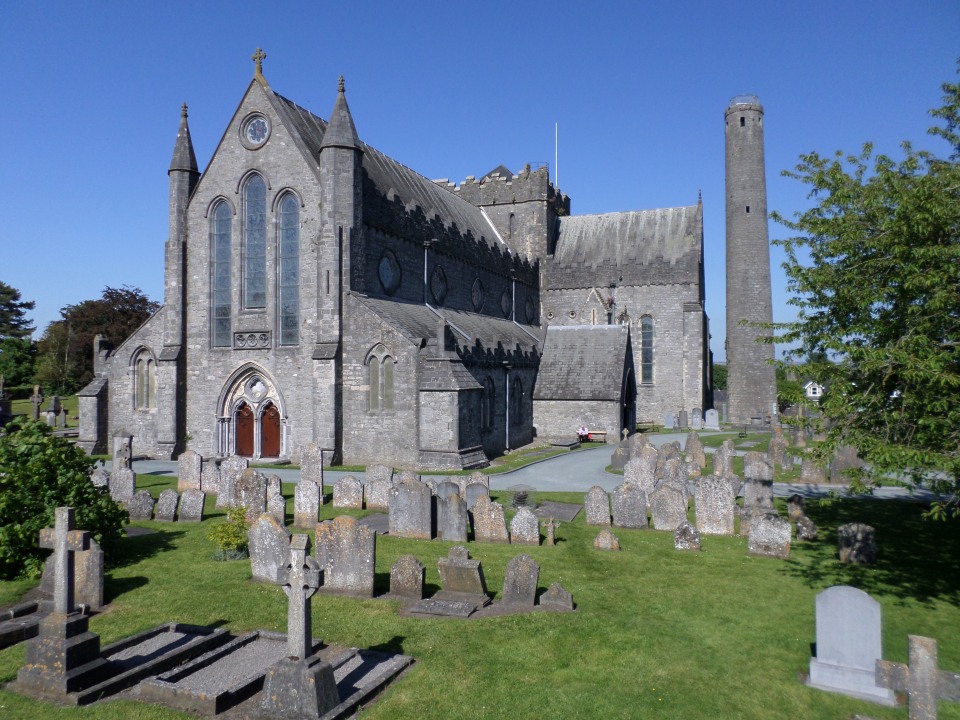
The 30 metre climb up the round tower is first an external metal ladder to get up to the door, then a sequence of about 14 wooden steps from floor to floor, until the last few steps, which are stone worked into the wall.

The view from the top is well worth the climb, giving an overview of the city and surrounds.
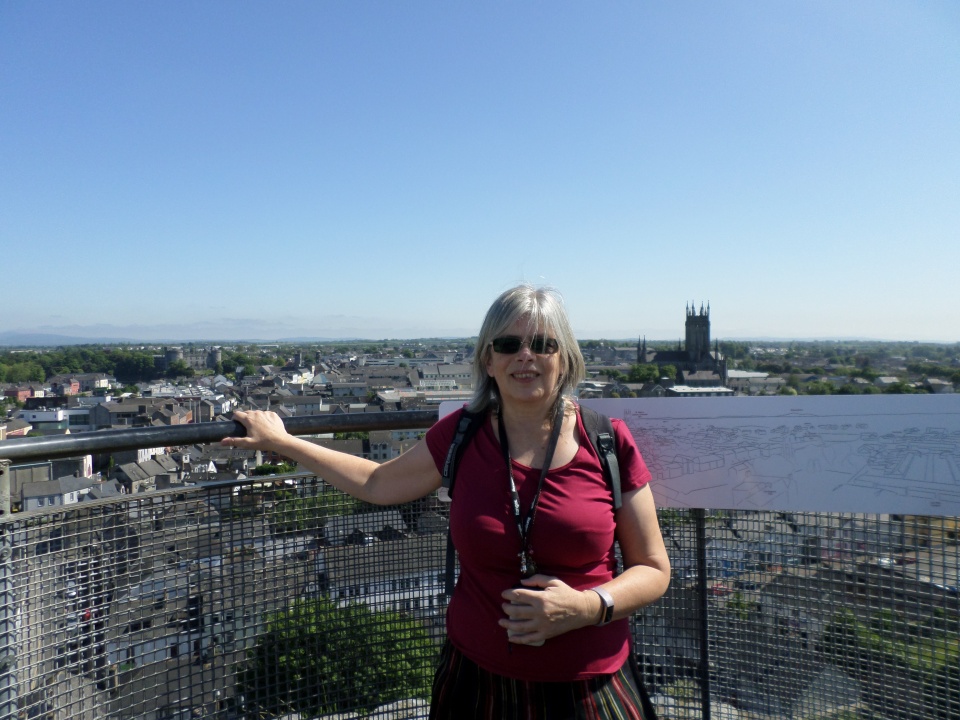
The original monastery dates from the 6th Century and the early Christian conversion of Ireland. The round tower dates more from the 10th century and the Viking activity on the island. The current Cathedral dates from the Norman occupation of Ireland, being started in 1202, but taking a hundred years to complete, and with various restorations thereafter, especially after Cromwell’s depredations in the 17th Century.
The Visitors Guide provides a detailed tour of the cathedral. The most interesting bits to me were the font, the Ireland’s Memorial Records, and the beautiful wood carving in the Quire.
The Font is 12th century and the lid is in the shape of a scallop shell, because it was from here that pilgrims left on pilgrimage to Santiago de Compostella. I was rather more interested in the fact that it stands on four legs as well as a central pedestal.

Housed in the Cathedral are a set of eight books in which are recorded the names of all the Irish soldiers (over 49,000) who lost their lives in the First World War. There is also a set of books for the Second World War. Both sets are beautifully decorated, WW1 in black ink, WW2 in colour.
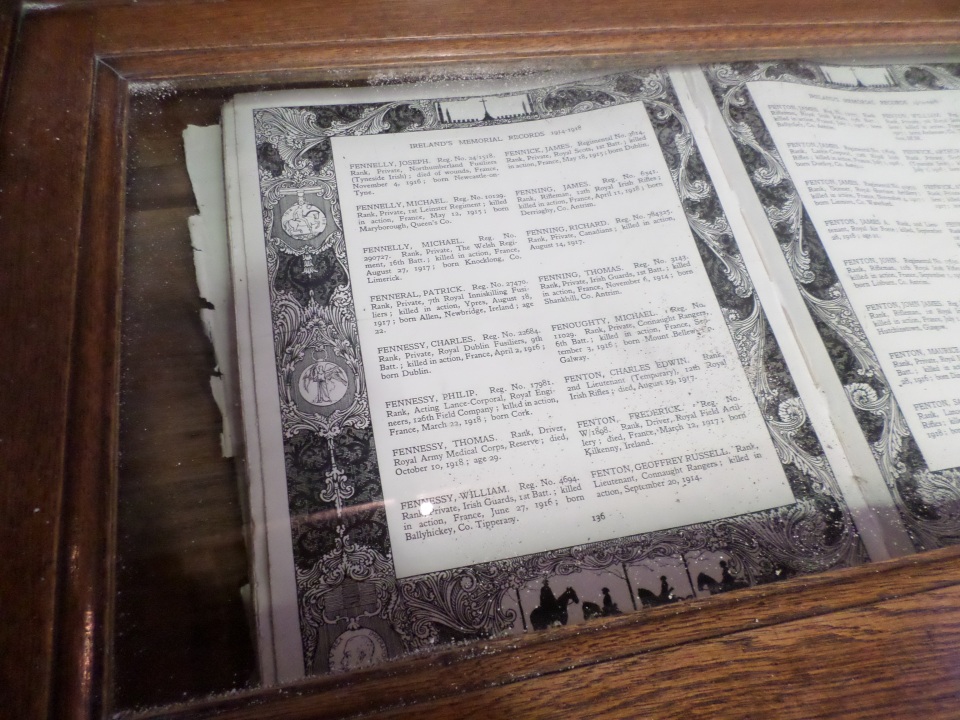

The Choir stalls were installed in 1901, but were inspired by the 15th Century medieval choir stalls of Bruges Cathedral. They make symbolic reference to the four evangelists an angel for Matthew, lion for Mark, ox for Luke and the eagle for John.
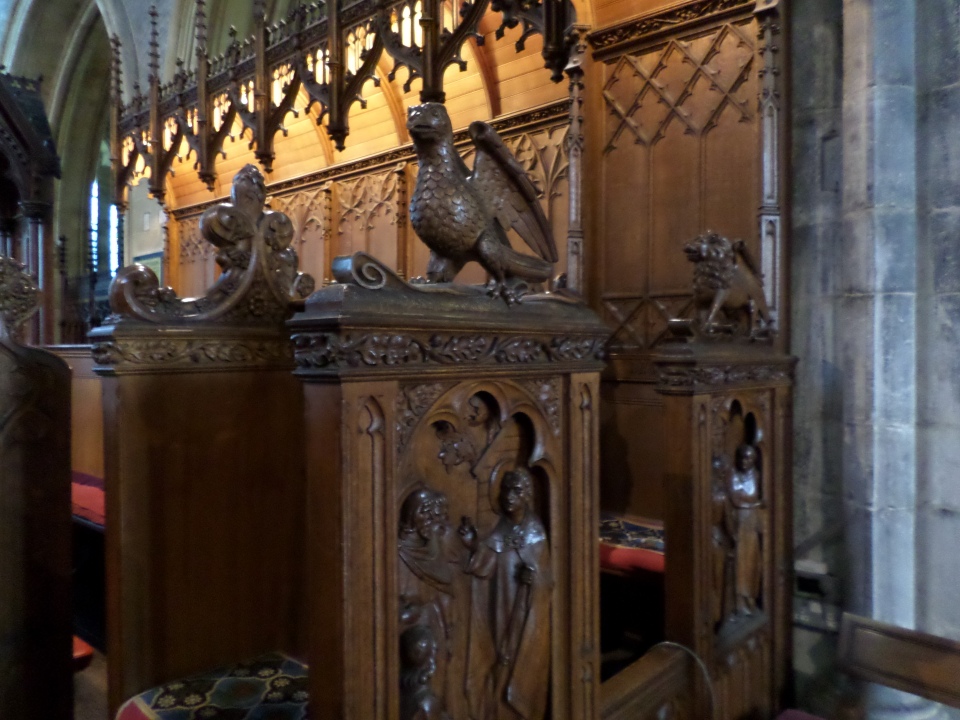
Tucked away in a corner was a model of medieval Kilkenny!

From the Cathedral I walked through the town centre along Parliament and High Streets during which time I saw a dinky open tourist tram evidently showing the sights – I shall have to find out about that! Finally I got to the ‘parade ground’ below the castle, found a nice Pub (The Field) and enjoyed fish and chips and a duo singing traditional tunes. After which I wandered home, having racked up just over 10,000 steps and 20 floors of climbing during the day.

Dublin 8
The National Museum of Ireland (Archaeology) was terrific. Lots of artefacts and an amazing amount of gold found in hoards in bogs! There were flint tools, fish traps, clothing, all sorts of things that give some information about life way back when.
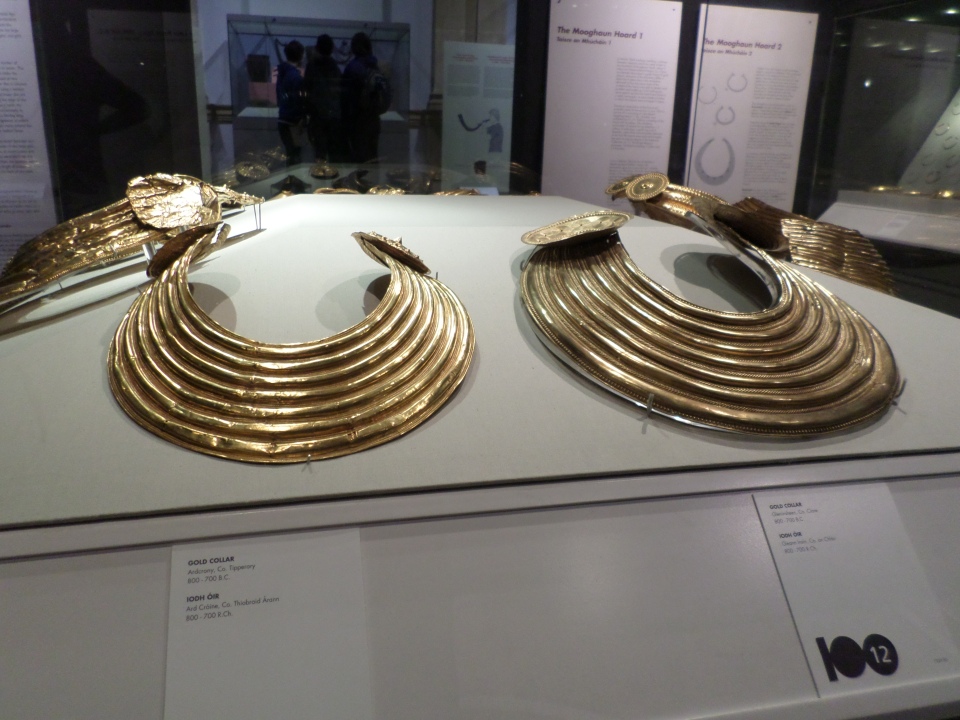
I like models and maps, and there were a few. The model of Fishamble Street was a good example. The area was probably excavated before the current City Council Buildings were constructed on the west side of the street.
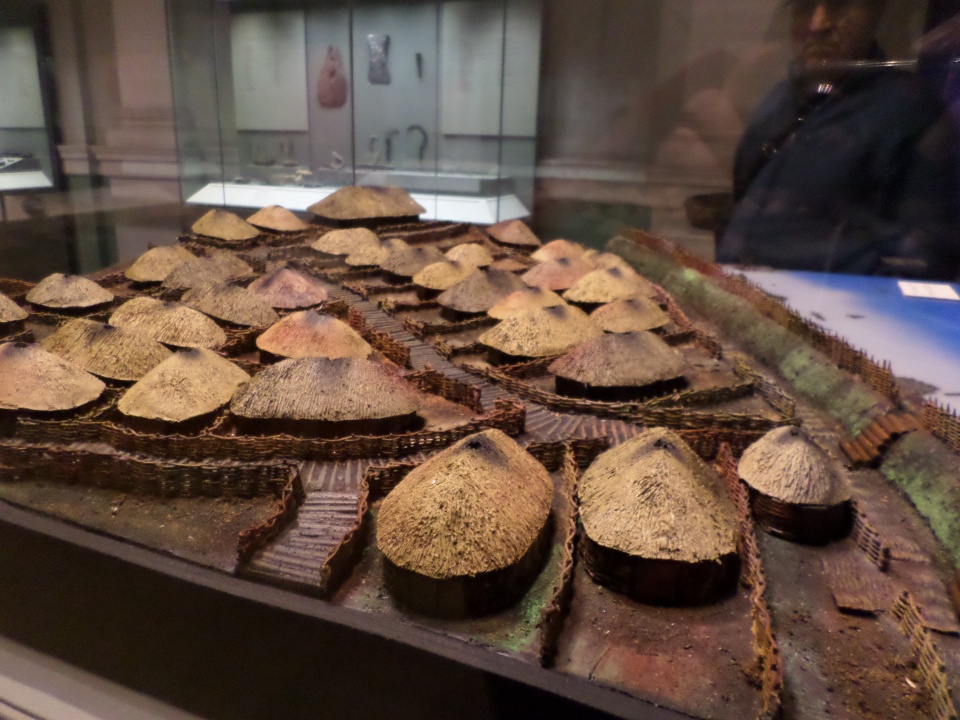
Having exhausted the Museum, I moved on. Outside, I photographed the typical Georgian streetscape, and realised Bram Stoker lived in the house opposite.
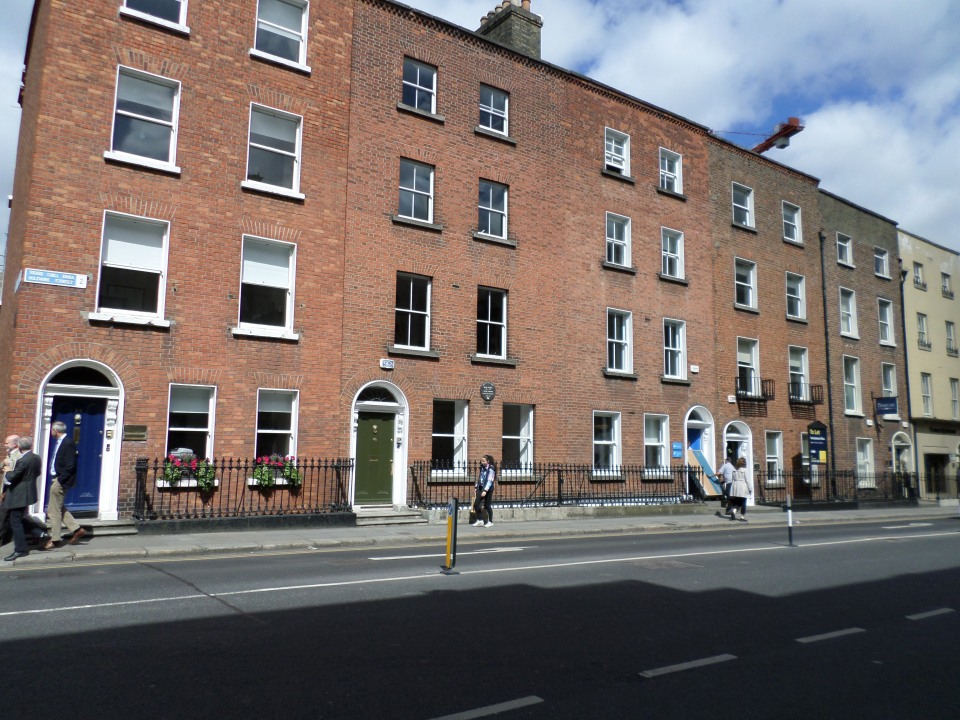
The next stop was the Little Museum of Dublin, but I had to book onto a tour at 12 noon. With a half an hour to fill, I wandered about St Stephen’s Green. It is a lovely park, with a small lake and lots of trees and bushes separating some open lawns. The Park was occupied during the 1916 Rebellion; trenches were dug and the rebels settled in. Some British took over upper floors in nearby buildings and had guns that could range across the park. Apparently the gun fire stopped for an hour a day so that the groundskeeper could feed the ducks. It was not for long, as the rebels withdrew to the Royal College of Surgeons building after a while, and surrendered on day 6.
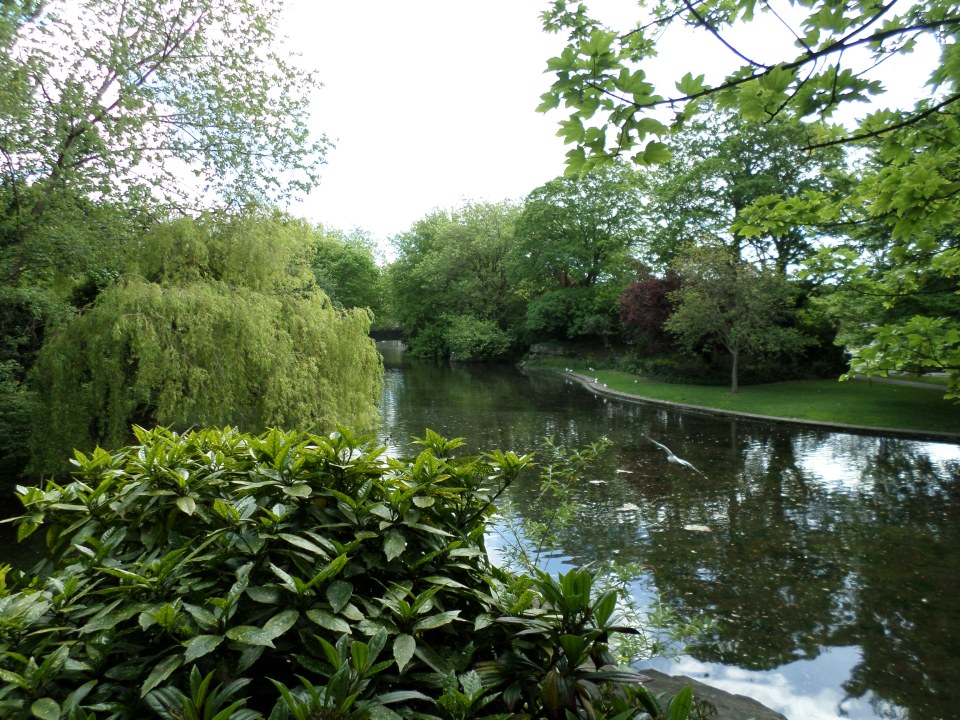
The Little Museum of Dublin was interesting. It is made up of material donated by Dubliners, and is in a typical Georgian house, although not set up as a furnished house in that sense of a museum. The main part of the Museum is two rooms of objects, pictures and documents that evoke the different decades of Irish history over the last 120 years or so. A guide talks through the history as represented, with the group of visitors, in around 30 minutes. There are other exhibits in other rooms, one sets out the history of gaelic football; another has the office of the editor of the Irish Times at the turn of the nineteenth century, one room presented the story of U2 (the rock band). Downstairs in the basement is a Cafe, so I had soup and soda bread for lunch.
A tour of Trinity College with a student guide came next. The whole thing was quite interesting, and then the group went into the old Library to look at the exhibition regarding the Book of Kells (and other illustrated books). Extraordinary detail and design in the illustrations and scripts. I also went upstairs into the ‘long room’ of the old library itself. It was apparently the inspiration for the Jedi Library in Star Wars 2.
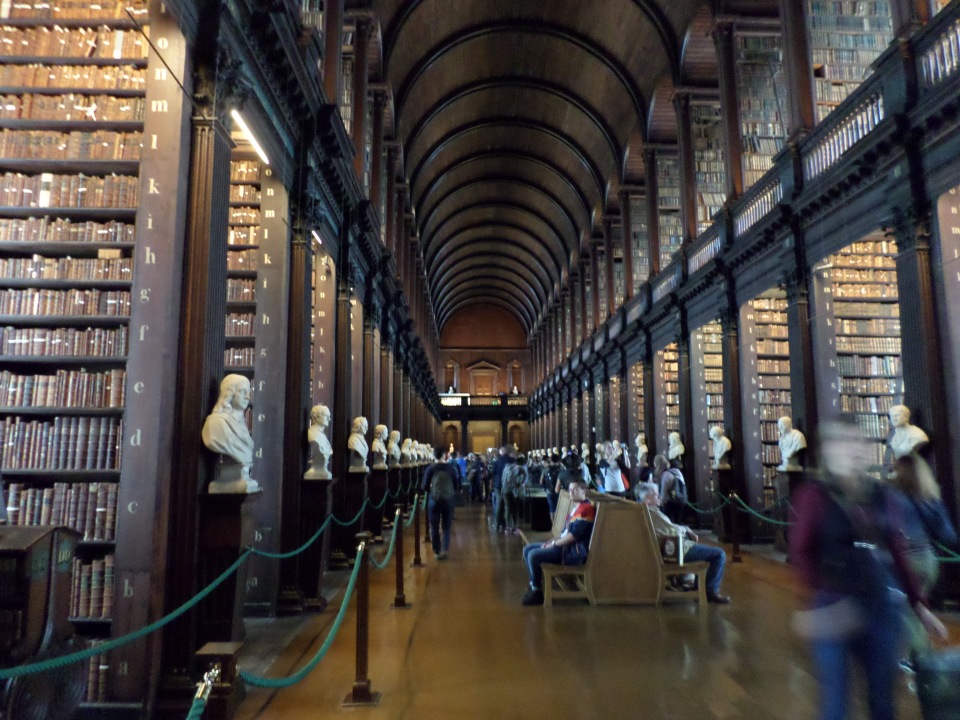
I walked from Trinity College to Christchurch Cathedral, to find that the Cathedral was closed for the day. Instead of touring the Cathedral I walked on a bit further to the parish church of St Audoen. It dates back to the 12th century and grew over the following centuries, but then declined and later parts of the Church were unroofed and became ruins, while the main original part of the Church is still in use.
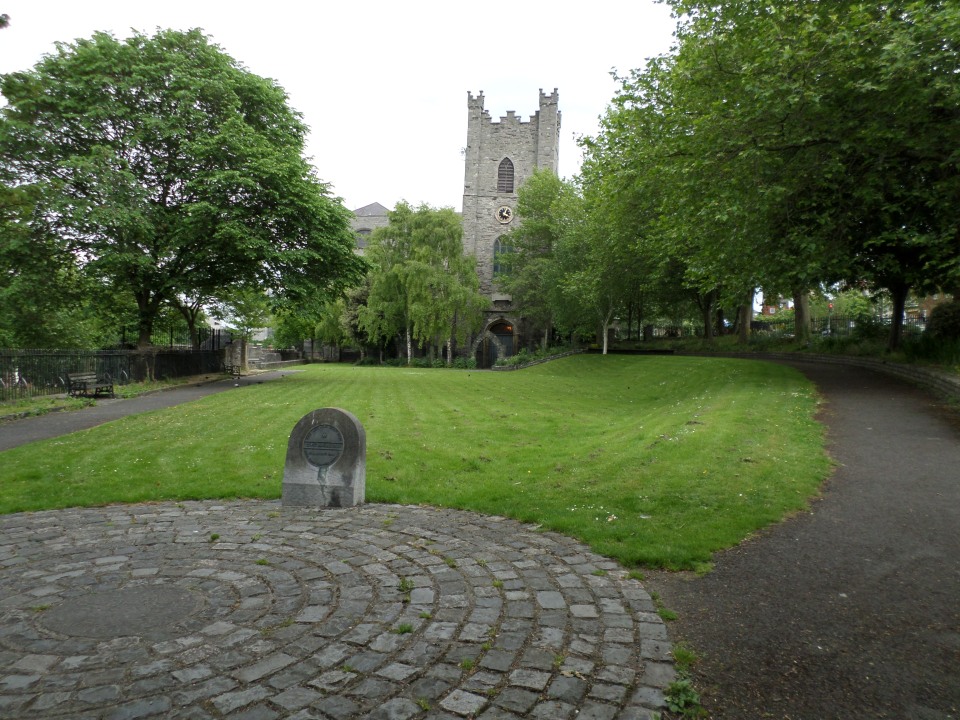
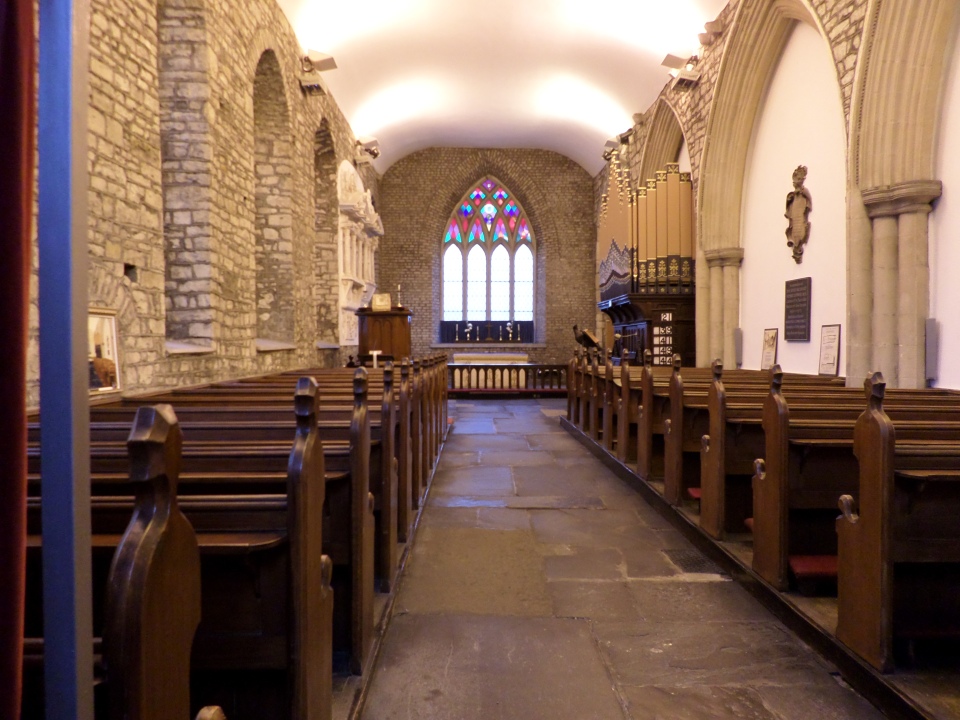
I walked down Bridge St and photographed the Brazen Head (oldest pub) and then along the quay. I walked up Fishamble Street which still has the curves shown in early maps and the model, so required photographs looking up from the Quay, and then from half way up the hill.
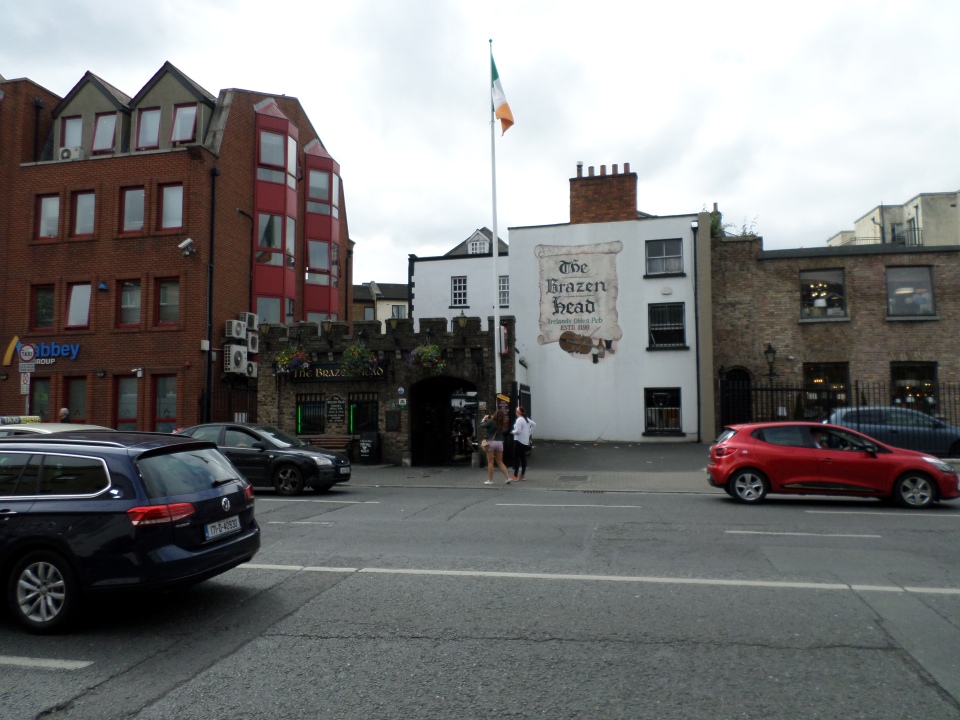
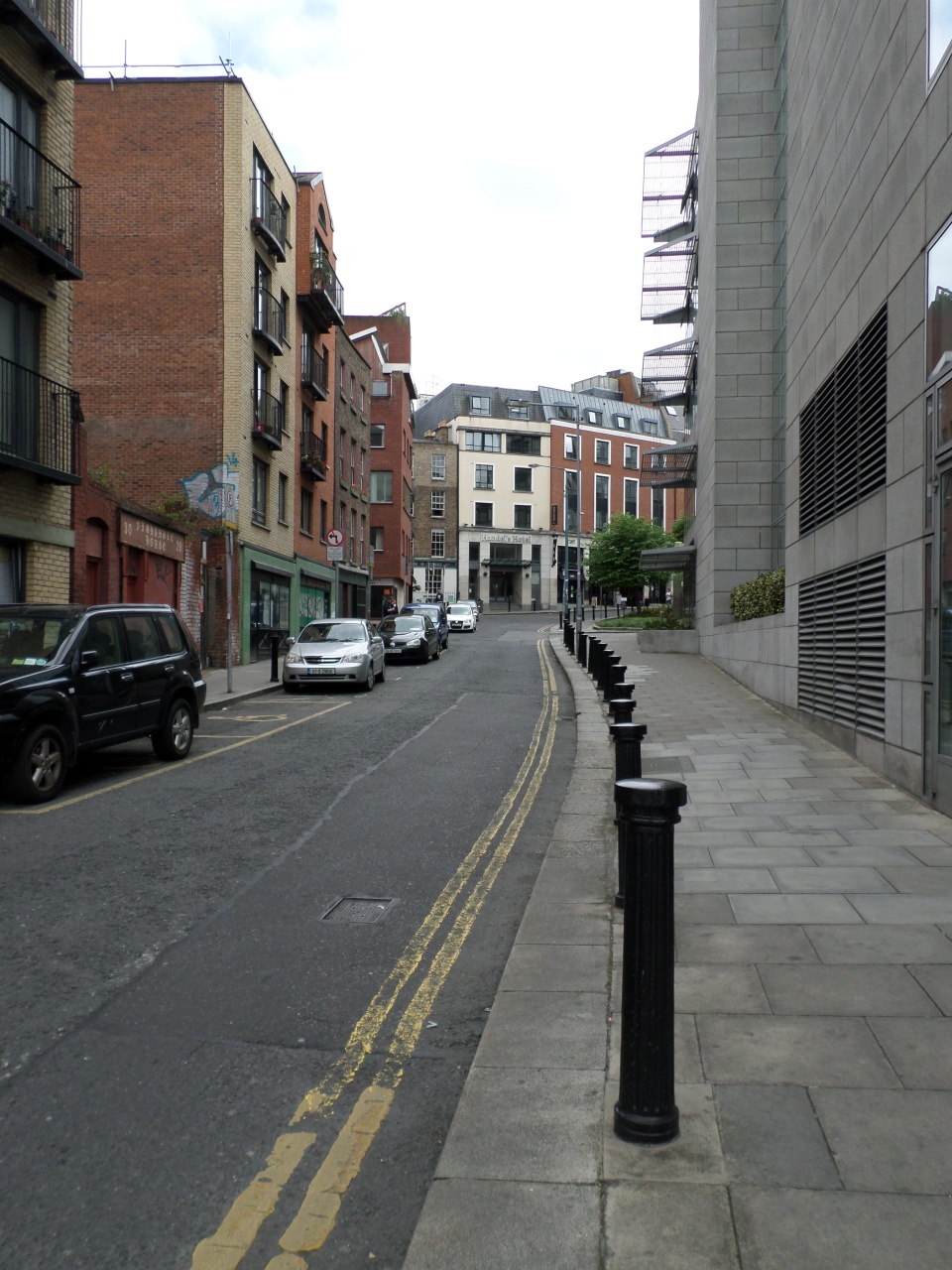
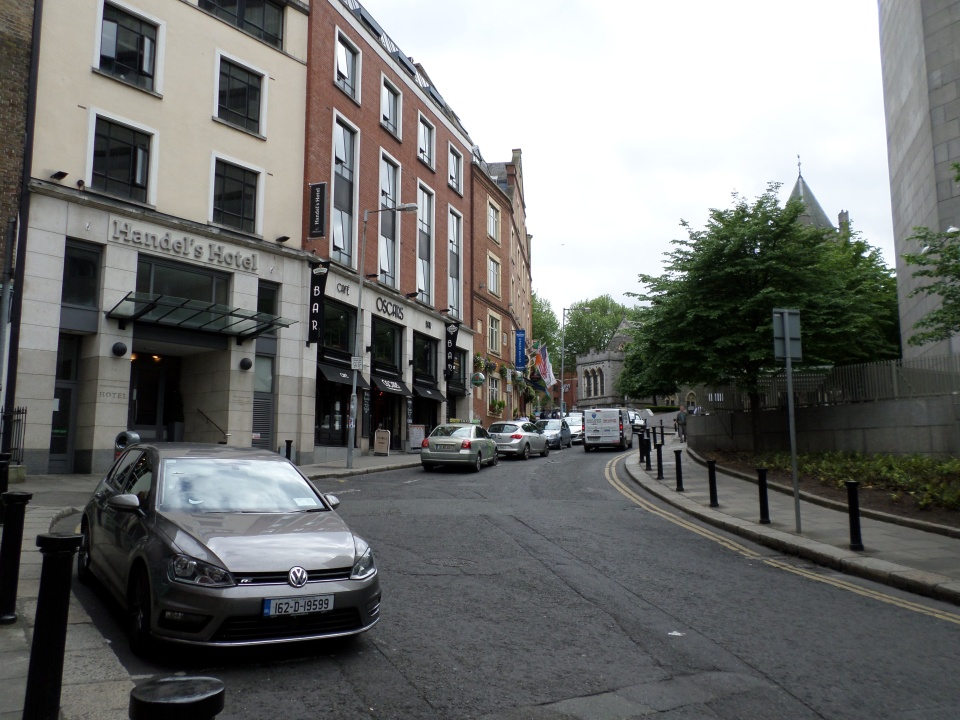
That was enough walking for the day!
Dublin 7
It was Monday 22nd May, and I was off on a Wild Wicklow tour through the Wicklow Mountains to Glendalough (and back). I got to the pick-up point, the Shelbourne Hotel on Bus 39A. I had time to wander into St Stephen’s green- a large park opposite the Hotel. The gate I entered was guarded by a statue of Wolfe Tone, leader of the 1798 Rebellion; he committed suicide in prison rather than allow the British the satisfaction of hanging him. Someone had given him some flowers.
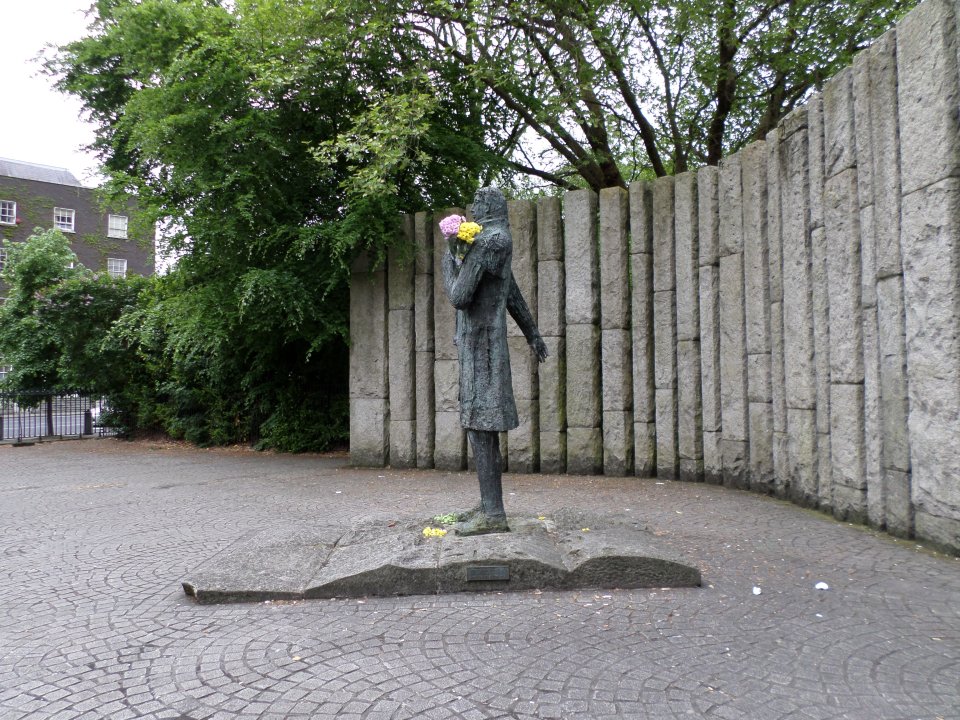
On the other side of the ‘gate’ is a famine memorial. It appears that the sculptor was not good at doing heads.

From the park, I caught sight of the Wild Wicklow Bus, not precisely outside the Hotel, but near enough. The Hotel, incidentally, has a Doorman with top-hat and tails.

Naill the bus-driver/guide let me on the bus a bit early, so I was able to snaffle the front seat – the whole idea of bussing down to the Shelbourne in the first place. We picked up more people at the Molly Malone statue and at the Gresham Hotel on O’Connell Street. Then we headed out of town. We were heading south east along the sea side, and went through Dun Leary, a harbour constructed under the supervision of Capt. Bligh. We were given good tips about walks along Bray Head and up a hill the name of which I don’t recall. We also found a view of the Martello Tower that James Joyce lived in for about a week and upon which he based the Tower in Ullyses. We took a detour through an expensive area of houses and saw a black car driving through Bono’s (well-fortified) front gates. Naill seemed quite excited that it might be Bono himself! Photographs through the bus window did not come out well!
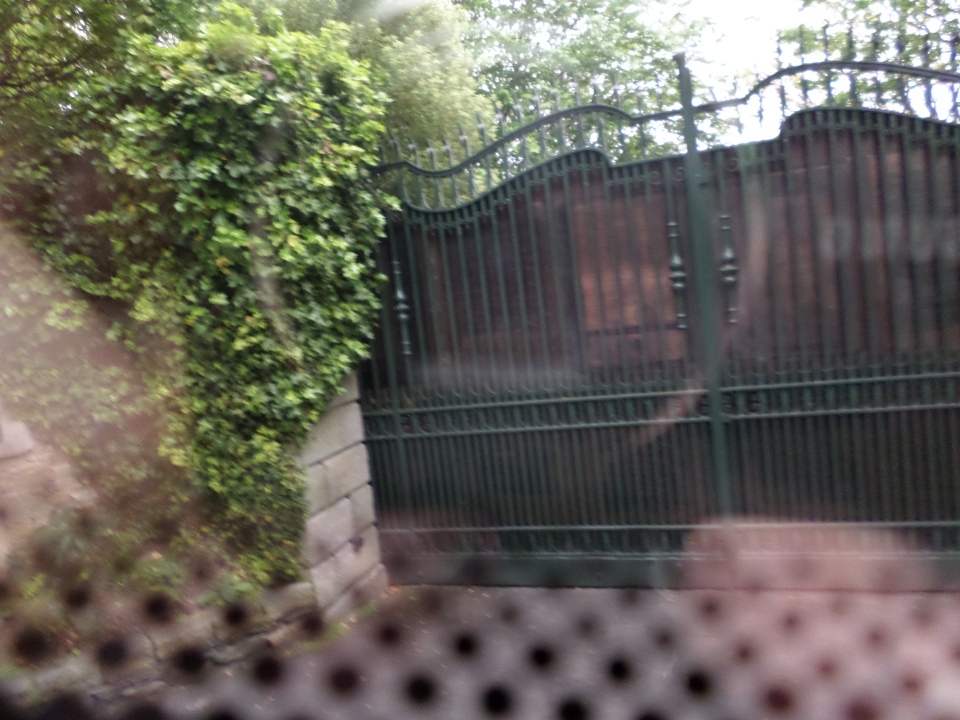
We stopped at an Avoca Handweavers outlet, which really seemed like a very upmarket department store. The idea was to have morning coffee in the store coffee shop, so I bought a couple of snack bars and ate two with my bottled water while admiring the flowers and sequoia trees in the car park.
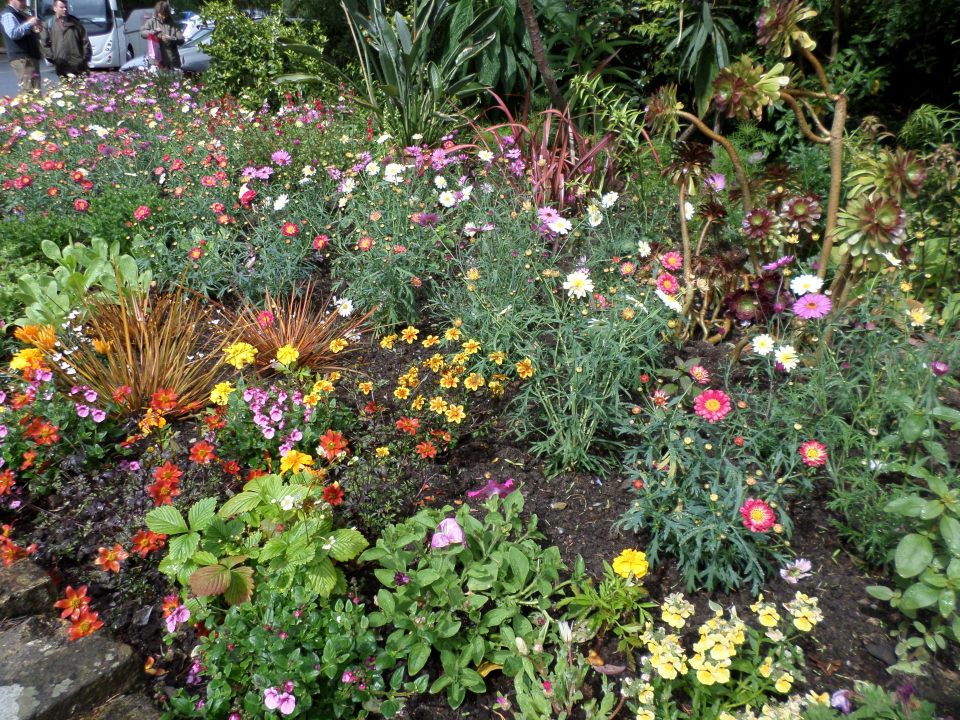
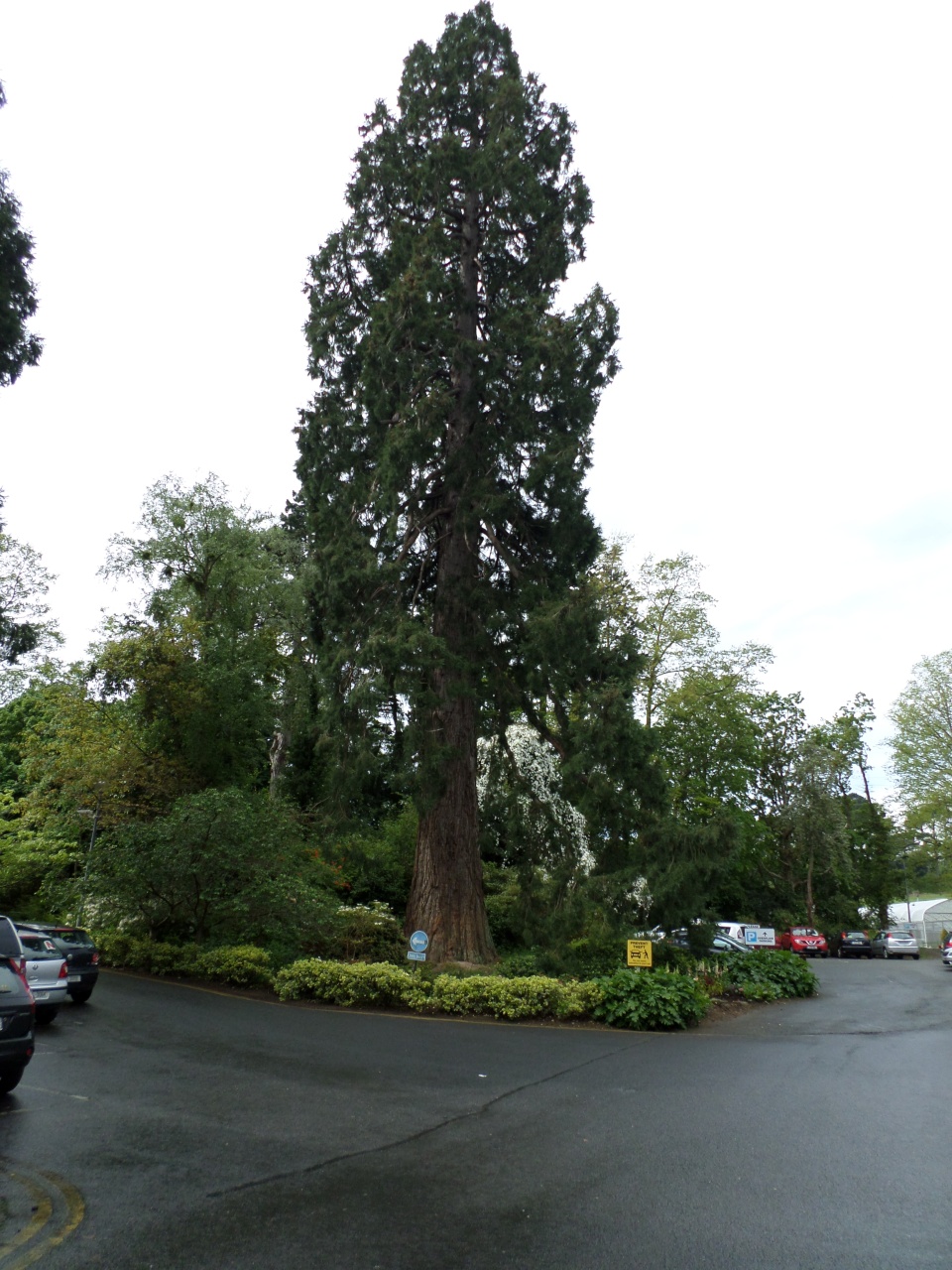
We then headed for Powerscourt Estate – not on the usual itinerary but we were picking up a couple more passengers at the associated Spa Hotel. It looks like somewhere to stay if I ever win the lottery. Thus, we got driven past the facade of Powerscourt house and saw something of the park round it. The Gardens are one of the top 3 in the world, but those were not visible from the bus.
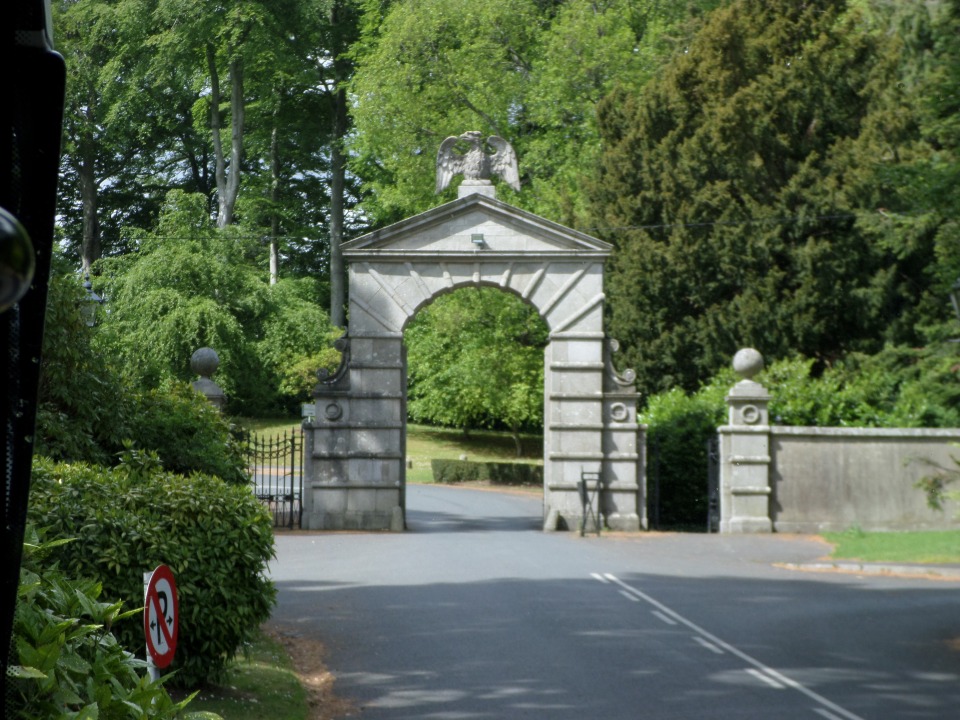
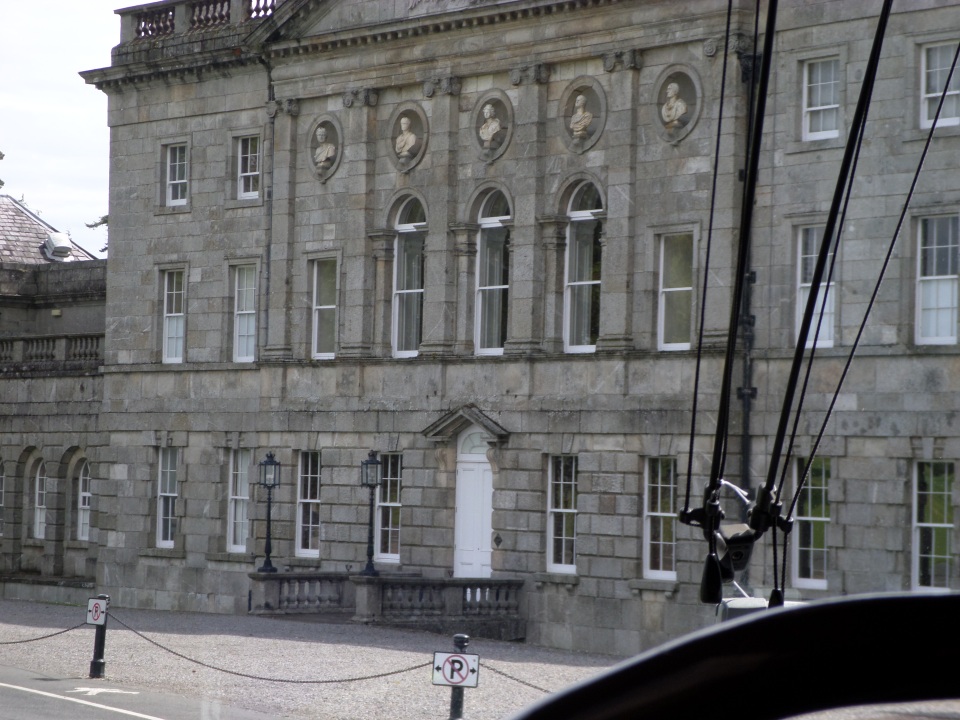
From there we proceeded into the Wicklow Mountains along the old military road (I think Bligh had a hand in that too) and paused to see the little church where Nicole Kidman and Tom Cruise were married.
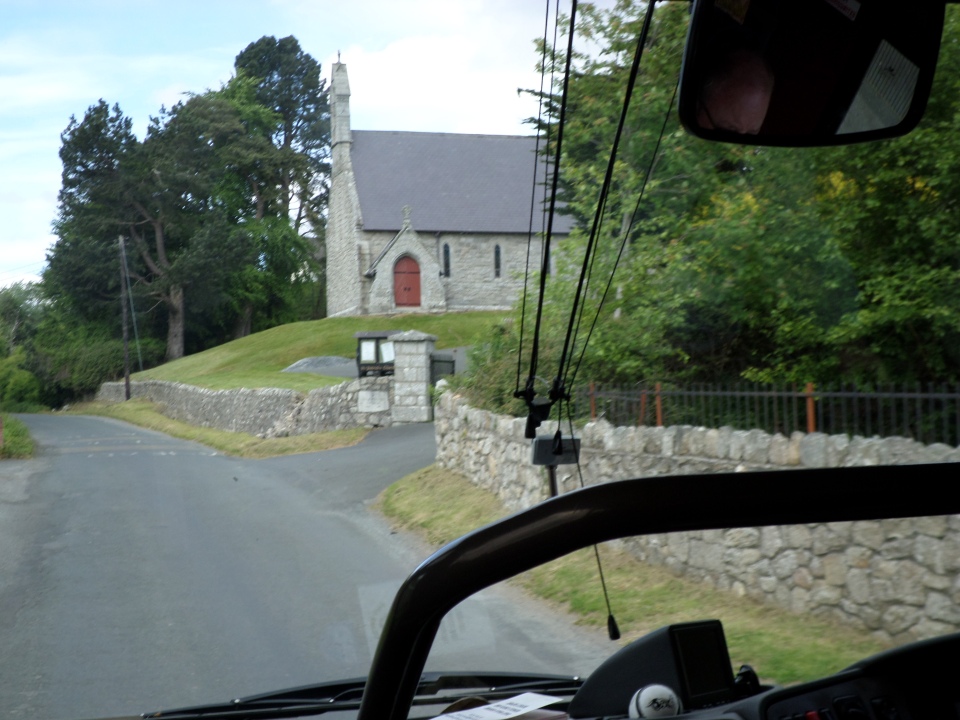
Further along a Military Barracks that was used to accommodate German pilots who crashed in the mountains on their way to bomb Belfast, and now houses a ‘secret’ diplomatic conference centre. Upon the moors, there are peat, gorse and heather, a few streams and tarns and lots of wind. A bridge was used in filming of Leap Year, as were other locations.
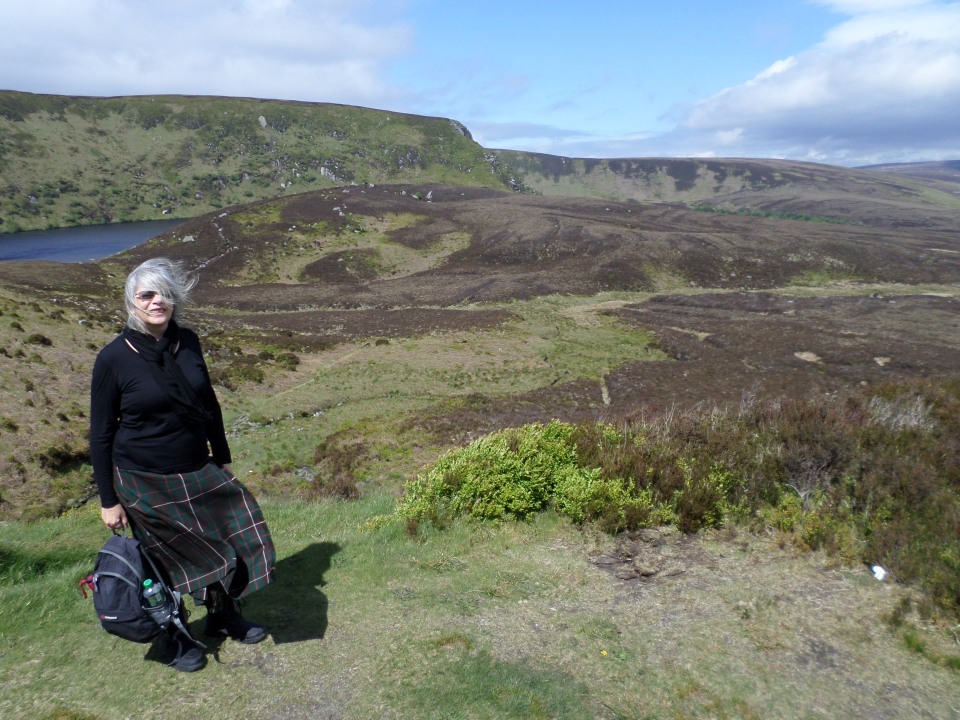
A few miles further along, we also admired the estate of a rich Lord someone who is selling his estate for many millions. The Lough was used to film an episode of Vikings.
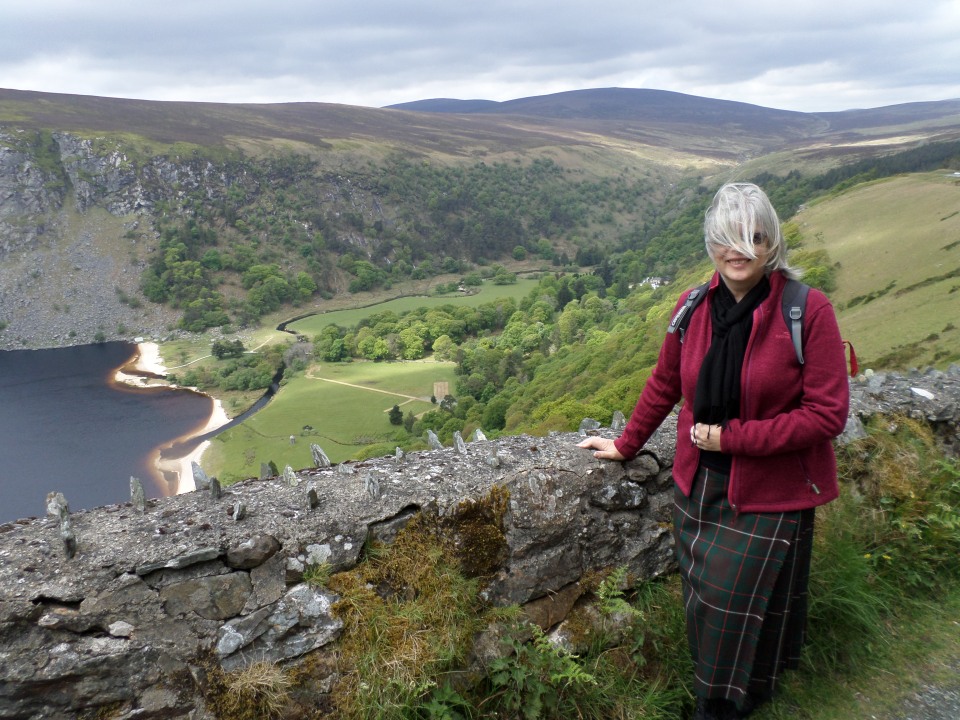
We stopped at Laragh for lunch in a pub. I found a table, helped myself to water and ate my apple and remaining health bars. There was a river running by, on its way down from Glendalough, as it turned out.
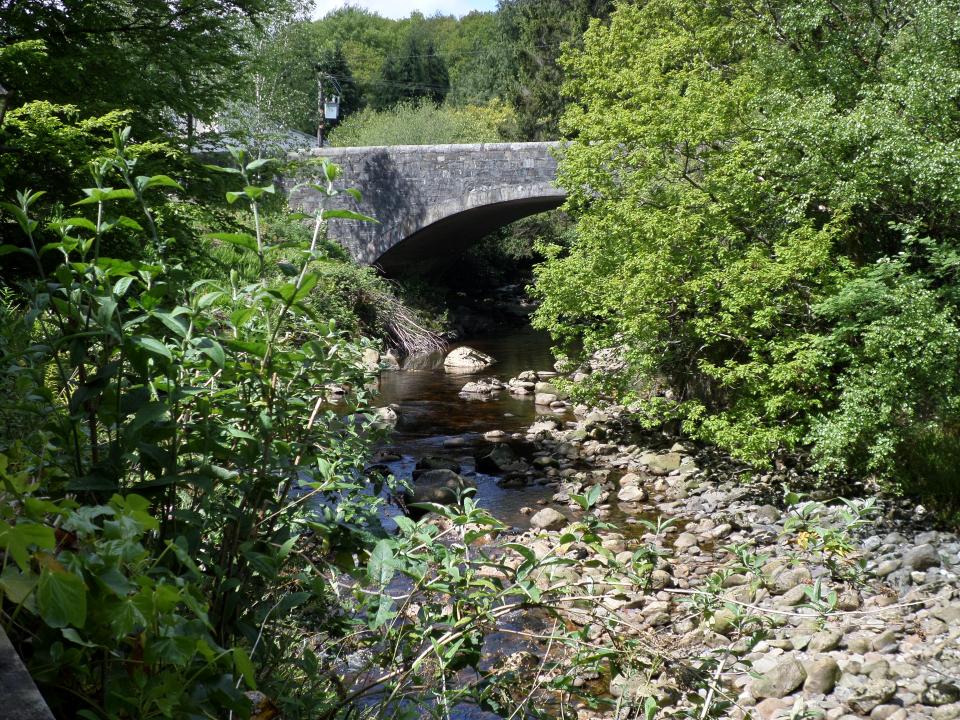
Glendalough was not far. We first were driven to the Upper lough, where we walked to the shore to take photos, there were interesting diagonal shelves of rock in the hillside above the lough Back on the bus we had a taste of Jameson’s whiskey.
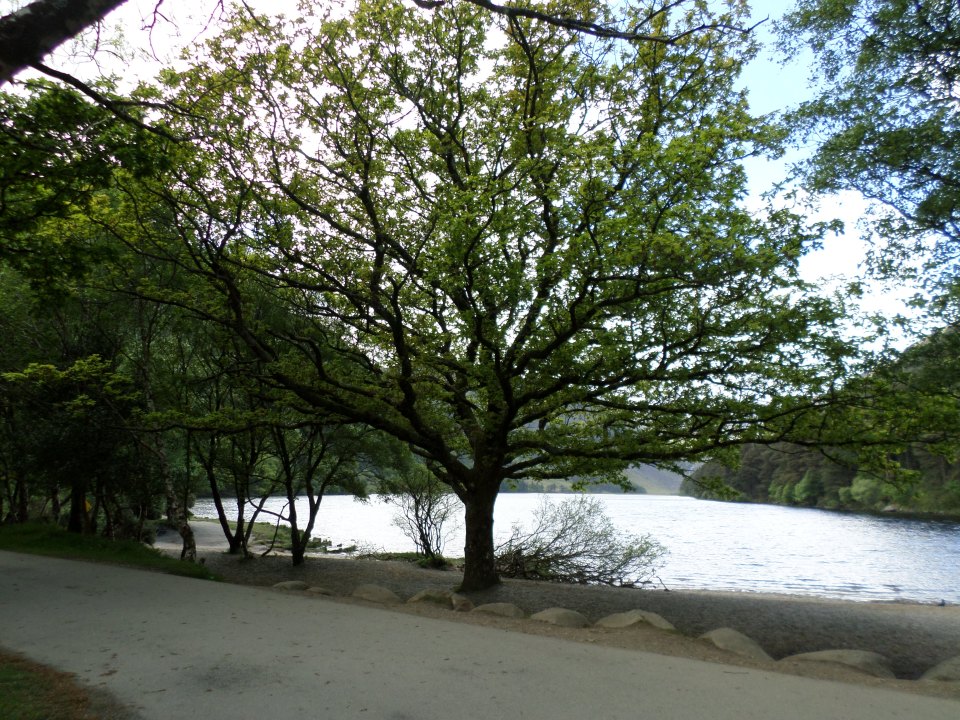
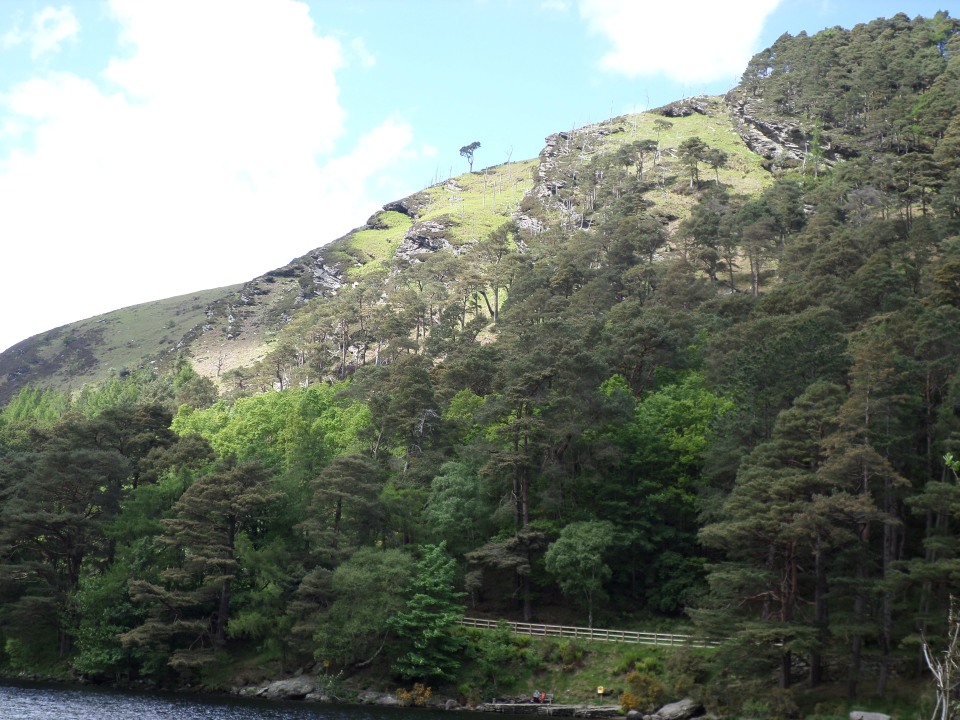
At the lower area we were escorted round and told about the enclosure, then left to our own devices for a short time. Long enough to take photos and catch some of the atmosphere. St Kevin settled here as a hermit in the sixth century in a cave above the upper lough, and was then invaded by other religious and a community developed round the lower lough. The area was destroyed in the reign of William III, so only the Round Tower and a stone roofed church are relatively undamaged. The entrance gateway has a ‘sanctuary stone’ with a cross scratched into it, thought to be the oldest Christian symbolism in Ireland. Outside, a busker was playing the Ullean pipes.
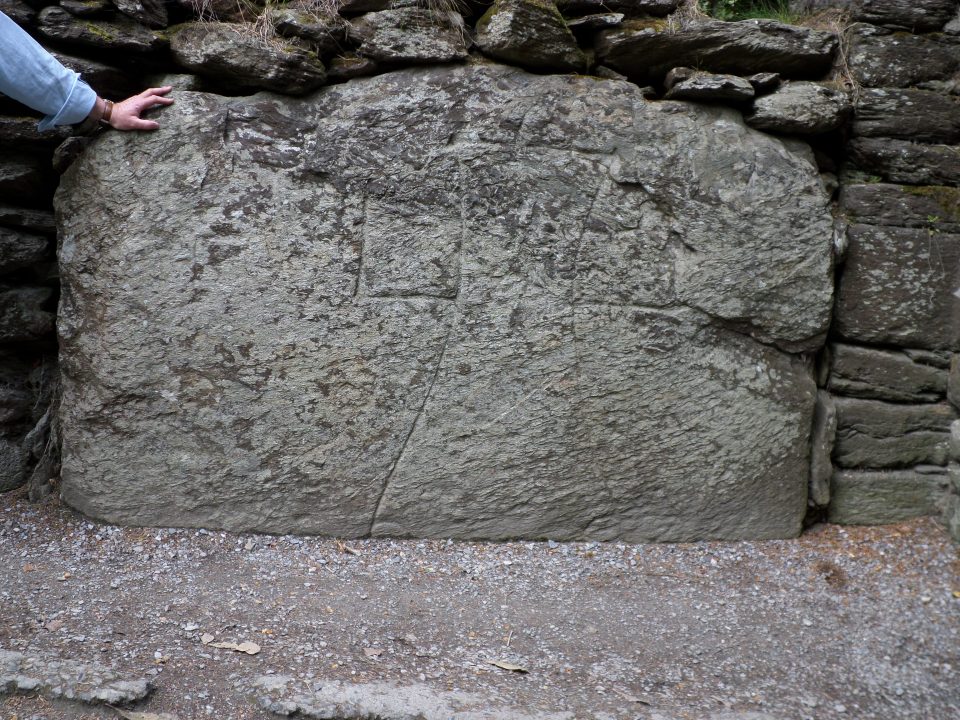
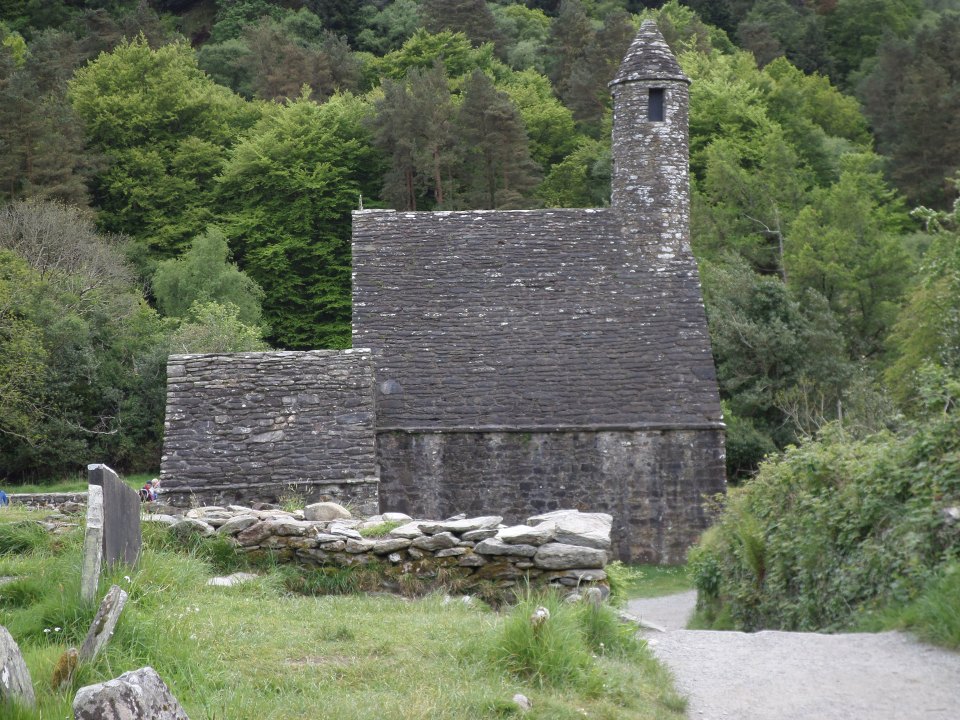
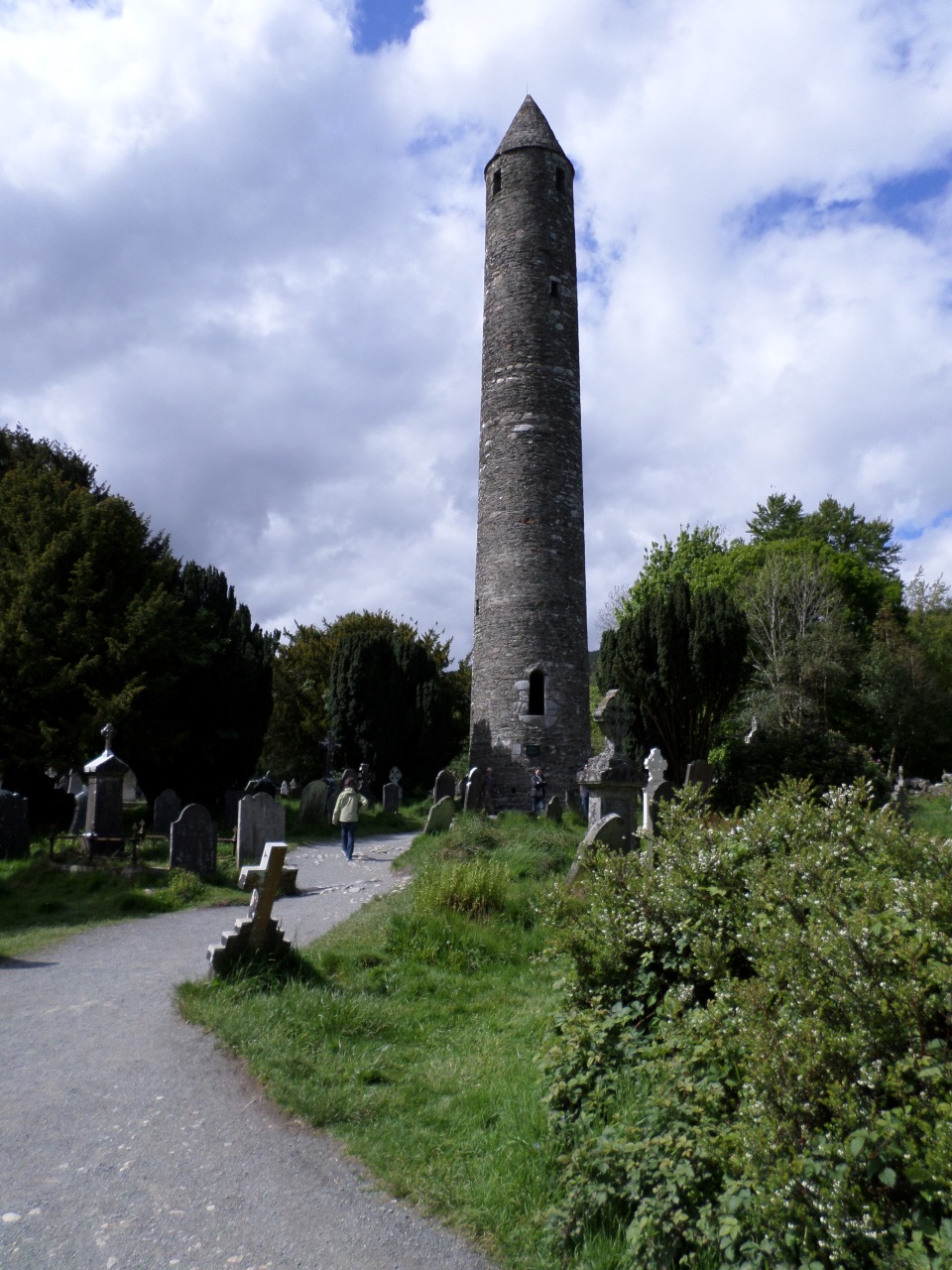
We headed back to Dublin, via Powerscourt, round the edge of Sugarloaf mountain, not looking as tall from the south as from the north, because we were up on the plateau. There were also some views of farmland and green fields full of sheep.
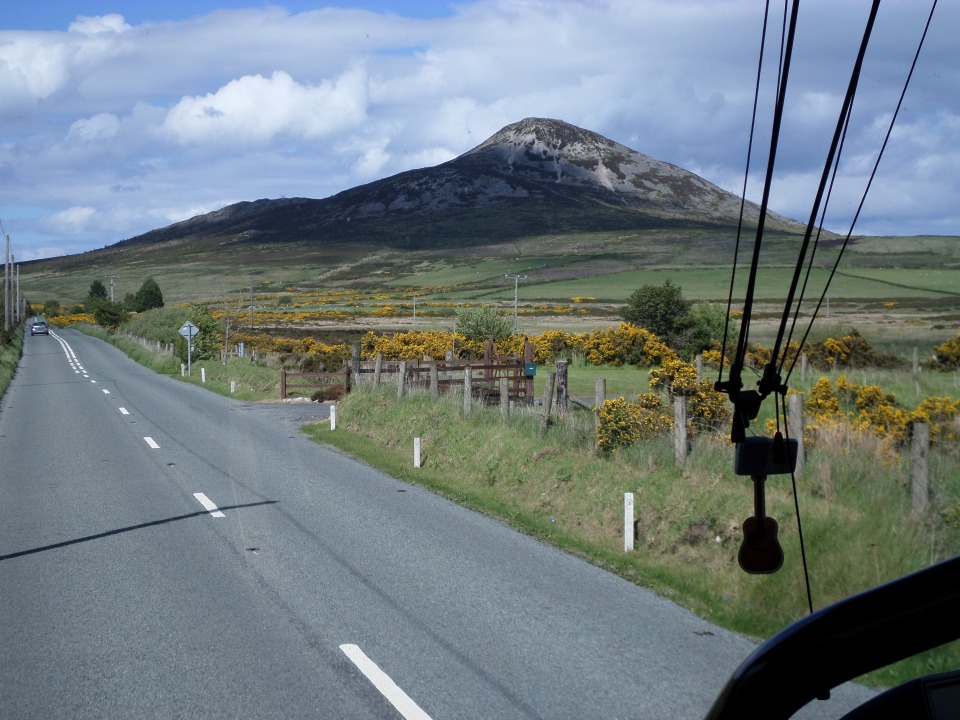
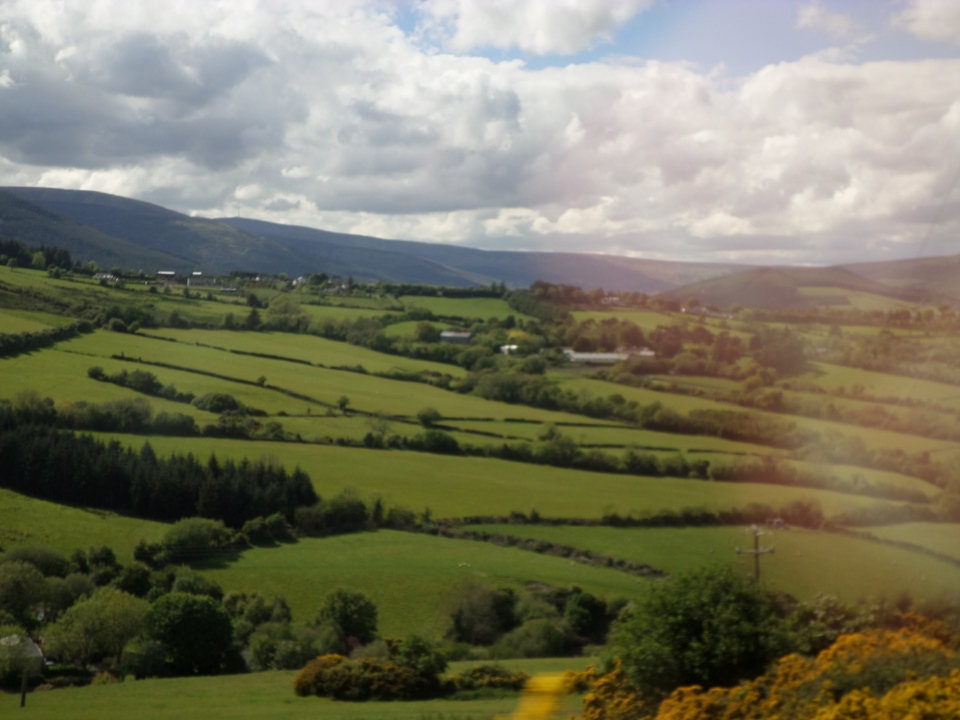
Back in Dublin, I just had a quiet evening.
Dublin 6
Day 6 was Sunday 21st May. After a hearty breakfast I headed out to explore some more. Finding that the Museums I wanted to visit were not open until 2 pm, I thought I’d start off with a circuit of the DoDublin hop-on/hop-off bus. My ticket for Malahide and Howth the day before included one circuit (but without hopping) on the bus. So I got aboard near the Hotel and did a circuit. The first bit of interesting information was that Fishamble St (that I’d walked up from the return 39A bus for a few days) is the oldest street in Dublin, coming up from the Liffey to the centre of the old Viking settlement. At the bottom of the street is the site of the Music Hall (since burnt down) which saw the debut of Handel’s Messiah.
The bus turned left and paused outside St Patrick’s Cathedral as the road next to the Cathedral was blocked by tour buses. This gave me the opportunity to photograph the front of the Cathedral, and note that Jonathon Swift (he of Gulliver’s Travels) is buried inside.

There was a short detour to drop some people off at the Teeling Whiskey Distillery, then back up to the High Street, which turned into Thomas Street. We went past St Alban’s Church, the oldest in Dublin dating back to the1190’s. Then the bus drove past St Catherine’s, where the leader of the (abortive) 1803 rebellion, Robert Emmet, was executed.

We stopped at the Guinness Warehouse for a number of enthusiasts to disembark. I’ll come back here next week with Albatross.

The bus then went to Kilmainham Jail where it seems numerous rebels (or freedom fighters, depending which side you were on) were executed for treason (martyred for freedom…).
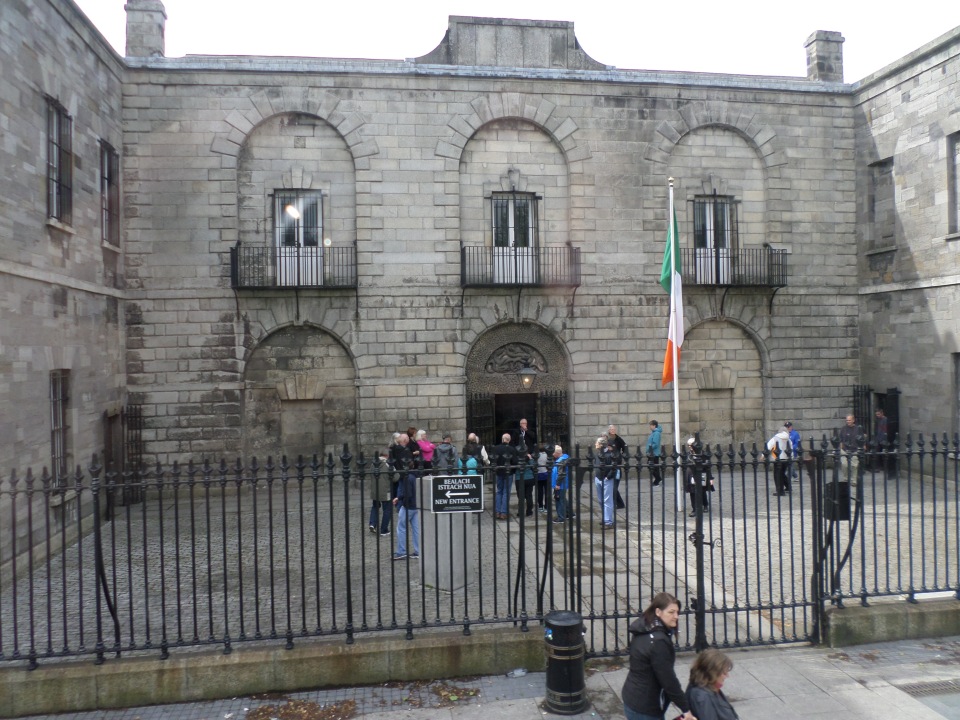
An interesting part of the ride was through Phoenix Park. It is huge, and contains a Zoo, the residence of the Irish President, the American Ambassador and lots of playing fields and open parkland. There are lots of fallow deer in there, too. Some were pointed out in the distance. There is also a Wellington monument.

Near the entrance to the Park, after exiting, we drove past the site of a mass grave of those who died in a rebellion of the 1790’s. This was on Wolfe Tone Quay (leader of said rebellion).
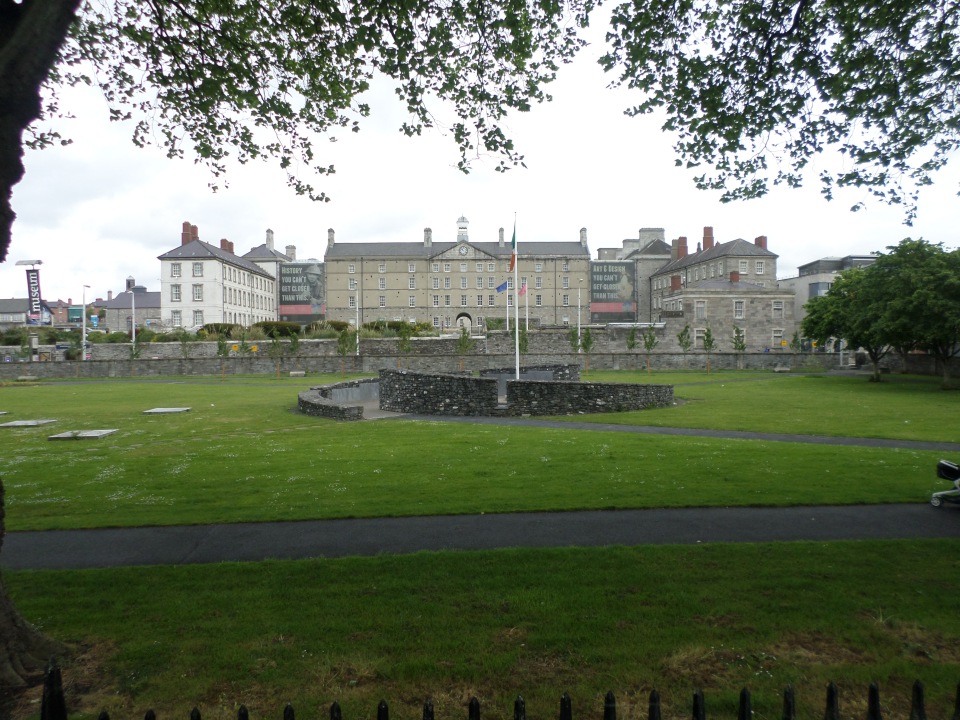
About this time I lost interest in the tour, it moved into areas I had already seen. It seemed to take hours for me to get round the circuit and back to my hotel where I spent the rest of the afternoon reading, but I did head out for the Evening of Food, Folklore and Fairies at the Brazen Head Pub – Dublin’s oldest pub. This was great fun, listening to a very entertaining story-teller give an overview of history and folk traditions, between the courses of our meal. He finished up getting us to join in the singing of some Irish songs. It was a lovely evening! For some reason the only photo I took during the evening was of a reproduction of an early map of Dublin.

Dublin 5
I was out of the hotel in time to get the Number 13 bus which took me very neatly to the GPO, or just past it. I found the DoDublin office and claimed my tour ticket. However, there was a fair while before the tour left, so I went for a bit of a walk. Quite nearby in a side street, was a statue of James Joyce. It was unveiled on Bloom’s Day – the day that is covered in Ulysses. I did try to read the book before I traveled, and got to about Chapter 6 or 8… It is one of those works about which I am unsure whether it really is the product of such genius that I am unable to follow it, or the author was having us all on. I feel that way about Jackson Pollock and that chap who wraps things up in plastic, too.

I wandered a bit further and found the Catholic Pro Cathedral of St Mary. There was a sculpture of a couple of 16th century martyrs out front. I went inside, intending to just sit for a bit, and ended up staying for Mass. It filled in the time. Actually it was very efficient: two or three readings, a short chat about Paul and Timothy, a few prayers, we queued up for a wafer and headed out again.
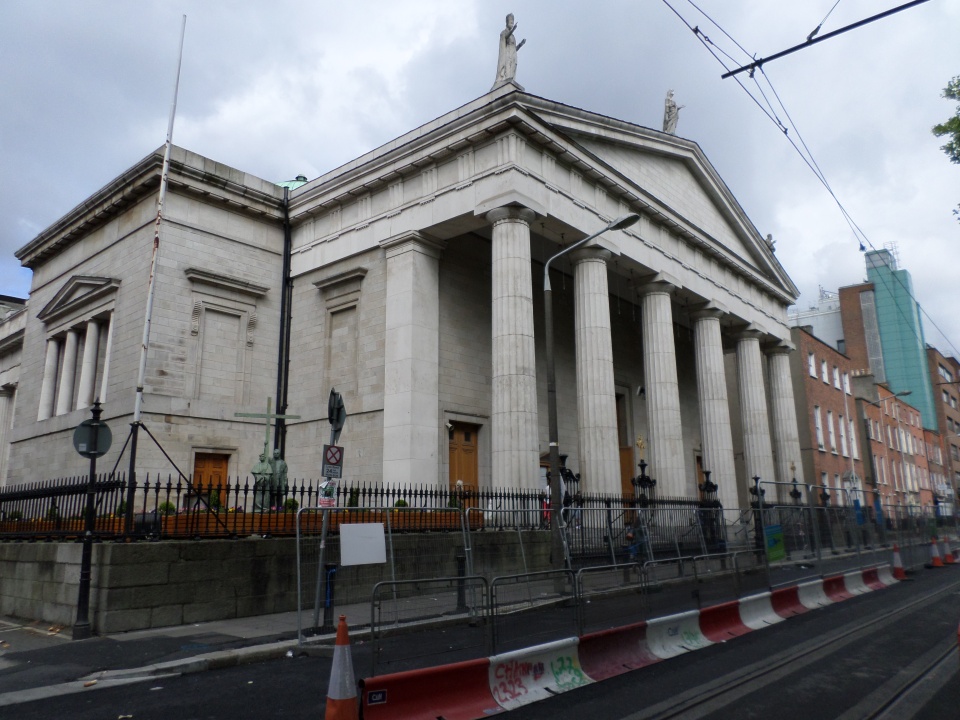
I got to the right place and shortly thereafter the big green bus arrived and 40 people all tried to get on at once. The bus driver (Michael) was very calm, considering. Anyway, I got upstairs to a left hand window seat, as desired. We headed off with a bit of commentary as we went. There is a small building called the Merino Casino (as in ‘small house’ not ‘gambling den’) in the suburb of Merino, that Michael recommended for a visit, but I don’t know if I can fit it into my packed schedule… Bram Stoker was born in Merino, and his wife had turned down two proposals from Oscar Wilde before accepting Bram. Not sure why that made it into the commentary.
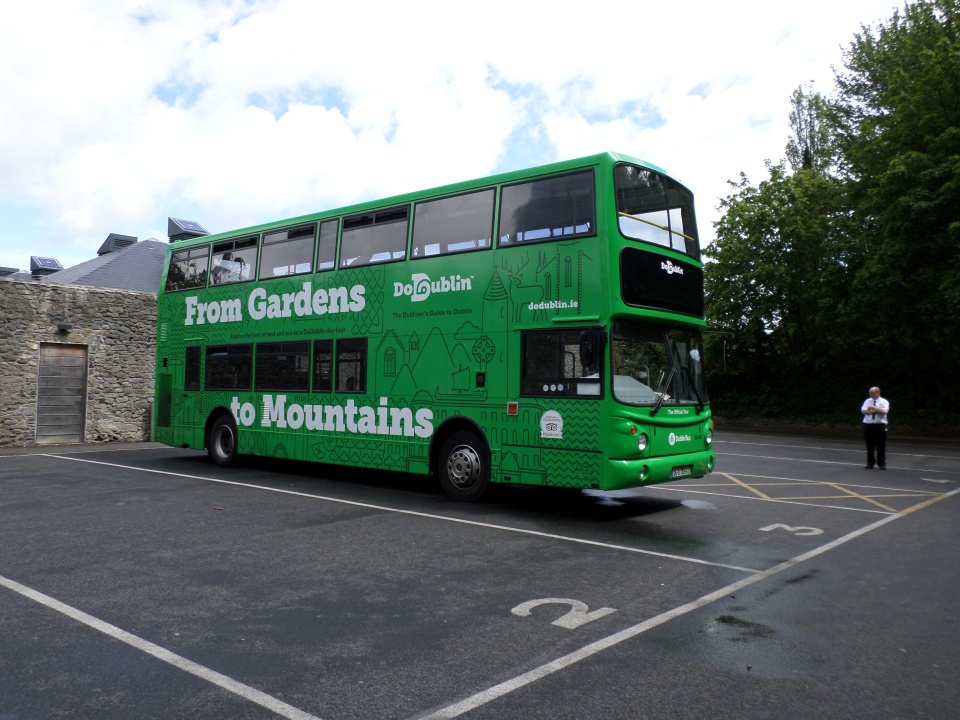
As we neared Malahide, we passed a very old Church, St Doulagh’s. Dating from the 12th Century, it is the oldest operating church in the country. It has a stone roof (not slate). Michael pointed out a small stone structure in the Churchyard as St Doulagh for leprechauns.
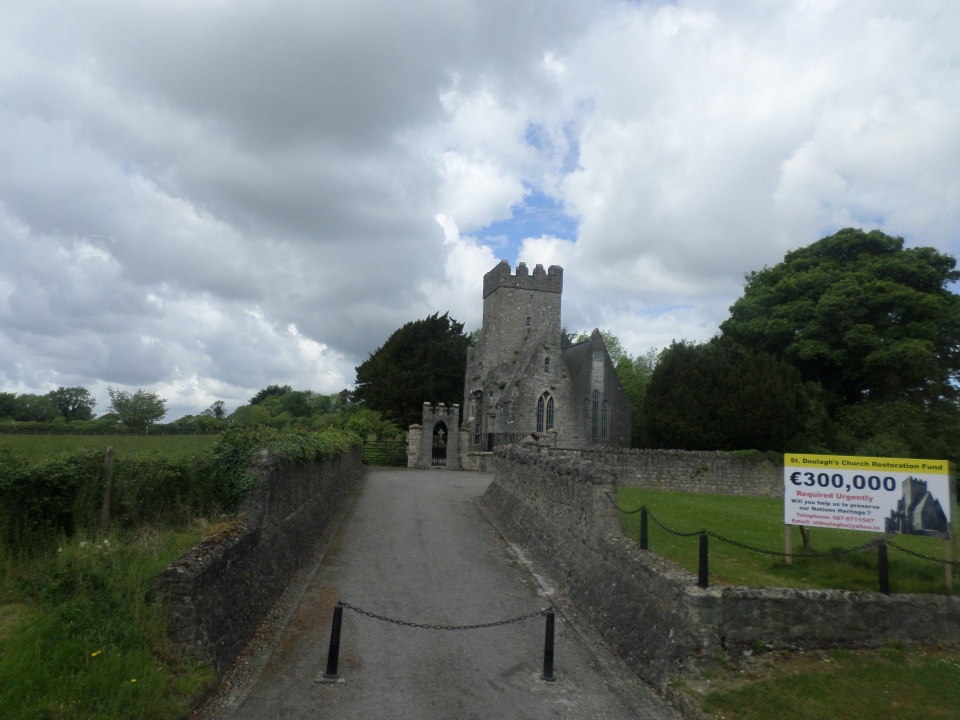
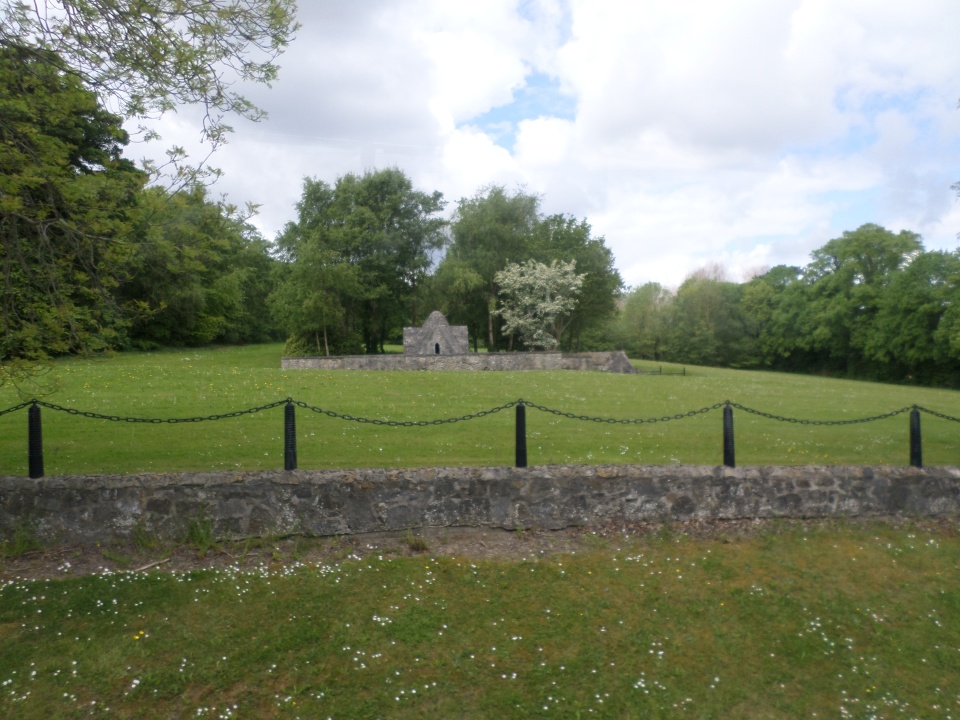
We got to Malahide Castle and were handed over to a guide to be shown over the Castle. Built by the Talbot family after the Norman invasion of Ireland during the reign of Henry II, they owned it until it had to be sold to pay death duties in the 1970’s.
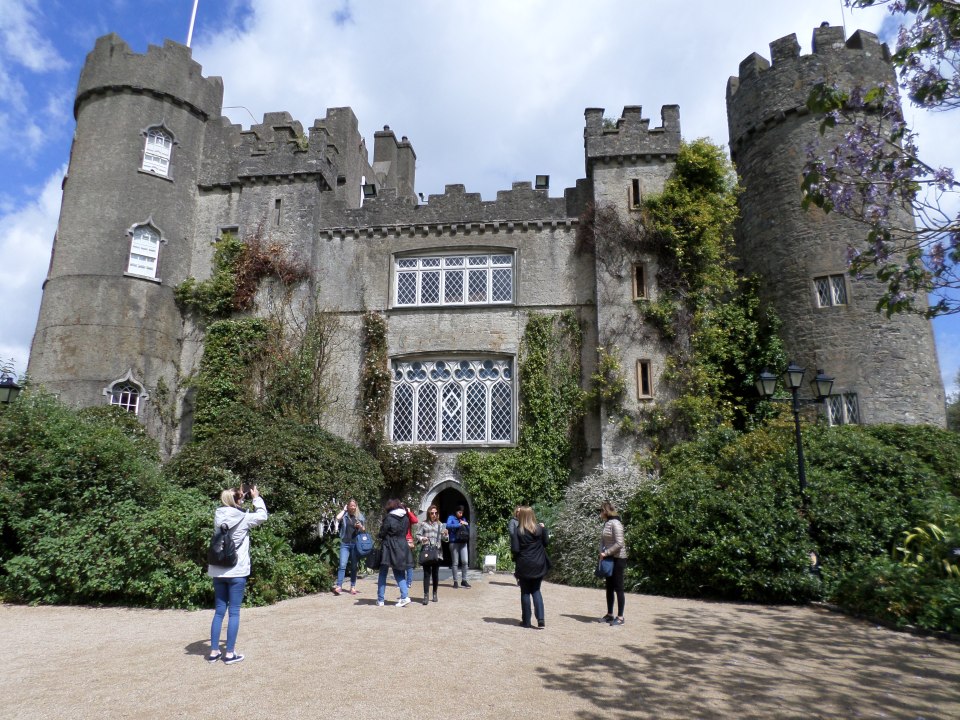
Downstairs appeared to be just whitewashed rooms, no grand staircase! We were ushered up a spiral stair to the first floor and a Reception Room panelled in oak, with a set of carved double doors reputed to open onto an alter for private masses – but no-one is sure as the key was lost 300 or more years ago and they haven’t got around to calling in a locksmith. Just imagine what might be in there! Lost treasure, bones of a forgotten priest, anything! We were also told about a chair, that from the carving on it appears to be from the 12th century, or so the guide convinced us.

The next room was decorated in Georgian style, and furnished with some items brought back from a Lord Talbot’s Grand Tour. The cornices were plastered and shaped into grapes, pineapples and bananas, all unknown in Ireland at the time (although I am not so sure about the grapes). The Guide was playacting the genial host showing off these things, and threw a line to me as Lady Talbot to support his comments about the pineapples; all I could come up with was ‘I have not tasted anything like it before, or since’.
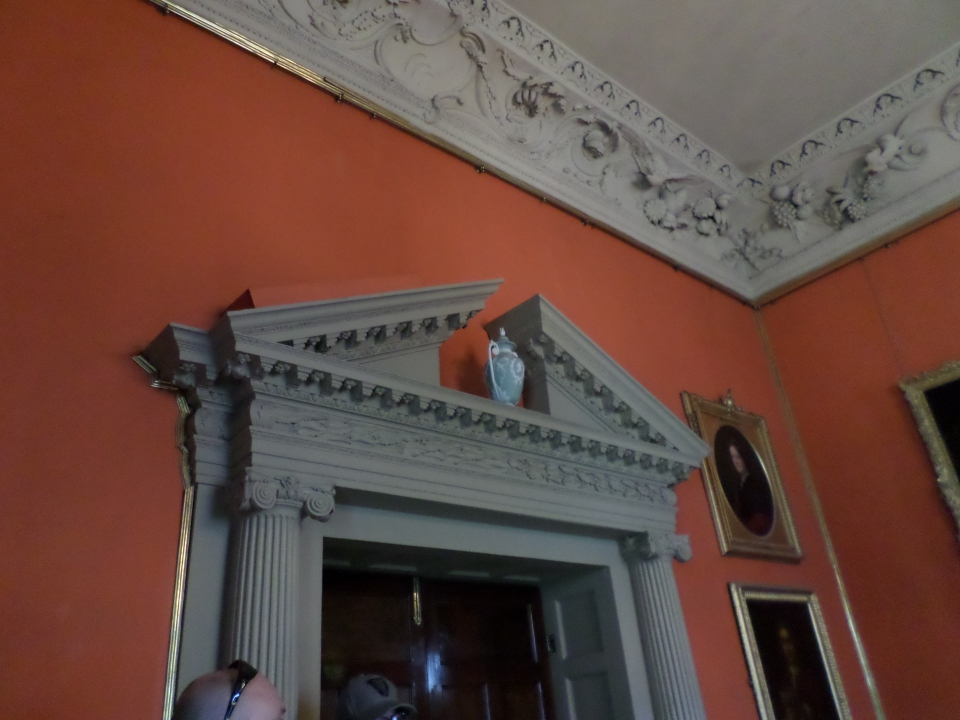
We moved on into another living room, featuring a fairly recent Chinese carpet, lovely needlepoint covered chairs, and a pair of carved tables with the Talbot lion – apparently truly unique.
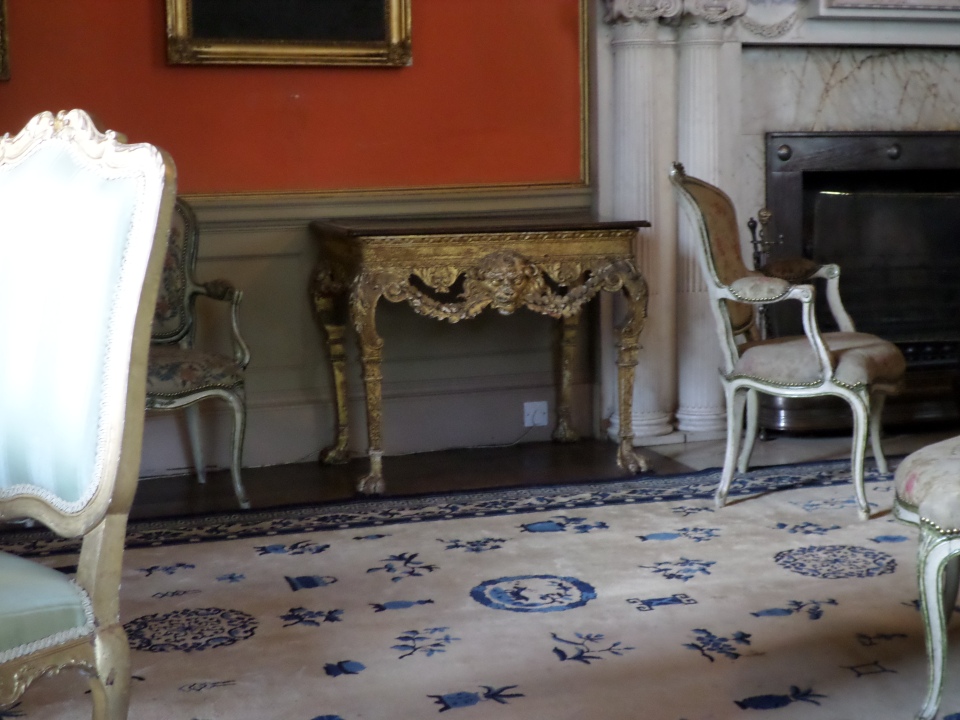
Up two floors using a cantilevered stair case, passed a portrait of the last three owners of the Castle, Milo Talbot, his mother and his sister, the one who had to sell (and anyway, she really did not want to leave Tasmania!).
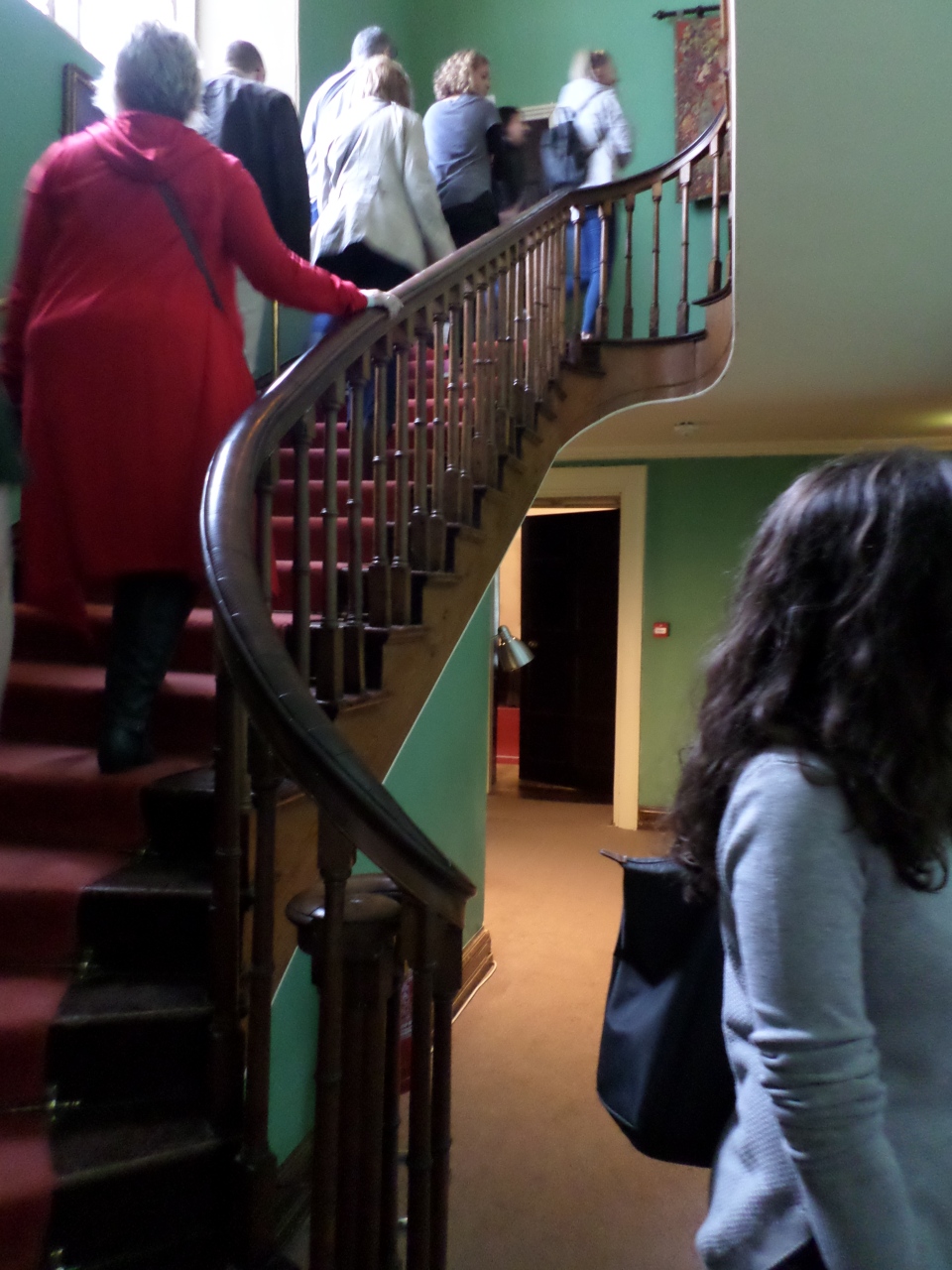

Upstairs there were two main bedrooms with dressing rooms in the towers, and a child’s room between them (or that is how they were set up). There was also a rather old-fashioned bathroom.
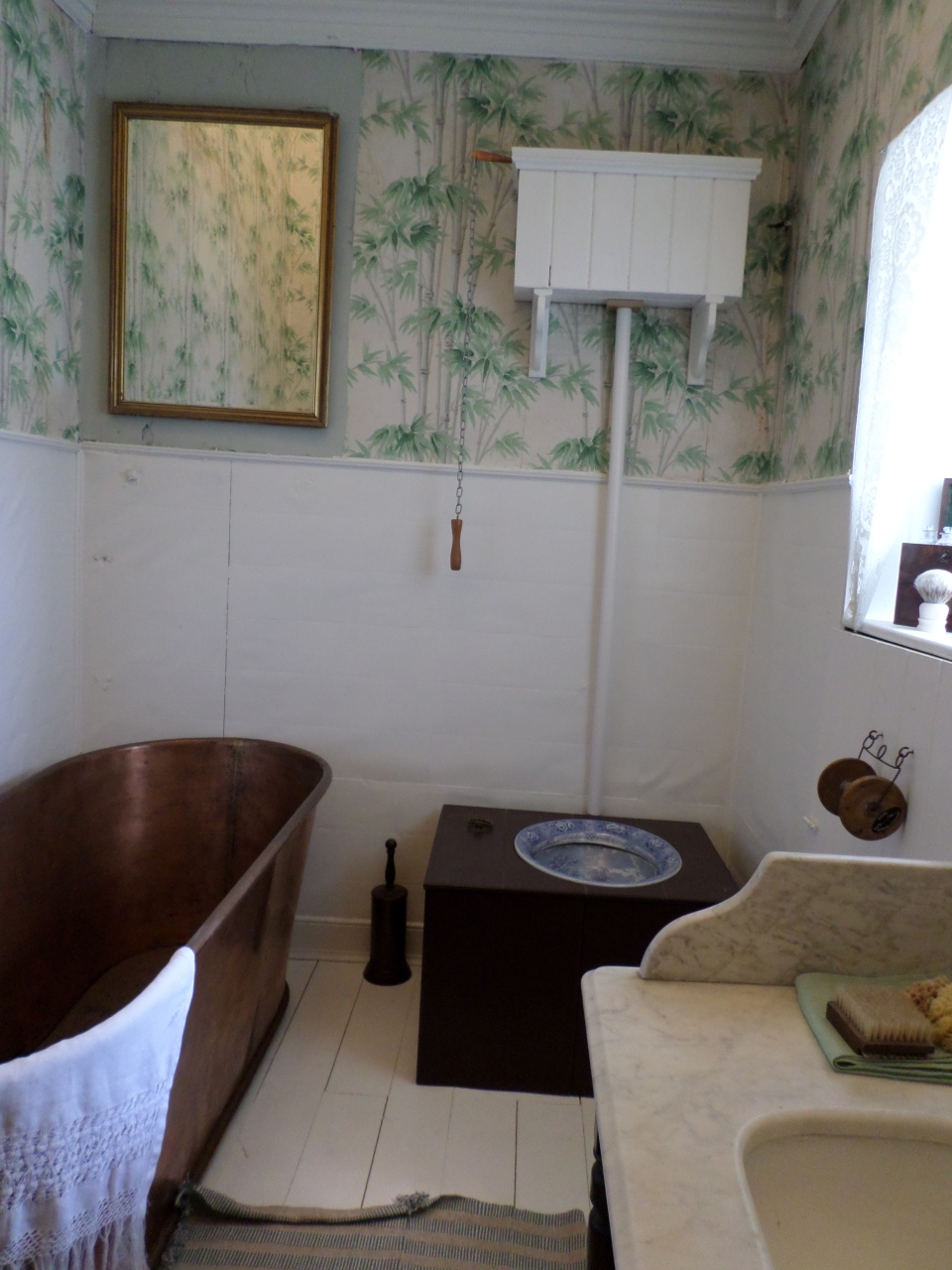
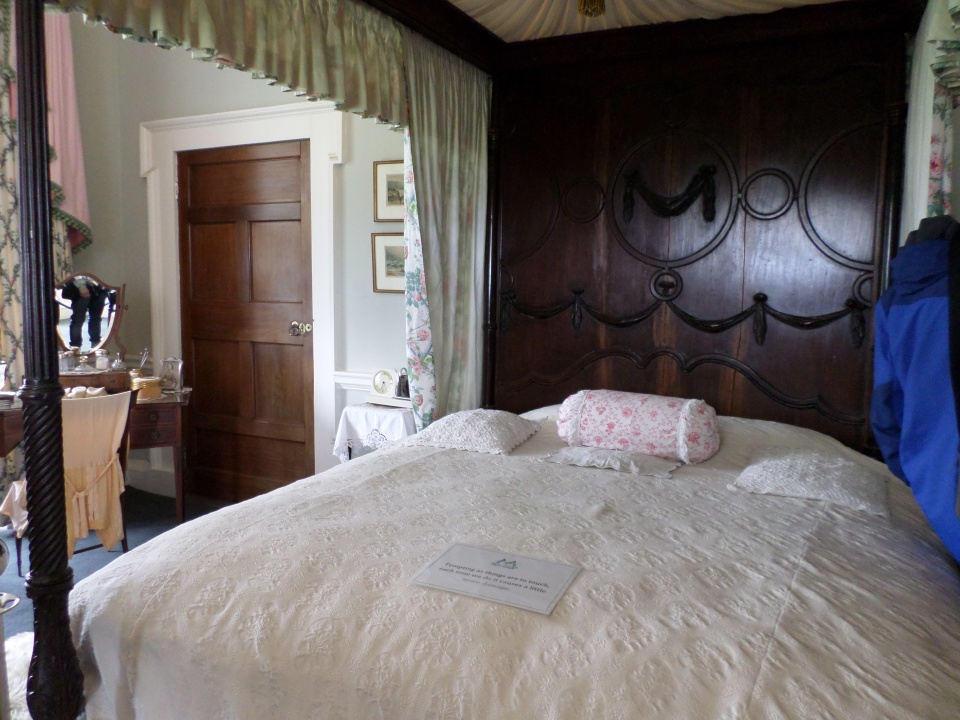
Back downstairs, our last stop was the Great Hall, complete with beamed roof and minstrel gallery. It also has a ghost: a 4 foot 3 inch musician who lived in a small room off the Hall with a narrow stair up to the Gallery and who died of a broken heart when rejected by a servant girl. Apparently he is seen quite frequently. The story that gave me the shivers was about the breakfast gathering of 15 male family members on the morning of the Battle of the Boyne. All of them were killed. Only 8 bodies could be found and were laid out on the table, where they had breakfasted only hours before. The others must have been blown apart by the cannons. The Guide reported that occasionally a visitor will pass out at the head of the table: probably as did one of the female relatives after the Battle of the Boyne.
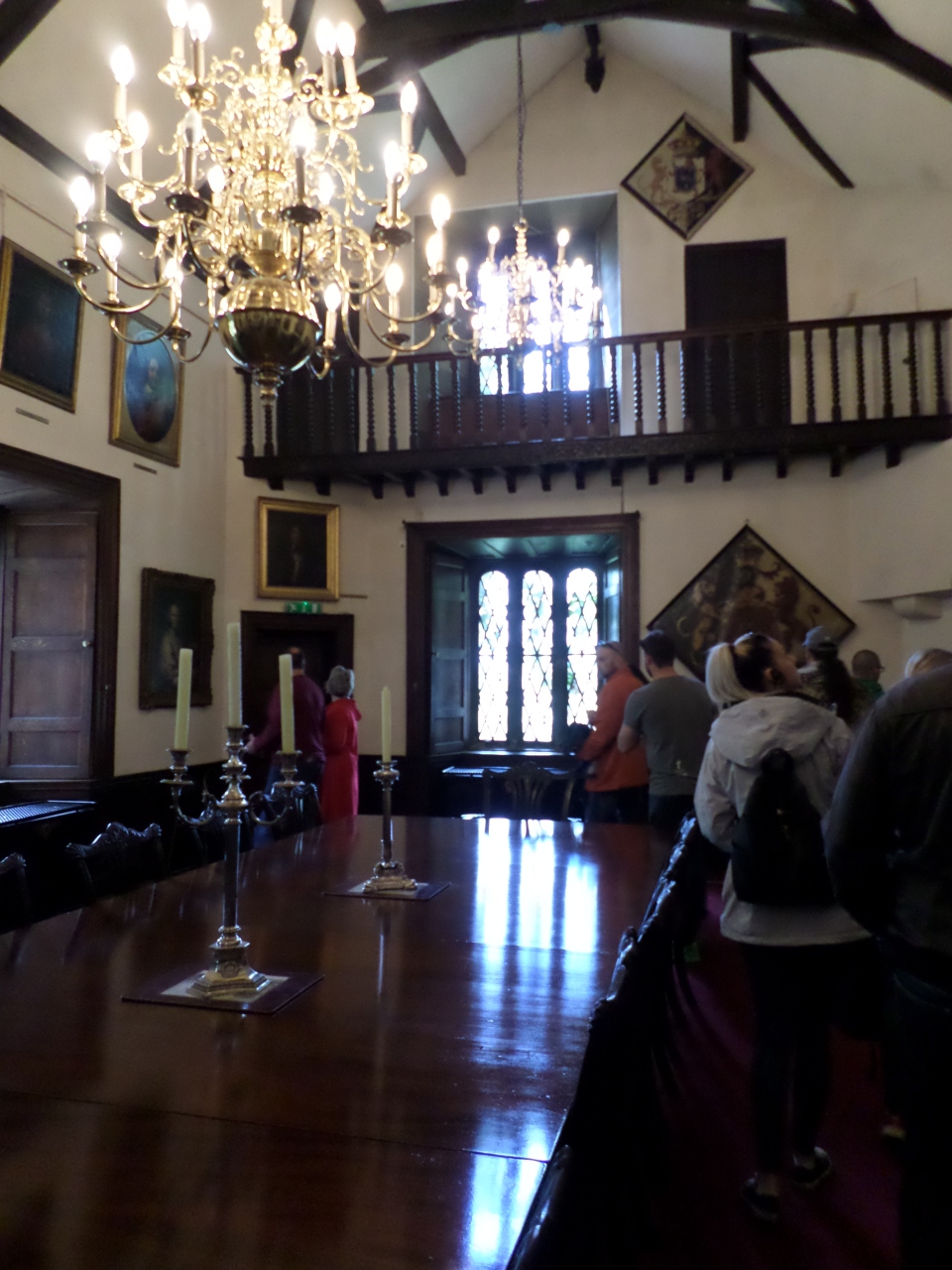

Outside, there appears to be a curved external stair down from the Great Hall (if I had it positioned correctly), and a ruined chapel between the Castle and Stables. The gateway to the stables has a pair of dogs on the pedestals. These are a kind of hound bred by the Talbots, but now extinct.

Back on the bus, we headed for Howth. On the way we passed a stretch of sand from which Charles Kingsford Smith took off in the Southern Cross on his way to Canada and a record for the crossing, or maybe it was the first non-stop crossing of the Atlantic.

Howth is the name of the peninsula on which Howth village is located. It was an island, with silt and sand gradually building up until the area is now connected to the mainland by a relatively narrow neck of land. It is wide enough for the road and rail line. The area is popular with Dubliners having a number of walks and a golf course. On the south side, there are grand views and commensurately expensive houses.
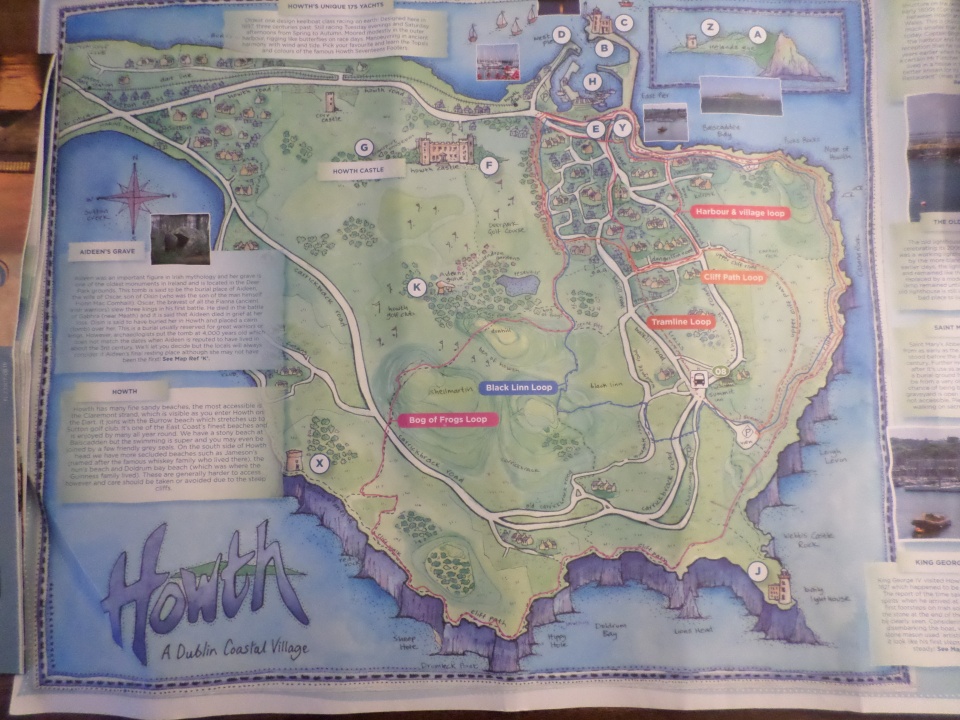
We had about 90 minutes to spend in Howth, so I wandered round the harbour to the sea wall and walked out about half way. Off the end of the wall is an island, the Eye of Ireland. A busker set up with a trumpet, but it seemed a long way from frequent traffic. Looking back towards Howth, I noted a Martello Tower up on a rise, there was one on the island as well, and we had passed one on the way to Howth. Built a few hundred years ago to repel the attentions of the French, who never showed up, they are strung along the coastline. Within the village itself, the ruins of an Abbey can also be seen.
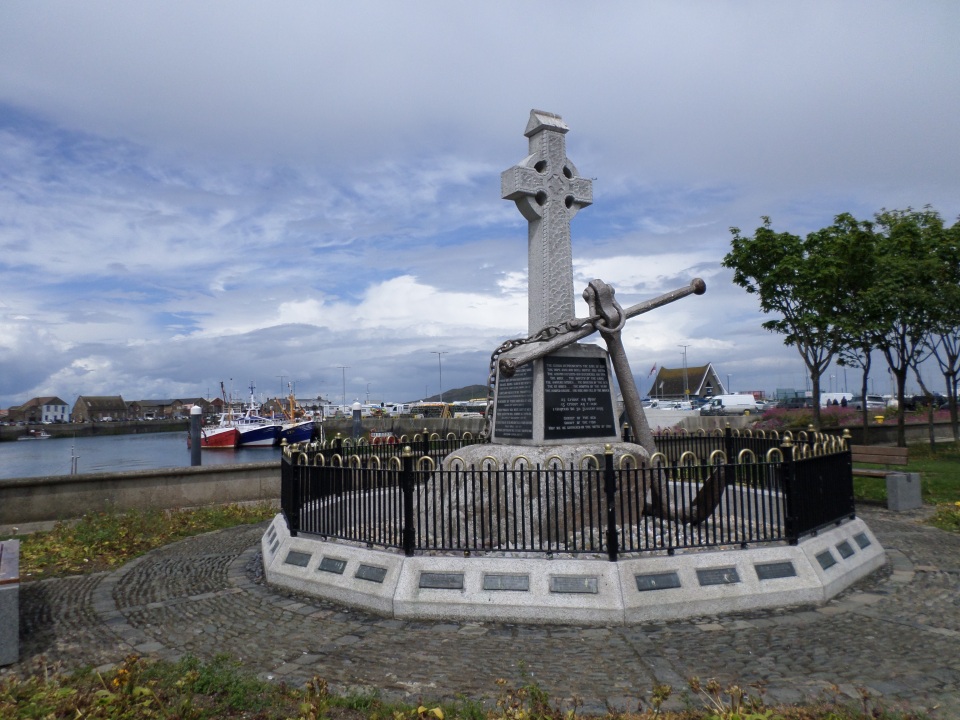
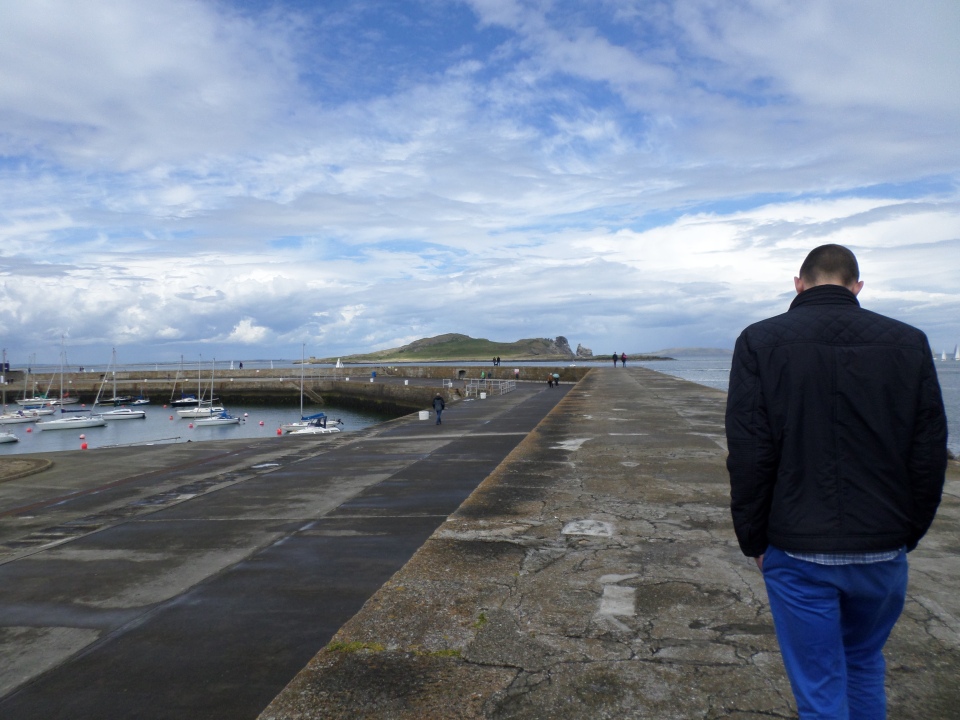
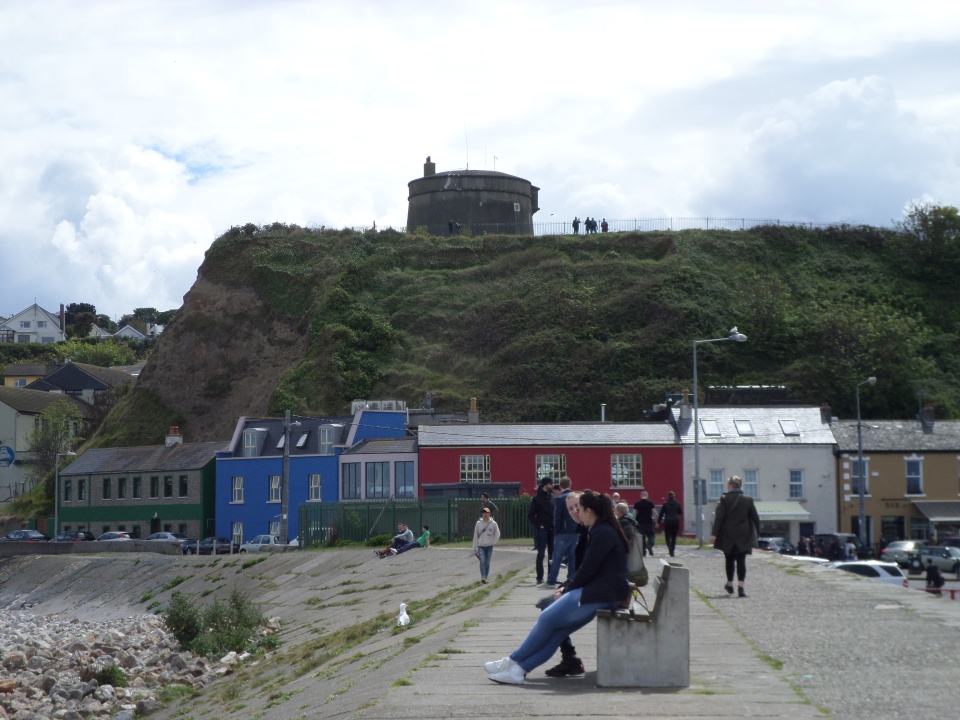
I bought a box of fish and chips, as seemed appropriate for lunch in a seaside village, and ate on a bench looking into the marina. Very filling! Then I thought that I had better get back to the bus, and arrived with a few minutes to spare, long enough to see a couple of seals bobbing up in the harbour.
The driver took us round the peninsula so we got a good look at the bay of Dublin, and at Baily Lighthouse, on a point at the south east corner. He stopped at a lay-by so that we could photograph the view of the bay and Sugarloaf Mountain in the Wicklow Mountains beyond.
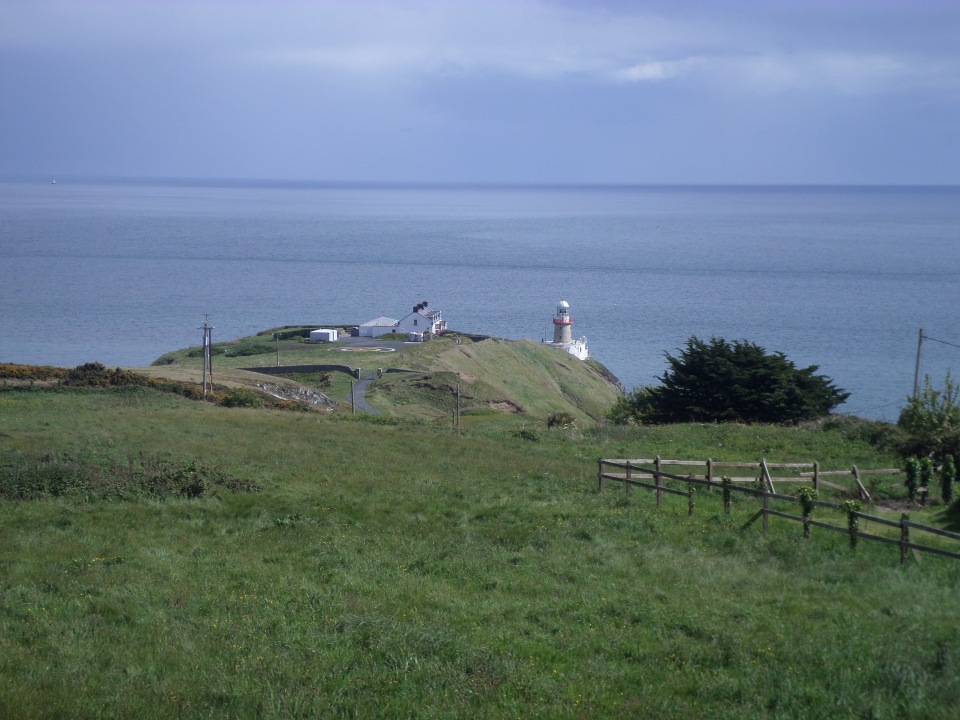
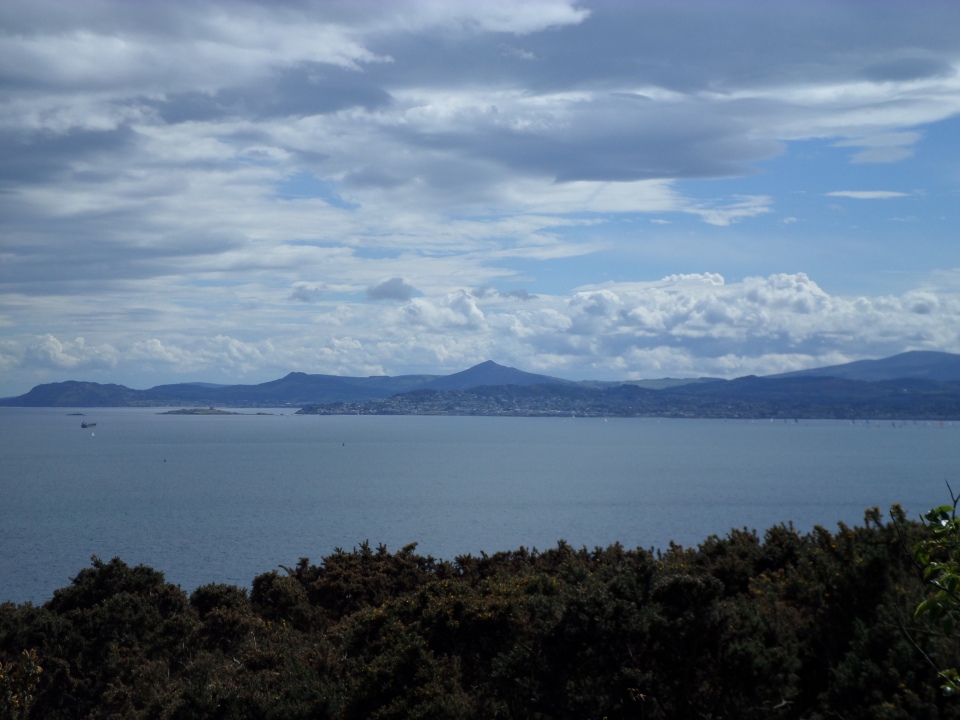
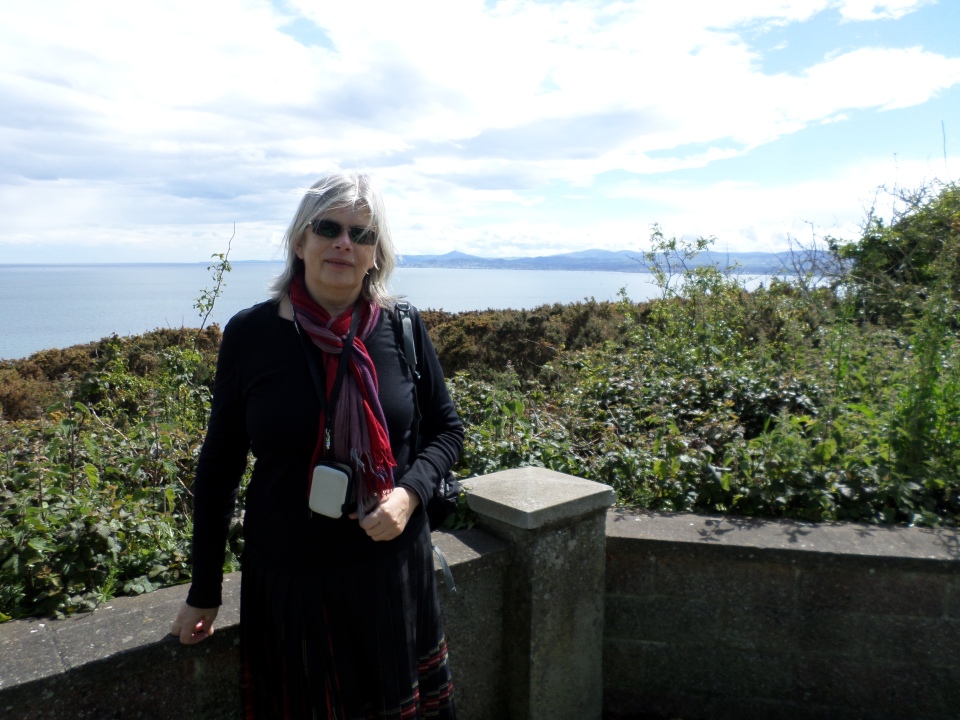
The return drive seemed quicker than the drive out, and we were unloaded on the south side near Trinity College. I walked back to Christchurch through the Temple Bar area, taking a few photos of things on the way.
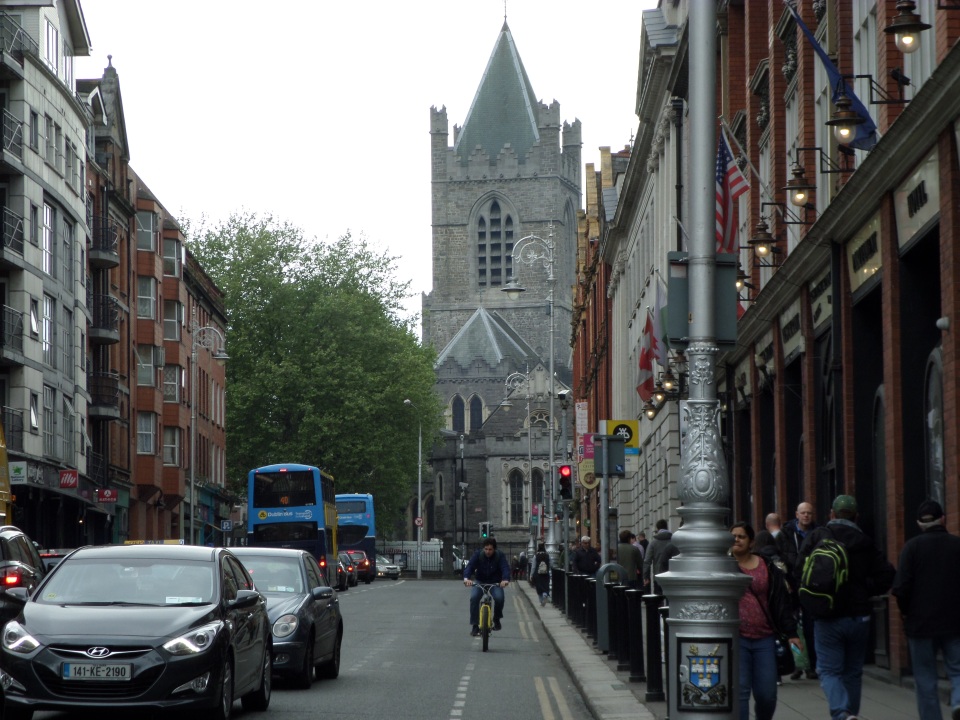
That’s all for today!